First world war images Black & White Stock Photos
(1,019)See first world war images stock video clipsFirst world war images Black & White Stock Photos
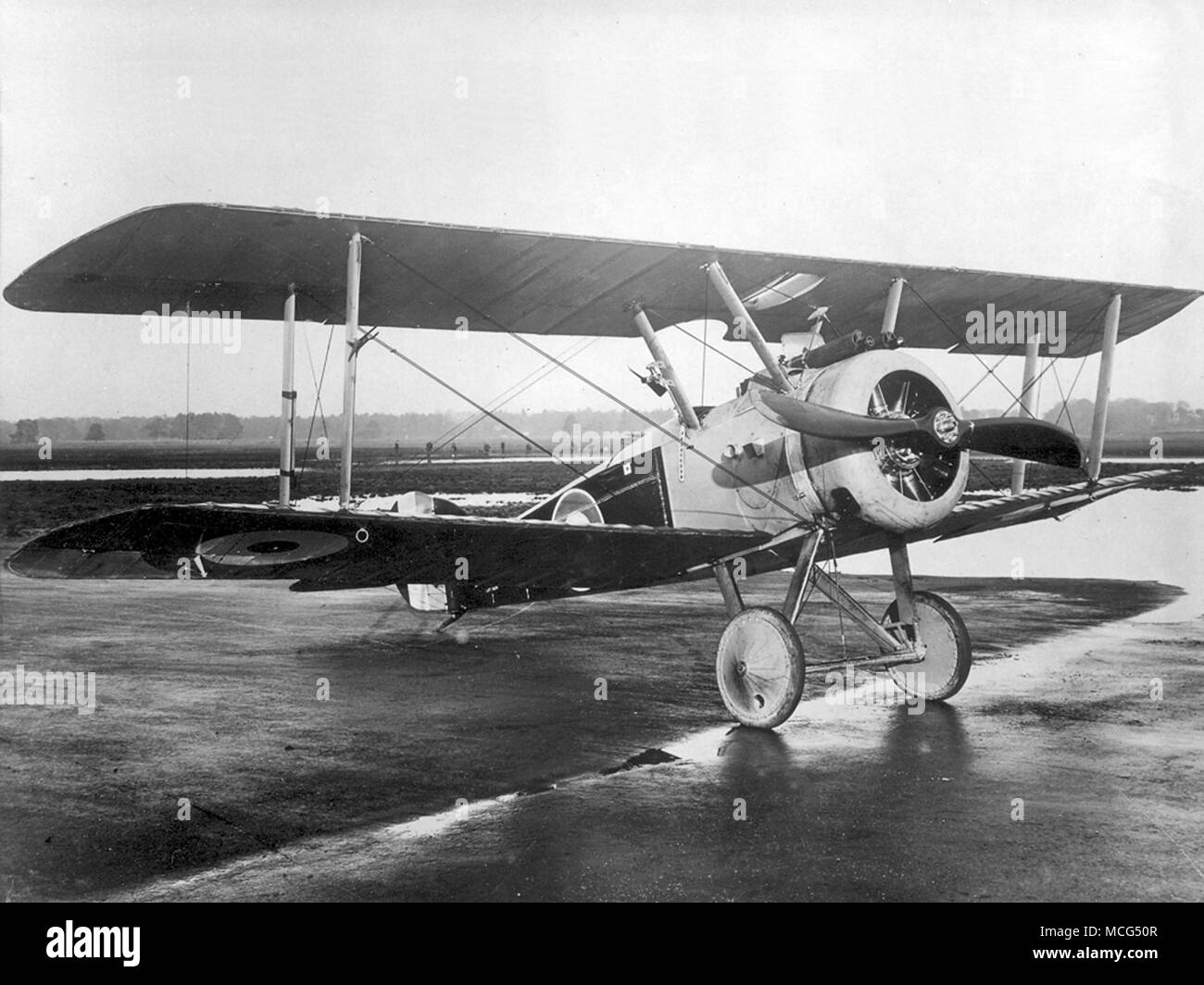 Sopwith Camel was a British First World War single-seat biplane fighter aircraft introduced on the Western Front in 1917 Stock Photohttps://www.alamy.com/image-license-details/?v=1https://www.alamy.com/sopwith-camel-was-a-british-first-world-war-single-seat-biplane-fighter-aircraft-introduced-on-the-western-front-in-1917-image179834727.html
Sopwith Camel was a British First World War single-seat biplane fighter aircraft introduced on the Western Front in 1917 Stock Photohttps://www.alamy.com/image-license-details/?v=1https://www.alamy.com/sopwith-camel-was-a-british-first-world-war-single-seat-biplane-fighter-aircraft-introduced-on-the-western-front-in-1917-image179834727.htmlRMMCG50R–Sopwith Camel was a British First World War single-seat biplane fighter aircraft introduced on the Western Front in 1917
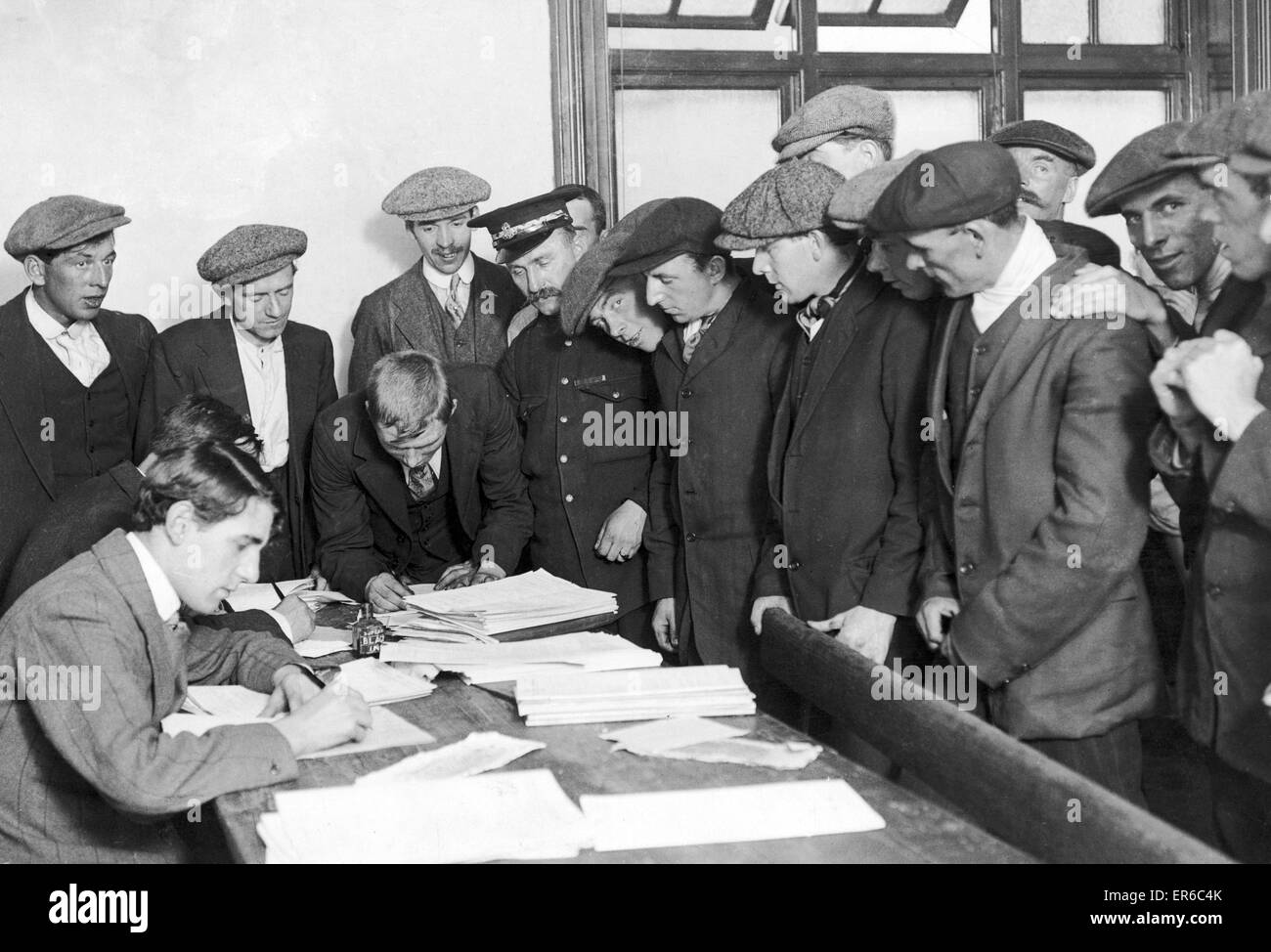 Friends joining up at the beginning of the First World War. Following the outbreak of war in August 1914 the newly appointed Secretary for War Lord Kitchener issued his first call to arms. This was for 100,000 volunteers aged between 19 and 30. The call t Stock Photohttps://www.alamy.com/image-license-details/?v=1https://www.alamy.com/stock-photo-friends-joining-up-at-the-beginning-of-the-first-world-war-following-83119811.html
Friends joining up at the beginning of the First World War. Following the outbreak of war in August 1914 the newly appointed Secretary for War Lord Kitchener issued his first call to arms. This was for 100,000 volunteers aged between 19 and 30. The call t Stock Photohttps://www.alamy.com/image-license-details/?v=1https://www.alamy.com/stock-photo-friends-joining-up-at-the-beginning-of-the-first-world-war-following-83119811.htmlRMER6C4K–Friends joining up at the beginning of the First World War. Following the outbreak of war in August 1914 the newly appointed Secretary for War Lord Kitchener issued his first call to arms. This was for 100,000 volunteers aged between 19 and 30. The call t
 First World War poster, Bubb Kuyper, 27-10-1997, Whizgle Dutch News: Historic Images Tailored for the Future. Explore The Netherlands past with modern perspectives through Dutch agency imagery. Bridging yesterday's events with tomorrow's insights. Embark on a timeless journey with stories that shape our future. Stock Photohttps://www.alamy.com/image-license-details/?v=1https://www.alamy.com/first-world-war-poster-bubb-kuyper-27-10-1997-whizgle-dutch-news-historic-images-tailored-for-the-future-explore-the-netherlands-past-with-modern-perspectives-through-dutch-agency-imagery-bridging-yesterdays-events-with-tomorrows-insights-embark-on-a-timeless-journey-with-stories-that-shape-our-future-image616621038.html
First World War poster, Bubb Kuyper, 27-10-1997, Whizgle Dutch News: Historic Images Tailored for the Future. Explore The Netherlands past with modern perspectives through Dutch agency imagery. Bridging yesterday's events with tomorrow's insights. Embark on a timeless journey with stories that shape our future. Stock Photohttps://www.alamy.com/image-license-details/?v=1https://www.alamy.com/first-world-war-poster-bubb-kuyper-27-10-1997-whizgle-dutch-news-historic-images-tailored-for-the-future-explore-the-netherlands-past-with-modern-perspectives-through-dutch-agency-imagery-bridging-yesterdays-events-with-tomorrows-insights-embark-on-a-timeless-journey-with-stories-that-shape-our-future-image616621038.htmlRM2XR5EBX–First World War poster, Bubb Kuyper, 27-10-1997, Whizgle Dutch News: Historic Images Tailored for the Future. Explore The Netherlands past with modern perspectives through Dutch agency imagery. Bridging yesterday's events with tomorrow's insights. Embark on a timeless journey with stories that shape our future.
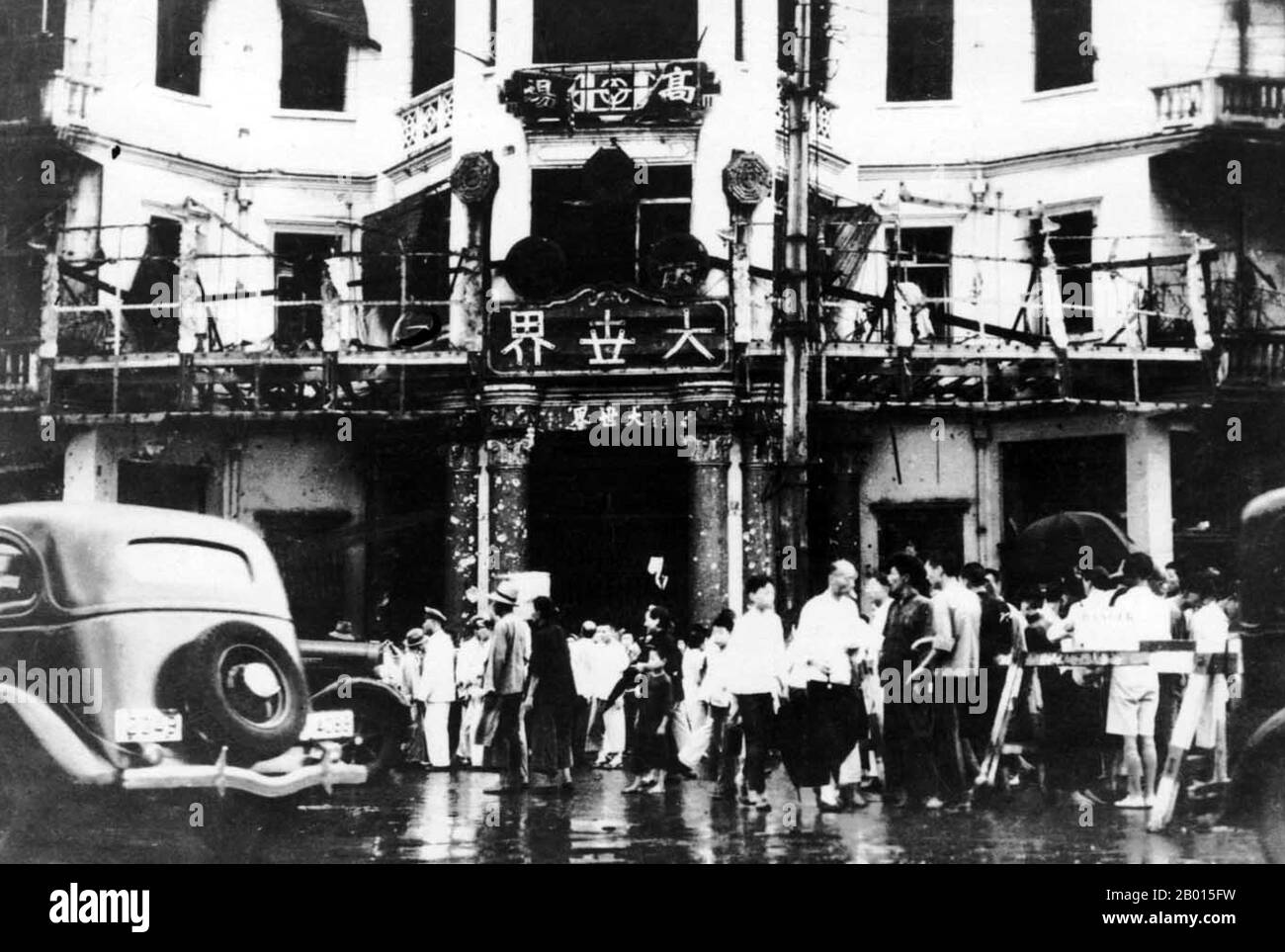 China: The bomb damaged entrance to The Great World entertainment complex, a consequence of the Battle of Shanghai (1937). The Great World Entertainment Centre, facing onto the wide intersection of Yanan Lu and Xizang Lu, was the largest and most infamous entertainment complex of old Shanghai, with music, films, opera, magic, bars, brothels and fortune-tellers. The Battle of Shanghai (1937), known in Chinese as Battle of Songhu, was the first of the twenty-two major engagements fought between the the Republic of China and the Empire of Japan during the Second Sino-Japanese War. Stock Photohttps://www.alamy.com/image-license-details/?v=1https://www.alamy.com/china-the-bomb-damaged-entrance-to-the-great-world-entertainment-complex-a-consequence-of-the-battle-of-shanghai-1937-the-great-world-entertainment-centre-facing-onto-the-wide-intersection-of-yanan-lu-and-xizang-lu-was-the-largest-and-most-infamous-entertainment-complex-of-old-shanghai-with-music-films-opera-magic-bars-brothels-and-fortune-tellers-the-battle-of-shanghai-1937-known-in-chinese-as-battle-of-songhu-was-the-first-of-the-twenty-two-major-engagements-fought-between-the-the-republic-of-china-and-the-empire-of-japan-during-the-second-sino-japanese-war-image344233677.html
China: The bomb damaged entrance to The Great World entertainment complex, a consequence of the Battle of Shanghai (1937). The Great World Entertainment Centre, facing onto the wide intersection of Yanan Lu and Xizang Lu, was the largest and most infamous entertainment complex of old Shanghai, with music, films, opera, magic, bars, brothels and fortune-tellers. The Battle of Shanghai (1937), known in Chinese as Battle of Songhu, was the first of the twenty-two major engagements fought between the the Republic of China and the Empire of Japan during the Second Sino-Japanese War. Stock Photohttps://www.alamy.com/image-license-details/?v=1https://www.alamy.com/china-the-bomb-damaged-entrance-to-the-great-world-entertainment-complex-a-consequence-of-the-battle-of-shanghai-1937-the-great-world-entertainment-centre-facing-onto-the-wide-intersection-of-yanan-lu-and-xizang-lu-was-the-largest-and-most-infamous-entertainment-complex-of-old-shanghai-with-music-films-opera-magic-bars-brothels-and-fortune-tellers-the-battle-of-shanghai-1937-known-in-chinese-as-battle-of-songhu-was-the-first-of-the-twenty-two-major-engagements-fought-between-the-the-republic-of-china-and-the-empire-of-japan-during-the-second-sino-japanese-war-image344233677.htmlRM2B015FW–China: The bomb damaged entrance to The Great World entertainment complex, a consequence of the Battle of Shanghai (1937). The Great World Entertainment Centre, facing onto the wide intersection of Yanan Lu and Xizang Lu, was the largest and most infamous entertainment complex of old Shanghai, with music, films, opera, magic, bars, brothels and fortune-tellers. The Battle of Shanghai (1937), known in Chinese as Battle of Songhu, was the first of the twenty-two major engagements fought between the the Republic of China and the Empire of Japan during the Second Sino-Japanese War.
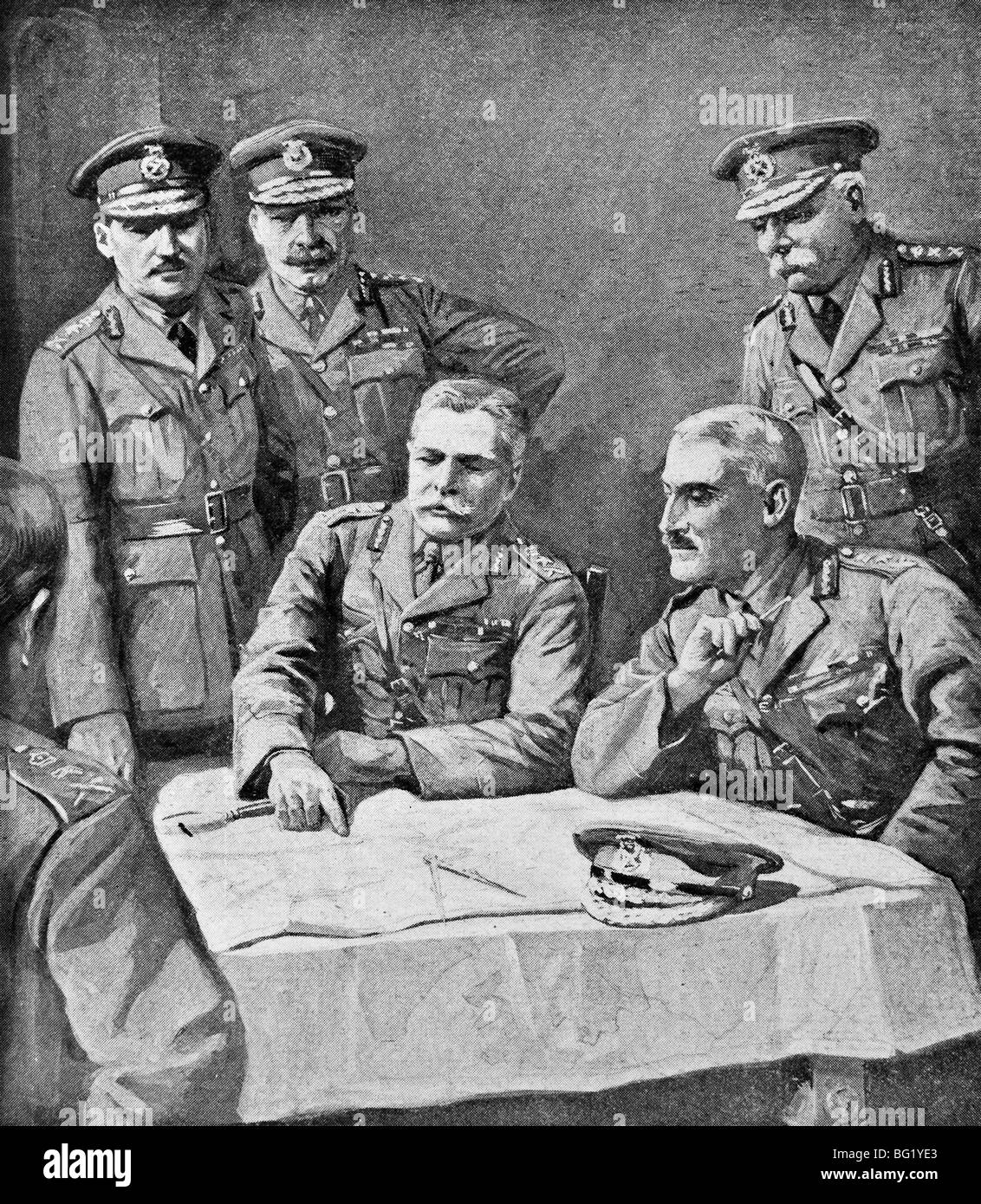 Contemporary World War One illustration of Field Marshal Douglas Haig and British Generals planning the Third Battle of Ypres. Stock Photohttps://www.alamy.com/image-license-details/?v=1https://www.alamy.com/stock-photo-contemporary-world-war-one-illustration-of-field-marshal-douglas-haig-27088379.html
Contemporary World War One illustration of Field Marshal Douglas Haig and British Generals planning the Third Battle of Ypres. Stock Photohttps://www.alamy.com/image-license-details/?v=1https://www.alamy.com/stock-photo-contemporary-world-war-one-illustration-of-field-marshal-douglas-haig-27088379.htmlRMBG1YE3–Contemporary World War One illustration of Field Marshal Douglas Haig and British Generals planning the Third Battle of Ypres.
 Nurse using Carrel-Dakin Antiseptic Solution on wounded Leg of American Soldier, one of the most notable Productions of the War, greatly reducing Mortality from Wounds, American Red Cross Hospital, Evreux, France, Lewis Wickes Hine, American National Red Cross Photograph Collection, August 1918 Stock Photohttps://www.alamy.com/image-license-details/?v=1https://www.alamy.com/nurse-using-carrel-dakin-antiseptic-solution-on-wounded-leg-of-american-soldier-one-of-the-most-notable-productions-of-the-war-greatly-reducing-mortality-from-wounds-american-red-cross-hospital-evreux-france-lewis-wickes-hine-american-national-red-cross-photograph-collection-august-1918-image353481417.html
Nurse using Carrel-Dakin Antiseptic Solution on wounded Leg of American Soldier, one of the most notable Productions of the War, greatly reducing Mortality from Wounds, American Red Cross Hospital, Evreux, France, Lewis Wickes Hine, American National Red Cross Photograph Collection, August 1918 Stock Photohttps://www.alamy.com/image-license-details/?v=1https://www.alamy.com/nurse-using-carrel-dakin-antiseptic-solution-on-wounded-leg-of-american-soldier-one-of-the-most-notable-productions-of-the-war-greatly-reducing-mortality-from-wounds-american-red-cross-hospital-evreux-france-lewis-wickes-hine-american-national-red-cross-photograph-collection-august-1918-image353481417.htmlRM2BF2D49–Nurse using Carrel-Dakin Antiseptic Solution on wounded Leg of American Soldier, one of the most notable Productions of the War, greatly reducing Mortality from Wounds, American Red Cross Hospital, Evreux, France, Lewis Wickes Hine, American National Red Cross Photograph Collection, August 1918
 WWI German observer in Gotha bomber aircraft equipped with reconnaissance camera for vertical aerial photography in 1915 during World War One Stock Photohttps://www.alamy.com/image-license-details/?v=1https://www.alamy.com/wwi-german-observer-in-gotha-bomber-aircraft-equipped-with-reconnaissance-camera-for-vertical-aerial-photography-in-1915-during-world-war-one-image620517539.html
WWI German observer in Gotha bomber aircraft equipped with reconnaissance camera for vertical aerial photography in 1915 during World War One Stock Photohttps://www.alamy.com/image-license-details/?v=1https://www.alamy.com/wwi-german-observer-in-gotha-bomber-aircraft-equipped-with-reconnaissance-camera-for-vertical-aerial-photography-in-1915-during-world-war-one-image620517539.htmlRM2Y1F0CK–WWI German observer in Gotha bomber aircraft equipped with reconnaissance camera for vertical aerial photography in 1915 during World War One
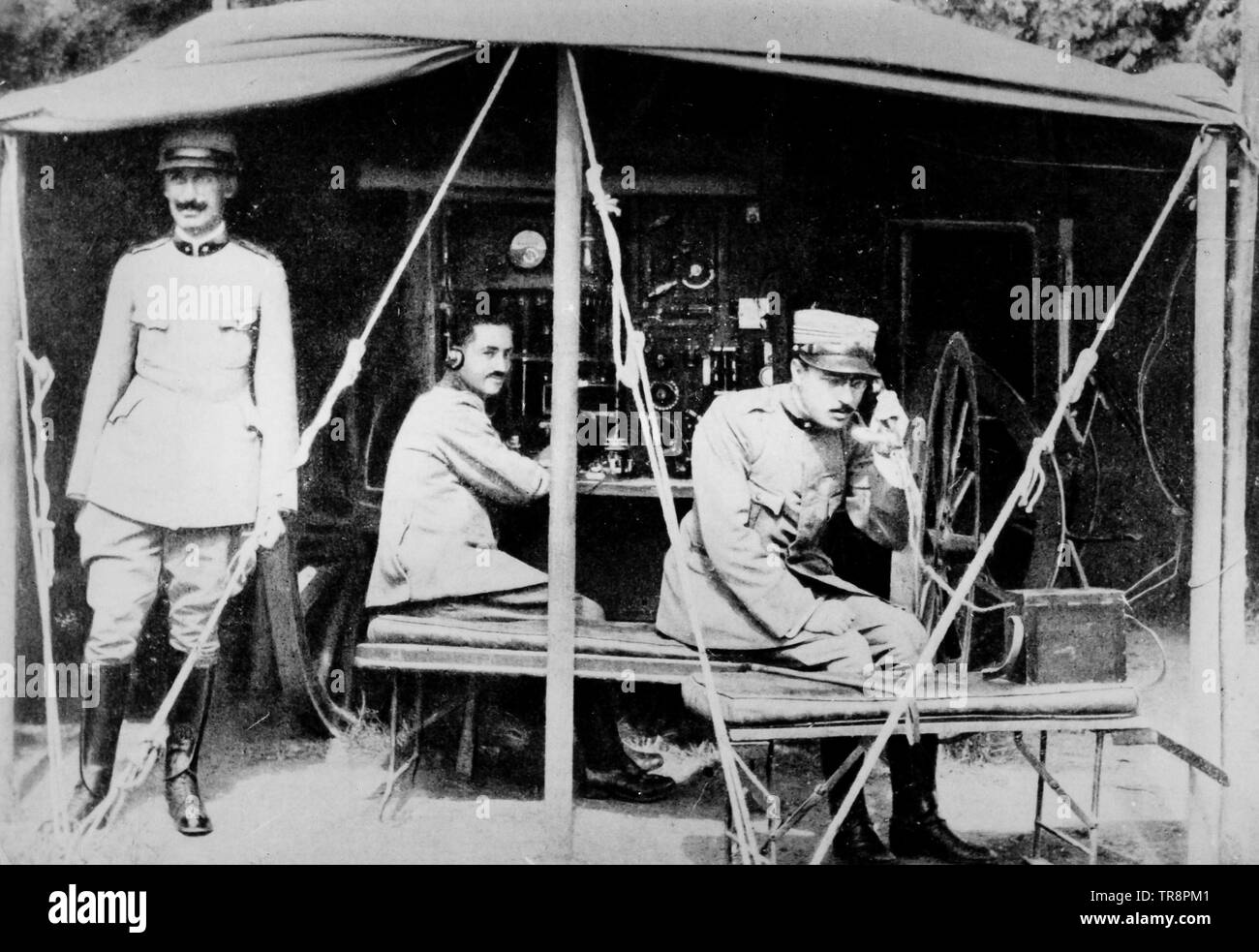 radiotelegraph, first world war Stock Photohttps://www.alamy.com/image-license-details/?v=1https://www.alamy.com/radiotelegraph-first-world-war-image255275665.html
radiotelegraph, first world war Stock Photohttps://www.alamy.com/image-license-details/?v=1https://www.alamy.com/radiotelegraph-first-world-war-image255275665.htmlRMTR8PM1–radiotelegraph, first world war
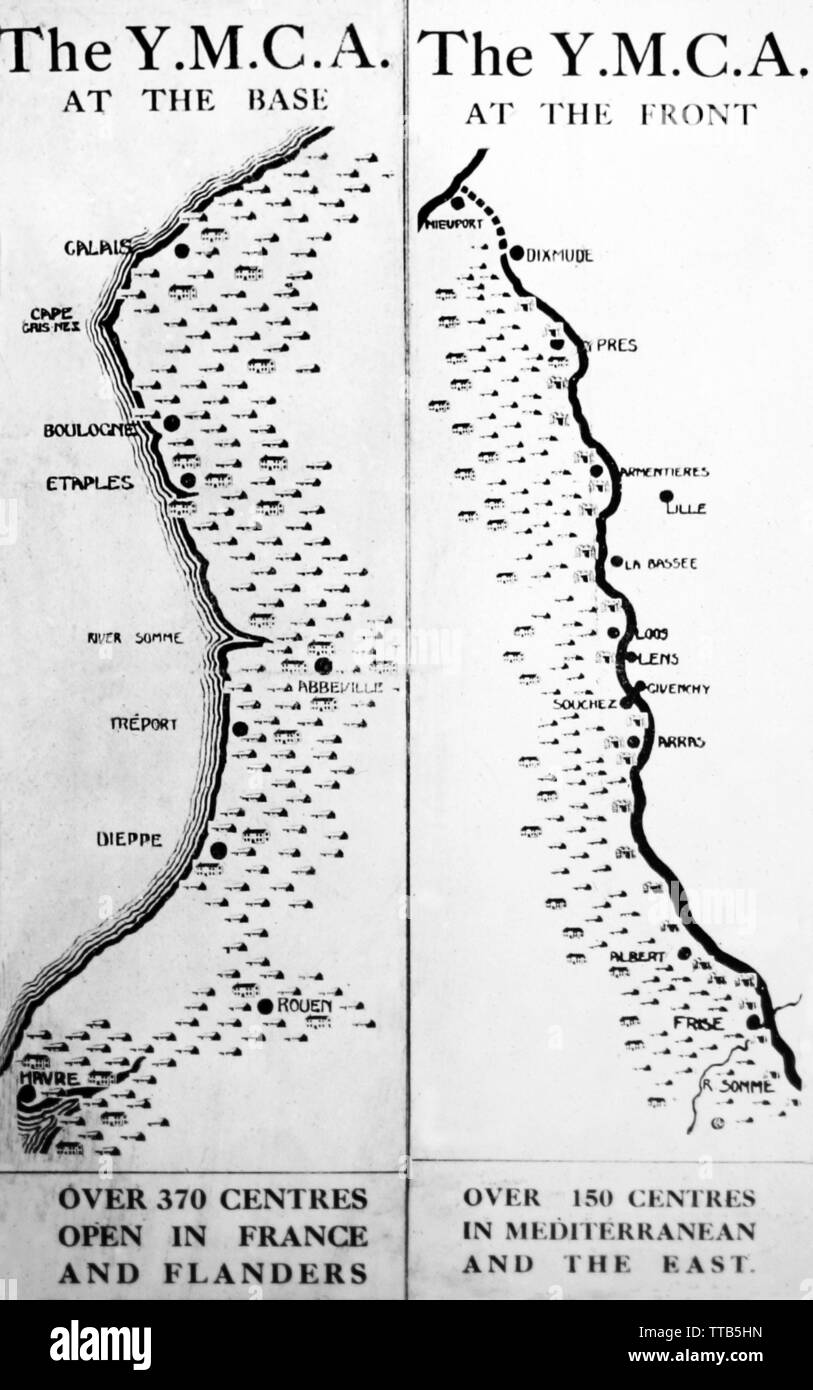 YMCA map, WW1 Stock Photohttps://www.alamy.com/image-license-details/?v=1https://www.alamy.com/ymca-map-ww1-image255942785.html
YMCA map, WW1 Stock Photohttps://www.alamy.com/image-license-details/?v=1https://www.alamy.com/ymca-map-ww1-image255942785.htmlRFTTB5HN–YMCA map, WW1
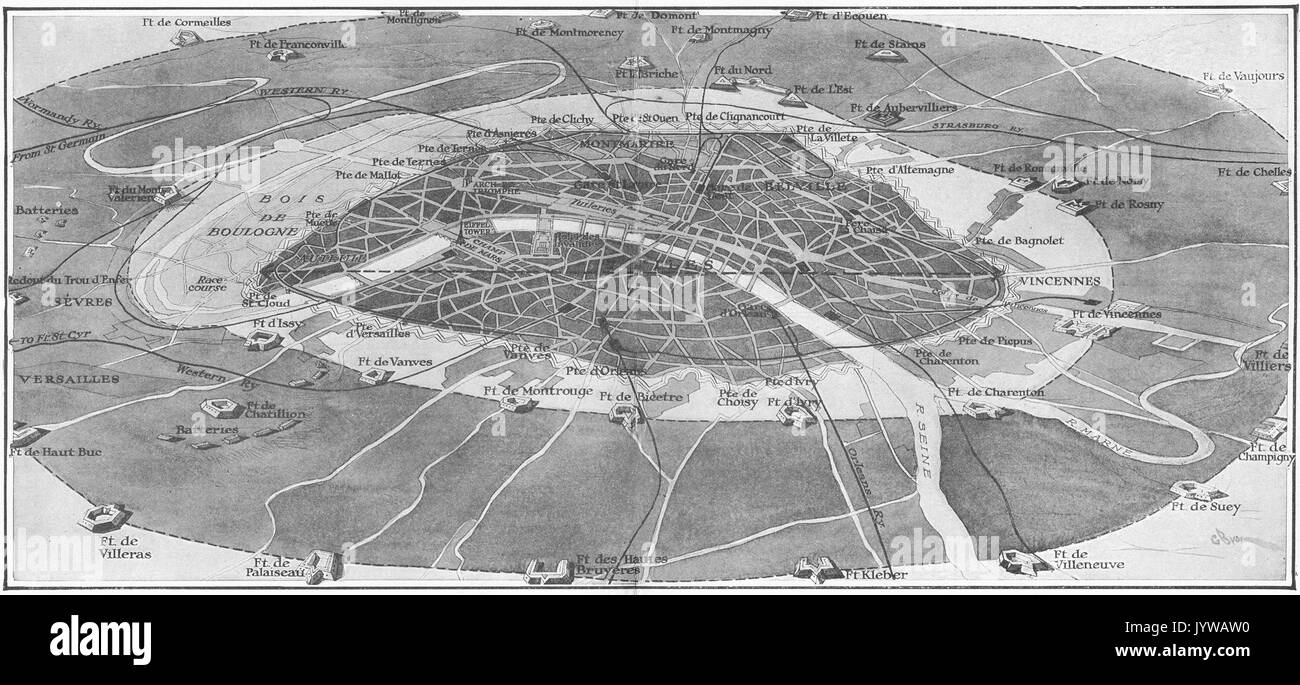 Map of the ring of forts around Paris, WW1 Stock Photohttps://www.alamy.com/image-license-details/?v=1https://www.alamy.com/map-of-the-ring-of-forts-around-paris-ww1-image154835996.html
Map of the ring of forts around Paris, WW1 Stock Photohttps://www.alamy.com/image-license-details/?v=1https://www.alamy.com/map-of-the-ring-of-forts-around-paris-ww1-image154835996.htmlRMJYWAW0–Map of the ring of forts around Paris, WW1
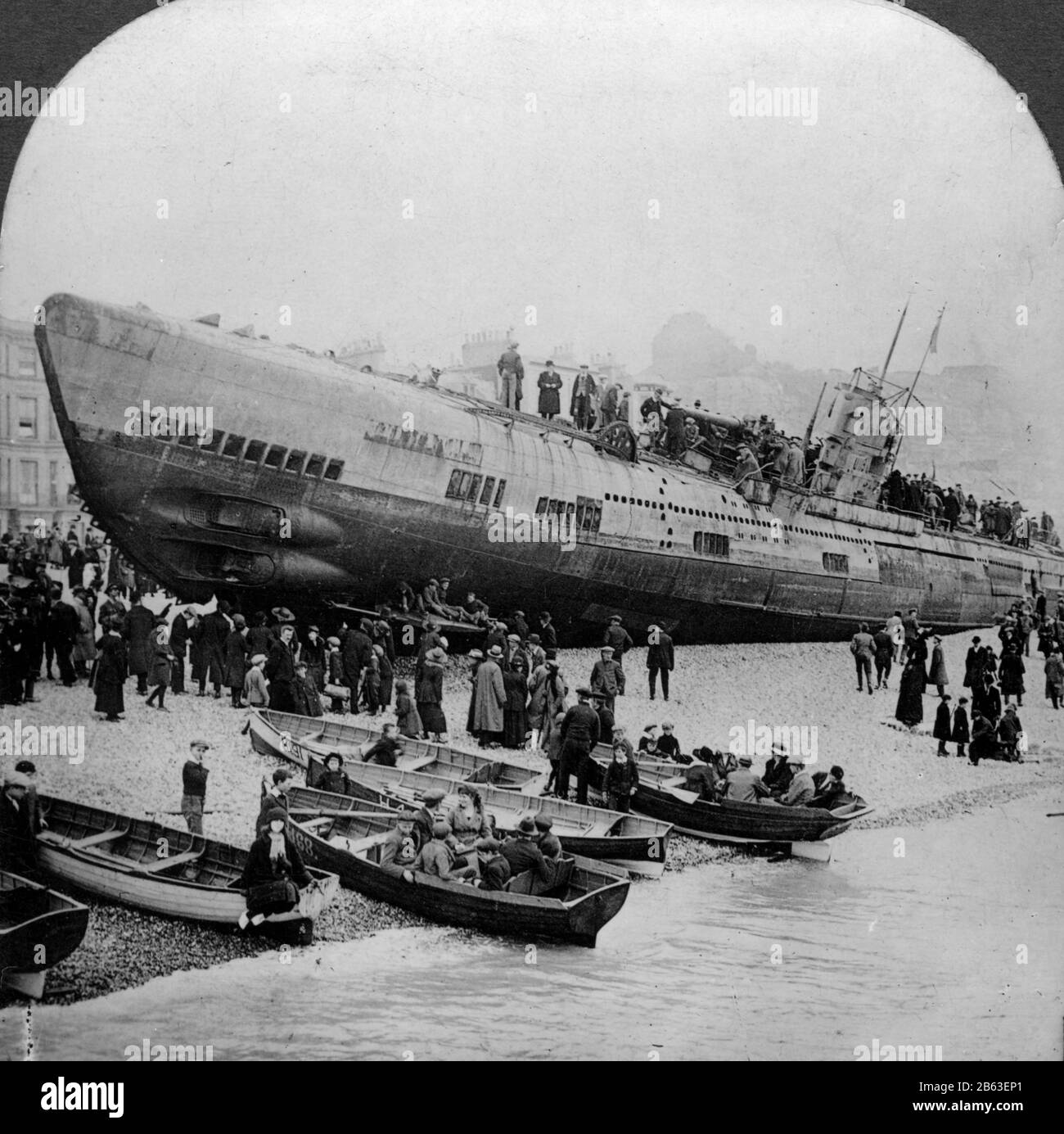 U-Boat from Germany, grounded after it surrendered during World War I, the late 1910s. This 'assassin of the sea' ran ashore on the south coast of England. After some demolition had begun, local folk and tourists came to see it and climb up top. To see my transportation-related images, Search: Prestor vintage vehicle weapon Stock Photohttps://www.alamy.com/image-license-details/?v=1https://www.alamy.com/u-boat-from-germany-grounded-after-it-surrendered-during-world-war-i-the-late-1910s-this-assassin-of-the-sea-ran-ashore-on-the-south-coast-of-england-after-some-demolition-had-begun-local-folk-and-tourists-came-to-see-it-and-climb-up-top-to-see-my-transportation-related-images-search-prestor-vintage-vehicle-weapon-image347972745.html
U-Boat from Germany, grounded after it surrendered during World War I, the late 1910s. This 'assassin of the sea' ran ashore on the south coast of England. After some demolition had begun, local folk and tourists came to see it and climb up top. To see my transportation-related images, Search: Prestor vintage vehicle weapon Stock Photohttps://www.alamy.com/image-license-details/?v=1https://www.alamy.com/u-boat-from-germany-grounded-after-it-surrendered-during-world-war-i-the-late-1910s-this-assassin-of-the-sea-ran-ashore-on-the-south-coast-of-england-after-some-demolition-had-begun-local-folk-and-tourists-came-to-see-it-and-climb-up-top-to-see-my-transportation-related-images-search-prestor-vintage-vehicle-weapon-image347972745.htmlRF2B63EP1–U-Boat from Germany, grounded after it surrendered during World War I, the late 1910s. This 'assassin of the sea' ran ashore on the south coast of England. After some demolition had begun, local folk and tourists came to see it and climb up top. To see my transportation-related images, Search: Prestor vintage vehicle weapon
 Moffat Hydropathic Hotel - opened on 5th April 1878, the hotel was typical of its kind and was a luxury spa establishment. During the First World War it was used as a hospital for wounded servicemen, and then refurbished around 1921. However the heyday of the Hydro hotels was over, and a fire in 1921 destroyed the building. A museum in Moffat now holds almost all surviving information and material. This photo is a rarity as most surviving images are from advertising material rather than personal snapshots. Stock Photohttps://www.alamy.com/image-license-details/?v=1https://www.alamy.com/moffat-hydropathic-hotel-opened-on-5th-april-1878-the-hotel-was-typical-of-its-kind-and-was-a-luxury-spa-establishment-during-the-first-world-war-it-was-used-as-a-hospital-for-wounded-servicemen-and-then-refurbished-around-1921-however-the-heyday-of-the-hydro-hotels-was-over-and-a-fire-in-1921-destroyed-the-building-a-museum-in-moffat-now-holds-almost-all-surviving-information-and-material-this-photo-is-a-rarity-as-most-surviving-images-are-from-advertising-material-rather-than-personal-snapshots-image504805954.html
Moffat Hydropathic Hotel - opened on 5th April 1878, the hotel was typical of its kind and was a luxury spa establishment. During the First World War it was used as a hospital for wounded servicemen, and then refurbished around 1921. However the heyday of the Hydro hotels was over, and a fire in 1921 destroyed the building. A museum in Moffat now holds almost all surviving information and material. This photo is a rarity as most surviving images are from advertising material rather than personal snapshots. Stock Photohttps://www.alamy.com/image-license-details/?v=1https://www.alamy.com/moffat-hydropathic-hotel-opened-on-5th-april-1878-the-hotel-was-typical-of-its-kind-and-was-a-luxury-spa-establishment-during-the-first-world-war-it-was-used-as-a-hospital-for-wounded-servicemen-and-then-refurbished-around-1921-however-the-heyday-of-the-hydro-hotels-was-over-and-a-fire-in-1921-destroyed-the-building-a-museum-in-moffat-now-holds-almost-all-surviving-information-and-material-this-photo-is-a-rarity-as-most-surviving-images-are-from-advertising-material-rather-than-personal-snapshots-image504805954.htmlRM2M97W42–Moffat Hydropathic Hotel - opened on 5th April 1878, the hotel was typical of its kind and was a luxury spa establishment. During the First World War it was used as a hospital for wounded servicemen, and then refurbished around 1921. However the heyday of the Hydro hotels was over, and a fire in 1921 destroyed the building. A museum in Moffat now holds almost all surviving information and material. This photo is a rarity as most surviving images are from advertising material rather than personal snapshots.
 Horace Nicholls - Bombing of Britain in the First World War Stock Photohttps://www.alamy.com/image-license-details/?v=1https://www.alamy.com/horace-nicholls-bombing-of-britain-in-the-first-world-war-image559700478.html
Horace Nicholls - Bombing of Britain in the First World War Stock Photohttps://www.alamy.com/image-license-details/?v=1https://www.alamy.com/horace-nicholls-bombing-of-britain-in-the-first-world-war-image559700478.htmlRF2REGFJP–Horace Nicholls - Bombing of Britain in the First World War
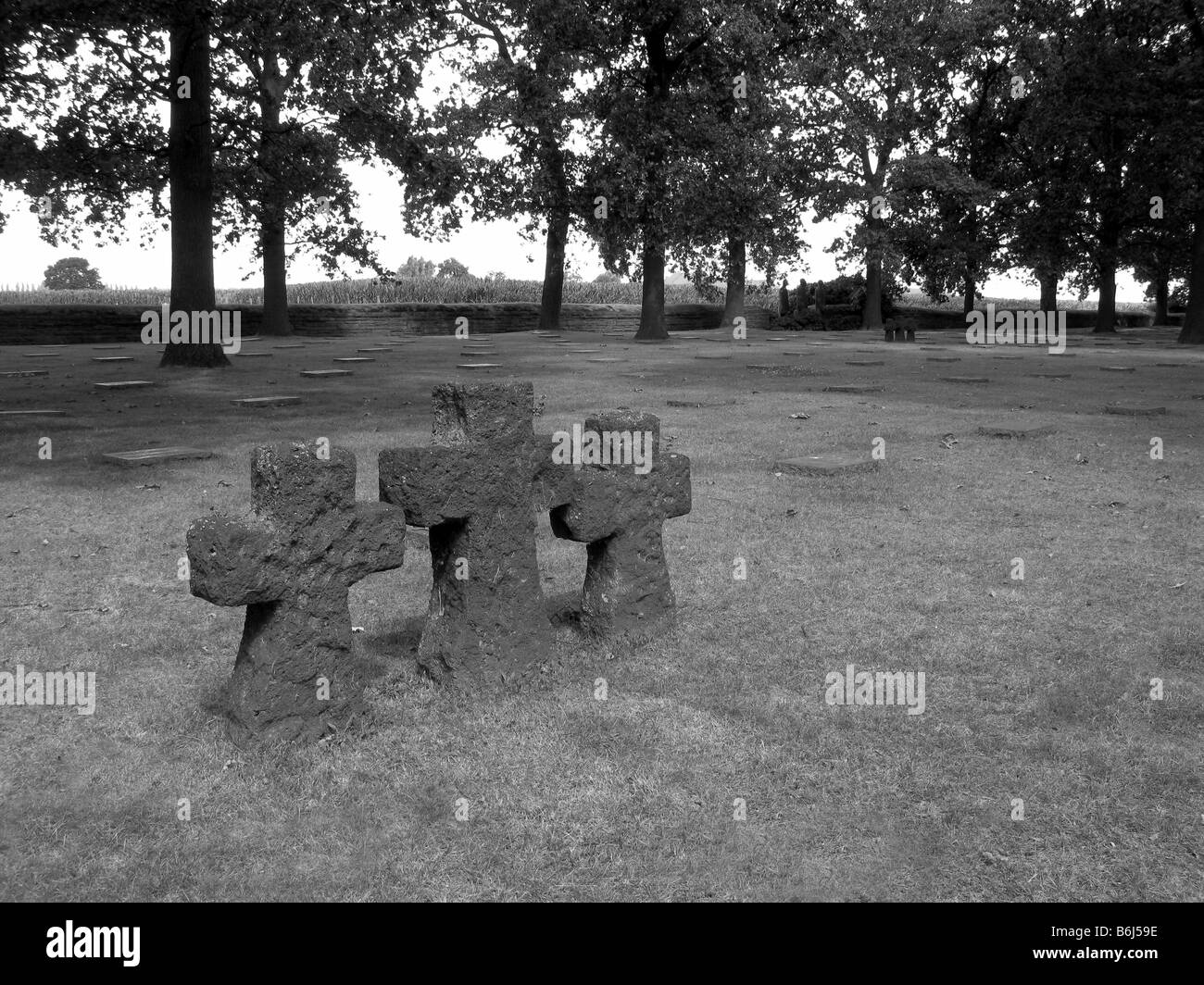 German First World War Cemetry in Langemark, Belgium. Stock Photohttps://www.alamy.com/image-license-details/?v=1https://www.alamy.com/stock-photo-german-first-world-war-cemetry-in-langemark-belgium-21297626.html
German First World War Cemetry in Langemark, Belgium. Stock Photohttps://www.alamy.com/image-license-details/?v=1https://www.alamy.com/stock-photo-german-first-world-war-cemetry-in-langemark-belgium-21297626.htmlRMB6J59E–German First World War Cemetry in Langemark, Belgium.
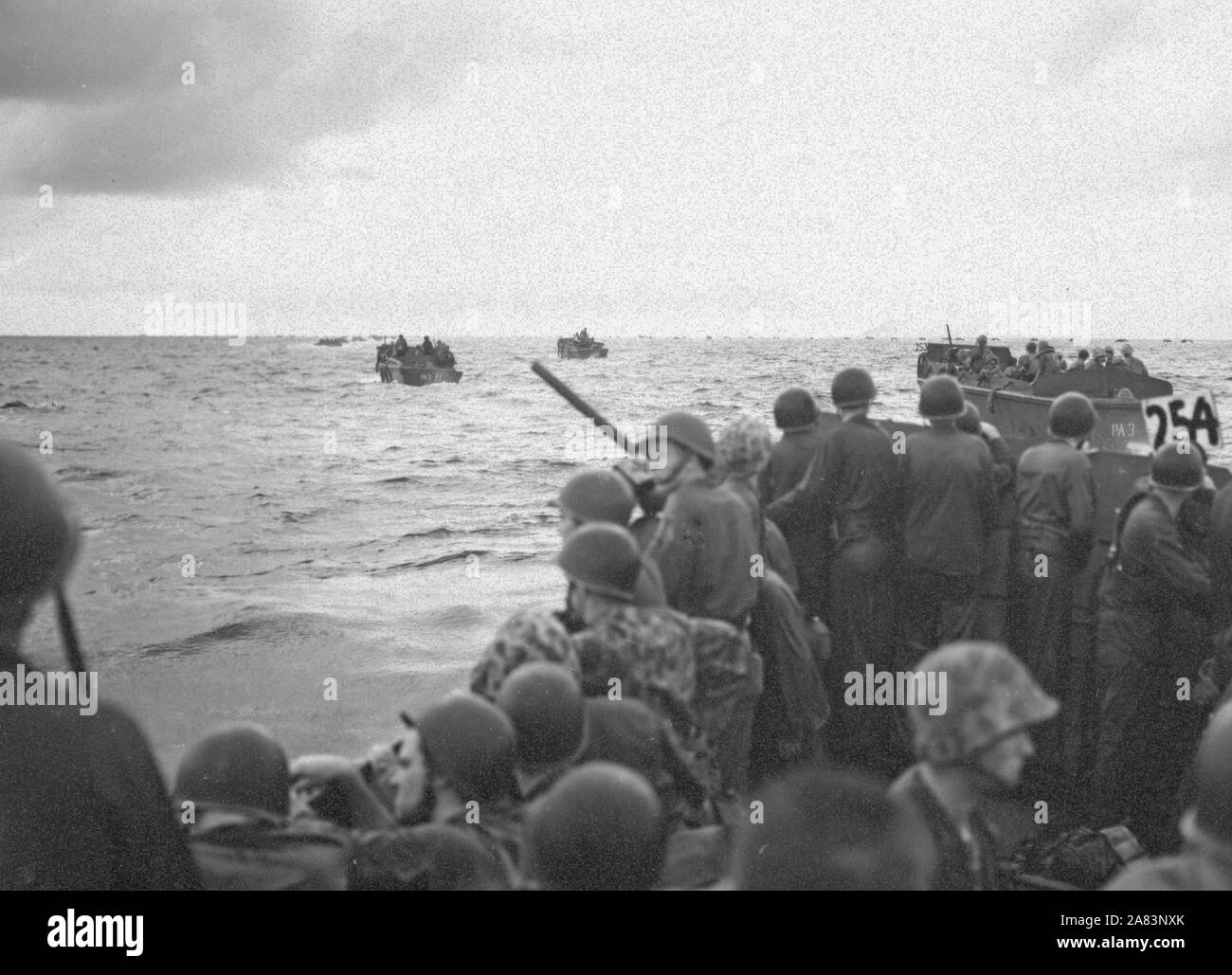 World War II Photo - First wave moves in toward Tarawa in boats Stock Photohttps://www.alamy.com/image-license-details/?v=1https://www.alamy.com/world-war-ii-photo-first-wave-moves-in-toward-tarawa-in-boats-image331997307.html
World War II Photo - First wave moves in toward Tarawa in boats Stock Photohttps://www.alamy.com/image-license-details/?v=1https://www.alamy.com/world-war-ii-photo-first-wave-moves-in-toward-tarawa-in-boats-image331997307.htmlRM2A83NXK–World War II Photo - First wave moves in toward Tarawa in boats
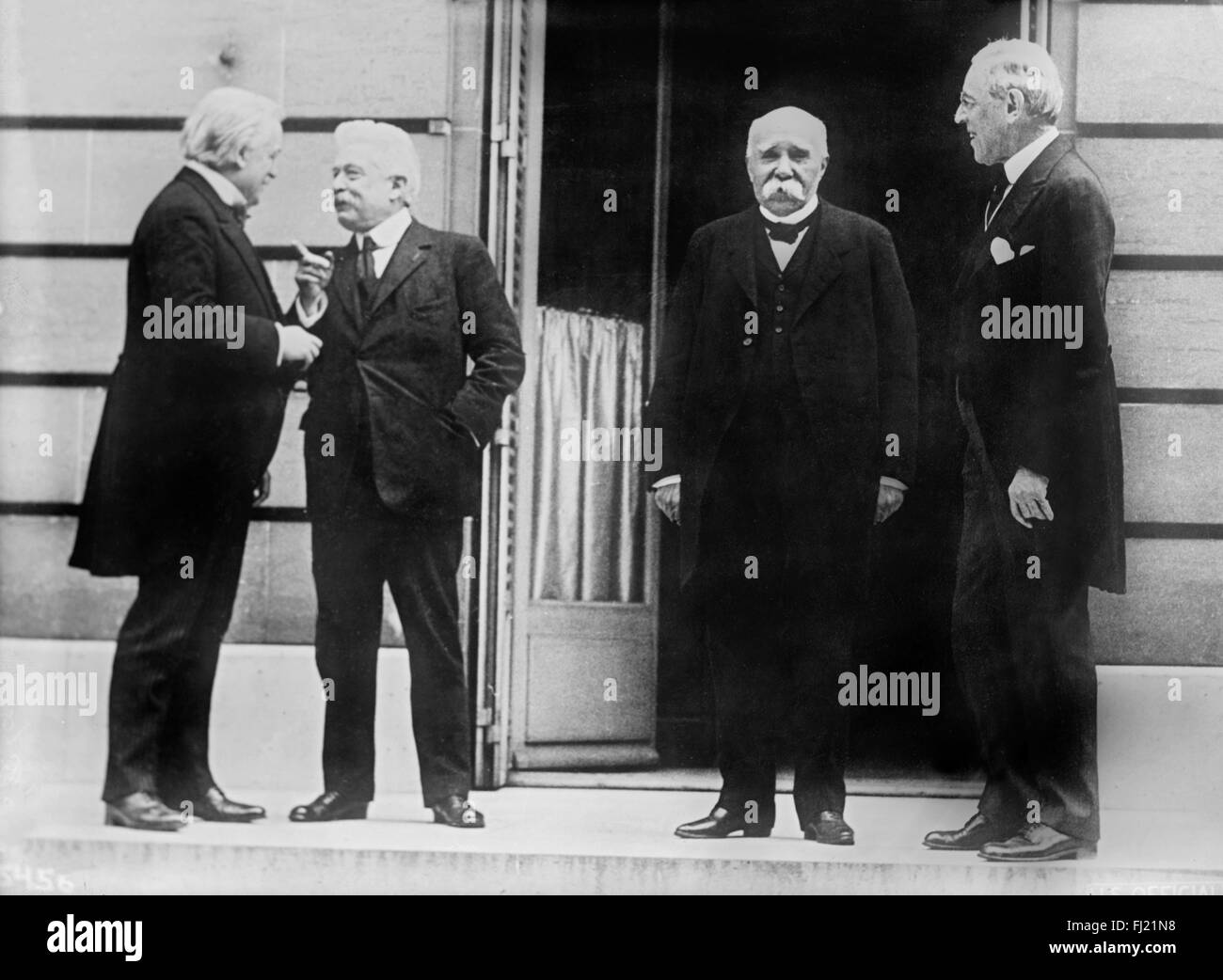 The 'Big Four' world leaders at World War I Peace Conference in Paris on May 27, 1919. From left to right: British Prime Minister David Lloyd George, Italian Premier Vittorio Orlando, French Prime Minister Georges Clemenceau, and US President Woodrow Wilson. Photo by Bain News Service. Stock Photohttps://www.alamy.com/image-license-details/?v=1https://www.alamy.com/stock-photo-the-big-four-world-leaders-at-world-war-i-peace-conference-in-paris-97160932.html
The 'Big Four' world leaders at World War I Peace Conference in Paris on May 27, 1919. From left to right: British Prime Minister David Lloyd George, Italian Premier Vittorio Orlando, French Prime Minister Georges Clemenceau, and US President Woodrow Wilson. Photo by Bain News Service. Stock Photohttps://www.alamy.com/image-license-details/?v=1https://www.alamy.com/stock-photo-the-big-four-world-leaders-at-world-war-i-peace-conference-in-paris-97160932.htmlRMFJ21N8–The 'Big Four' world leaders at World War I Peace Conference in Paris on May 27, 1919. From left to right: British Prime Minister David Lloyd George, Italian Premier Vittorio Orlando, French Prime Minister Georges Clemenceau, and US President Woodrow Wilson. Photo by Bain News Service.
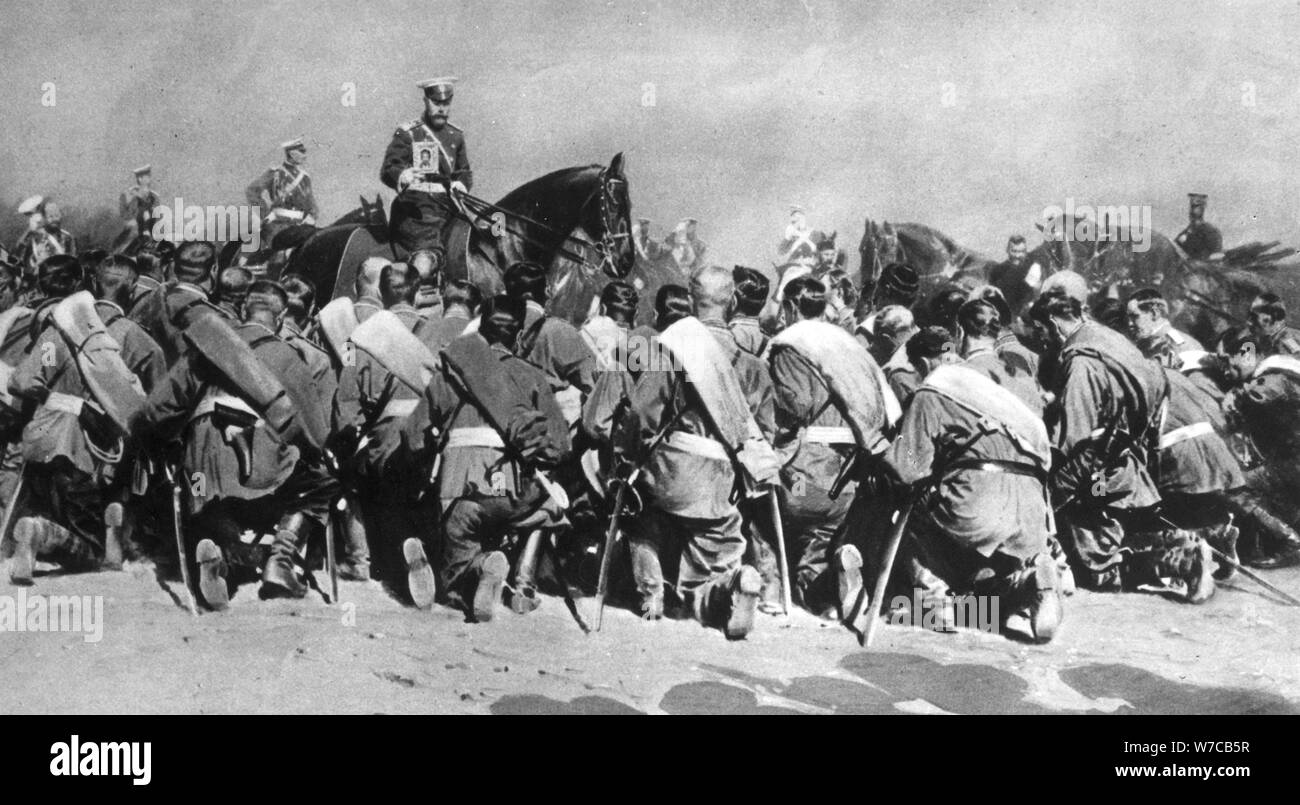 Emperor Nicholas II with the Sacred Ikon, September 1917, 1917. Stock Photohttps://www.alamy.com/image-license-details/?v=1https://www.alamy.com/emperor-nicholas-ii-with-the-sacred-ikon-september-1917-1917-image262730323.html
Emperor Nicholas II with the Sacred Ikon, September 1917, 1917. Stock Photohttps://www.alamy.com/image-license-details/?v=1https://www.alamy.com/emperor-nicholas-ii-with-the-sacred-ikon-september-1917-1917-image262730323.htmlRMW7CB5R–Emperor Nicholas II with the Sacred Ikon, September 1917, 1917.
 WW1 Zanzibar East Africa, vintage photograph from 1914 Stock Photohttps://www.alamy.com/image-license-details/?v=1https://www.alamy.com/ww1-zanzibar-east-africa-vintage-photograph-from-1914-image331216487.html
WW1 Zanzibar East Africa, vintage photograph from 1914 Stock Photohttps://www.alamy.com/image-license-details/?v=1https://www.alamy.com/ww1-zanzibar-east-africa-vintage-photograph-from-1914-image331216487.htmlRM2A6T607–WW1 Zanzibar East Africa, vintage photograph from 1914
 The summit cross on Monte Piana looking towards Monte Cristallo near Cortina d'Ampezzo in the Italian Dolomites of the Alto Adige. The mountain was part of the Italian Front Line defence system in the First World War against the Austrian-Hungarian forces allied to Germany. Stock Photohttps://www.alamy.com/image-license-details/?v=1https://www.alamy.com/the-summit-cross-on-monte-piana-looking-towards-monte-cristallo-near-cortina-dampezzo-in-the-italian-dolomites-of-the-alto-adige-the-mountain-was-part-of-the-italian-front-line-defence-system-in-the-first-world-war-against-the-austrian-hungarian-forces-allied-to-germany-image437571895.html
The summit cross on Monte Piana looking towards Monte Cristallo near Cortina d'Ampezzo in the Italian Dolomites of the Alto Adige. The mountain was part of the Italian Front Line defence system in the First World War against the Austrian-Hungarian forces allied to Germany. Stock Photohttps://www.alamy.com/image-license-details/?v=1https://www.alamy.com/the-summit-cross-on-monte-piana-looking-towards-monte-cristallo-near-cortina-dampezzo-in-the-italian-dolomites-of-the-alto-adige-the-mountain-was-part-of-the-italian-front-line-defence-system-in-the-first-world-war-against-the-austrian-hungarian-forces-allied-to-germany-image437571895.htmlRM2GBW3BK–The summit cross on Monte Piana looking towards Monte Cristallo near Cortina d'Ampezzo in the Italian Dolomites of the Alto Adige. The mountain was part of the Italian Front Line defence system in the First World War against the Austrian-Hungarian forces allied to Germany.
 The Siegfried Line, First World War line of defensive forts and tank defences built by Germany in northern France during 1916–17 as a section of the Hindenburg Line Stock Photohttps://www.alamy.com/image-license-details/?v=1https://www.alamy.com/stock-image-the-siegfried-line-first-world-war-line-of-defensive-forts-and-tank-167282391.html
The Siegfried Line, First World War line of defensive forts and tank defences built by Germany in northern France during 1916–17 as a section of the Hindenburg Line Stock Photohttps://www.alamy.com/image-license-details/?v=1https://www.alamy.com/stock-image-the-siegfried-line-first-world-war-line-of-defensive-forts-and-tank-167282391.htmlRMKM4AB3–The Siegfried Line, First World War line of defensive forts and tank defences built by Germany in northern France during 1916–17 as a section of the Hindenburg Line
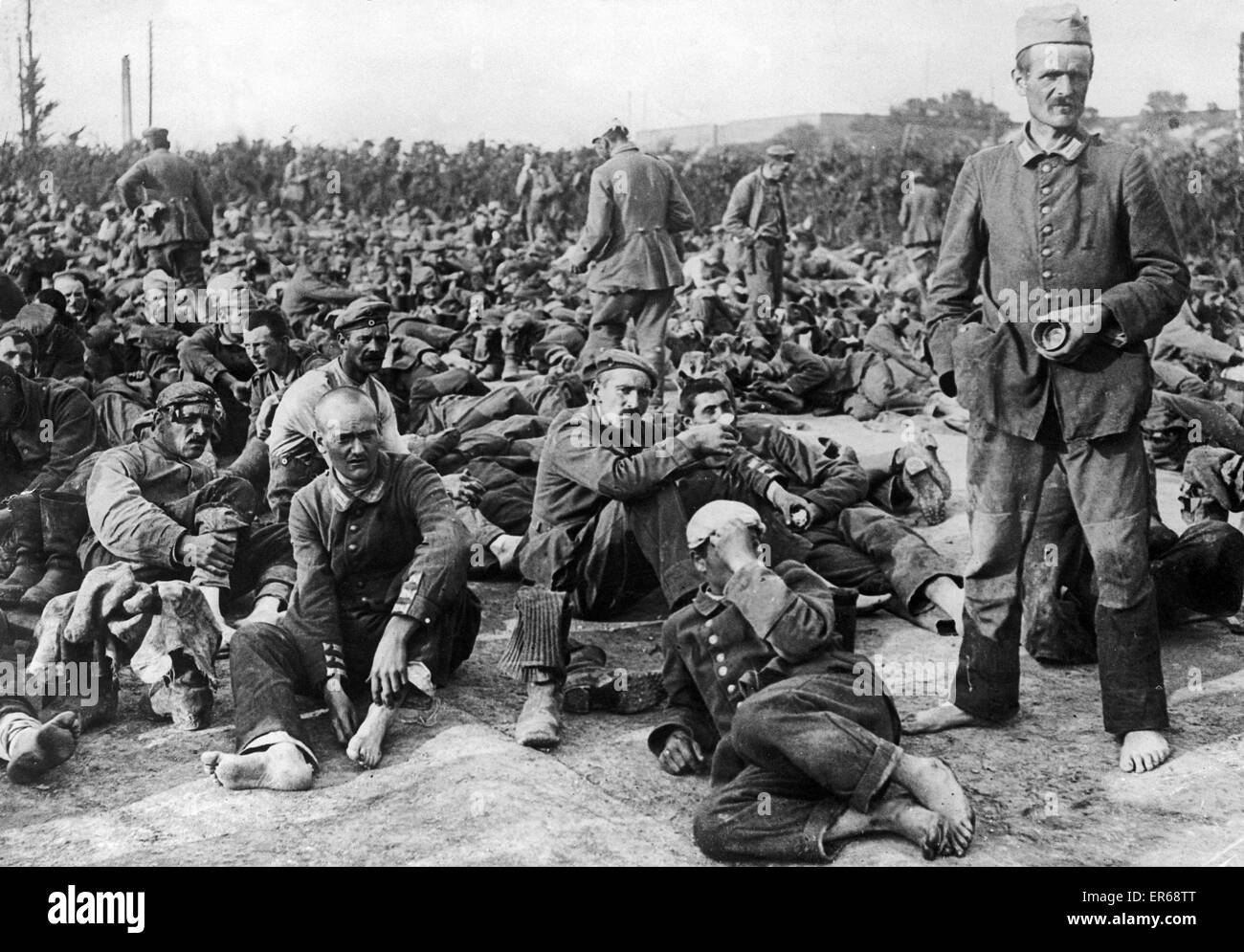 German prisoners of war from the Somme offensive tired and footsore, they have just arrived at their camp. The first thing they do is to ease their feet by removing their heavy boots. Stock Photohttps://www.alamy.com/image-license-details/?v=1https://www.alamy.com/stock-photo-german-prisoners-of-war-from-the-somme-offensive-tired-and-footsore-83117240.html
German prisoners of war from the Somme offensive tired and footsore, they have just arrived at their camp. The first thing they do is to ease their feet by removing their heavy boots. Stock Photohttps://www.alamy.com/image-license-details/?v=1https://www.alamy.com/stock-photo-german-prisoners-of-war-from-the-somme-offensive-tired-and-footsore-83117240.htmlRMER68TT–German prisoners of war from the Somme offensive tired and footsore, they have just arrived at their camp. The first thing they do is to ease their feet by removing their heavy boots.
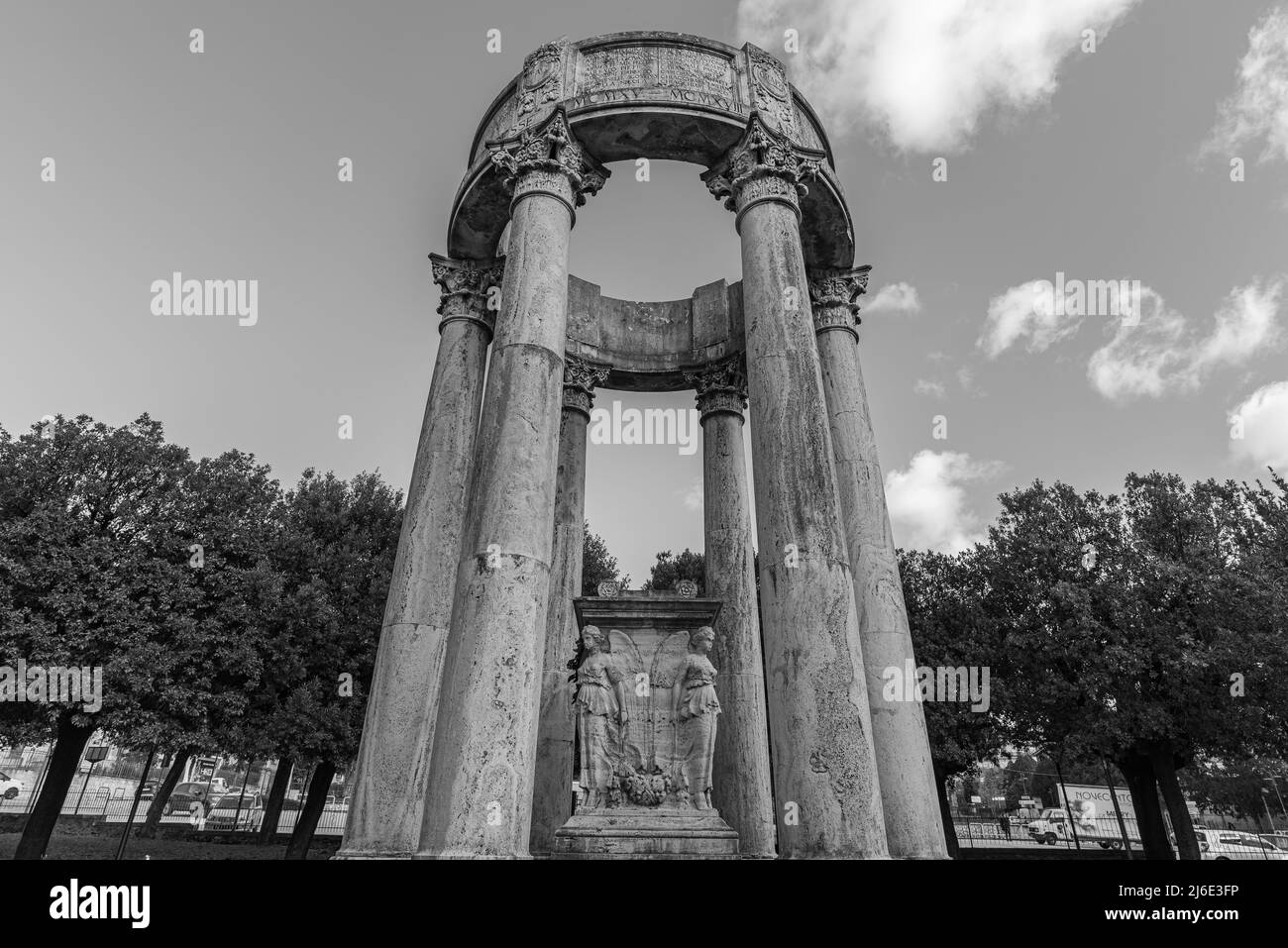 Isernia, Molise. Monument to the fallen of the First World War Stock Photohttps://www.alamy.com/image-license-details/?v=1https://www.alamy.com/isernia-molise-monument-to-the-fallen-of-the-first-world-war-image468677994.html
Isernia, Molise. Monument to the fallen of the First World War Stock Photohttps://www.alamy.com/image-license-details/?v=1https://www.alamy.com/isernia-molise-monument-to-the-fallen-of-the-first-world-war-image468677994.htmlRF2J6E3FP–Isernia, Molise. Monument to the fallen of the First World War
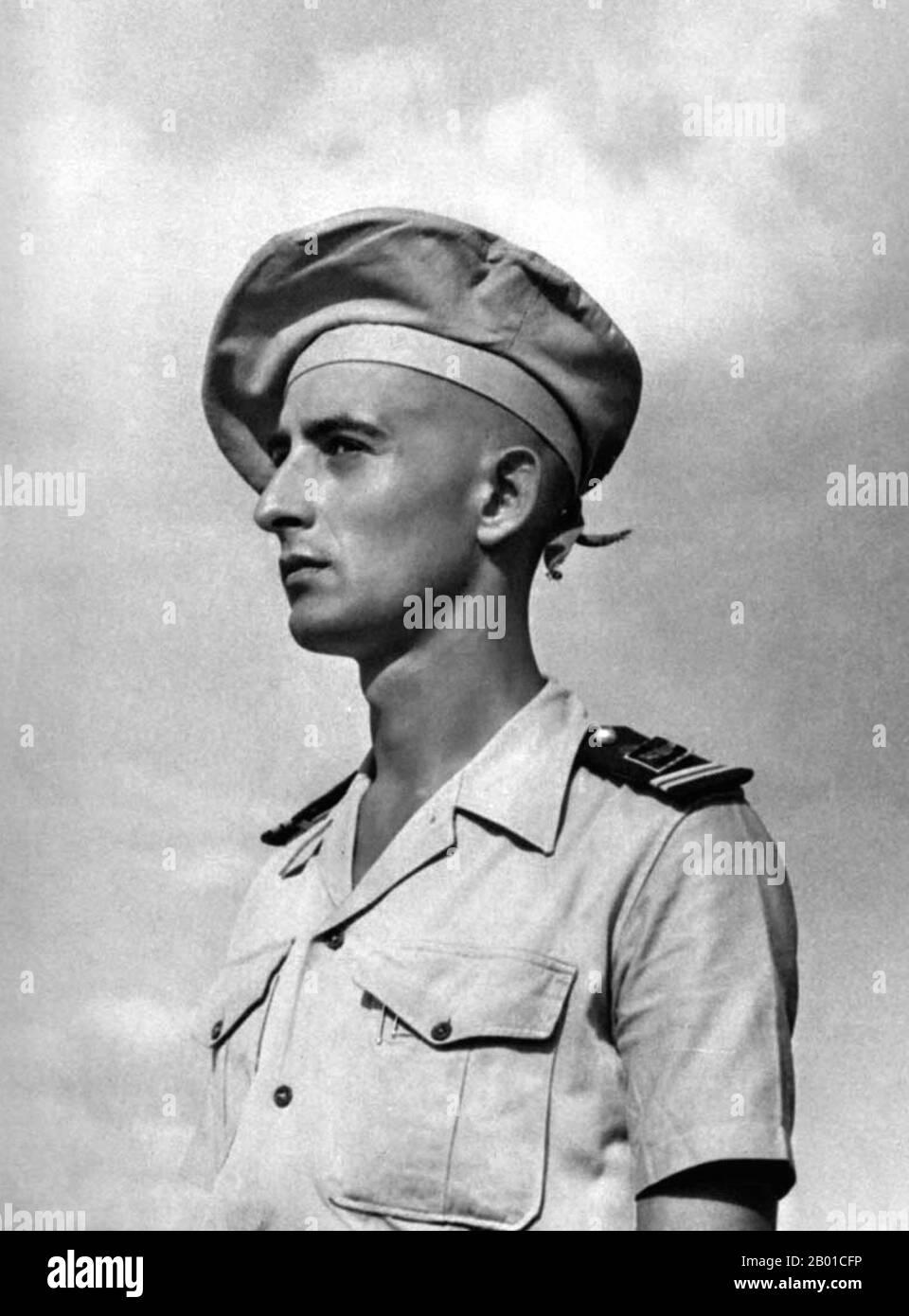 France/Vietnam: Lieutenant Bernard de Lattre de Tassigny (11 February 1928 - 30 May 1951), c. 1950. Bernard de Lattre de Tassigny was a French Army officer, who fought during World War II and the First Indochina War. Bernard de Lattre received several medals during his military career, including the Médaille militaire. He was killed in action at the age of 23, fighting near Ninh Binh. At the time of his death, his father, General Jean de Lattre de Tassigny, was the overall commander of French forces in Indochina. Bernard's death received widespread newspaper coverage. Stock Photohttps://www.alamy.com/image-license-details/?v=1https://www.alamy.com/francevietnam-lieutenant-bernard-de-lattre-de-tassigny-11-february-1928-30-may-1951-c-1950-bernard-de-lattre-de-tassigny-was-a-french-army-officer-who-fought-during-world-war-ii-and-the-first-indochina-war-bernard-de-lattre-received-several-medals-during-his-military-career-including-the-mdaille-militaire-he-was-killed-in-action-at-the-age-of-23-fighting-near-ninh-binh-at-the-time-of-his-death-his-father-general-jean-de-lattre-de-tassigny-was-the-overall-commander-of-french-forces-in-indochina-bernards-death-received-widespread-newspaper-coverage-image344239162.html
France/Vietnam: Lieutenant Bernard de Lattre de Tassigny (11 February 1928 - 30 May 1951), c. 1950. Bernard de Lattre de Tassigny was a French Army officer, who fought during World War II and the First Indochina War. Bernard de Lattre received several medals during his military career, including the Médaille militaire. He was killed in action at the age of 23, fighting near Ninh Binh. At the time of his death, his father, General Jean de Lattre de Tassigny, was the overall commander of French forces in Indochina. Bernard's death received widespread newspaper coverage. Stock Photohttps://www.alamy.com/image-license-details/?v=1https://www.alamy.com/francevietnam-lieutenant-bernard-de-lattre-de-tassigny-11-february-1928-30-may-1951-c-1950-bernard-de-lattre-de-tassigny-was-a-french-army-officer-who-fought-during-world-war-ii-and-the-first-indochina-war-bernard-de-lattre-received-several-medals-during-his-military-career-including-the-mdaille-militaire-he-was-killed-in-action-at-the-age-of-23-fighting-near-ninh-binh-at-the-time-of-his-death-his-father-general-jean-de-lattre-de-tassigny-was-the-overall-commander-of-french-forces-in-indochina-bernards-death-received-widespread-newspaper-coverage-image344239162.htmlRM2B01CFP–France/Vietnam: Lieutenant Bernard de Lattre de Tassigny (11 February 1928 - 30 May 1951), c. 1950. Bernard de Lattre de Tassigny was a French Army officer, who fought during World War II and the First Indochina War. Bernard de Lattre received several medals during his military career, including the Médaille militaire. He was killed in action at the age of 23, fighting near Ninh Binh. At the time of his death, his father, General Jean de Lattre de Tassigny, was the overall commander of French forces in Indochina. Bernard's death received widespread newspaper coverage.
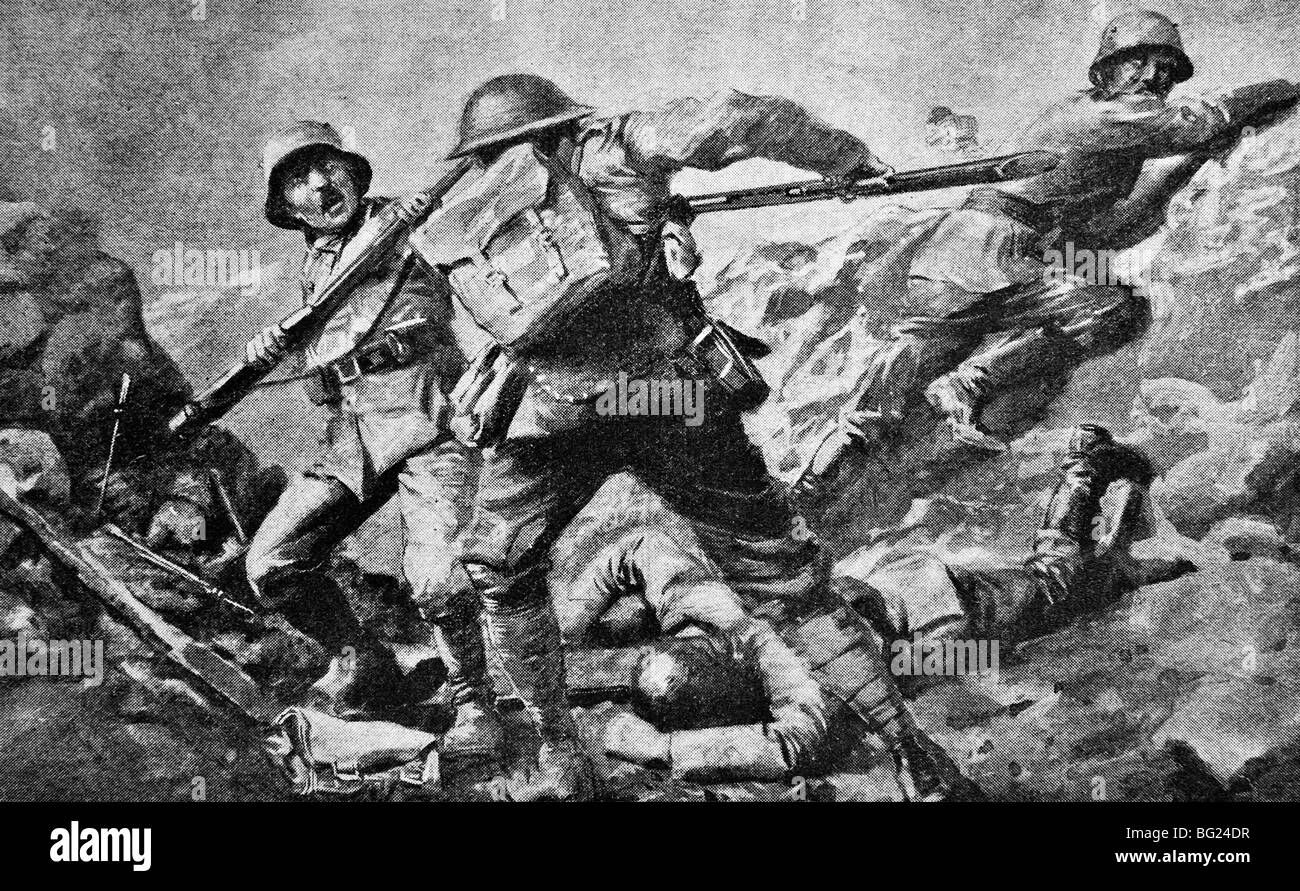 Contemporary WW1 illustration of a British private in hand to hand combat with German soldiers at Ypres in Flanders in 1917. Stock Photohttps://www.alamy.com/image-license-details/?v=1https://www.alamy.com/stock-photo-contemporary-ww1-illustration-of-a-british-private-in-hand-to-hand-27092291.html
Contemporary WW1 illustration of a British private in hand to hand combat with German soldiers at Ypres in Flanders in 1917. Stock Photohttps://www.alamy.com/image-license-details/?v=1https://www.alamy.com/stock-photo-contemporary-ww1-illustration-of-a-british-private-in-hand-to-hand-27092291.htmlRMBG24DR–Contemporary WW1 illustration of a British private in hand to hand combat with German soldiers at Ypres in Flanders in 1917.
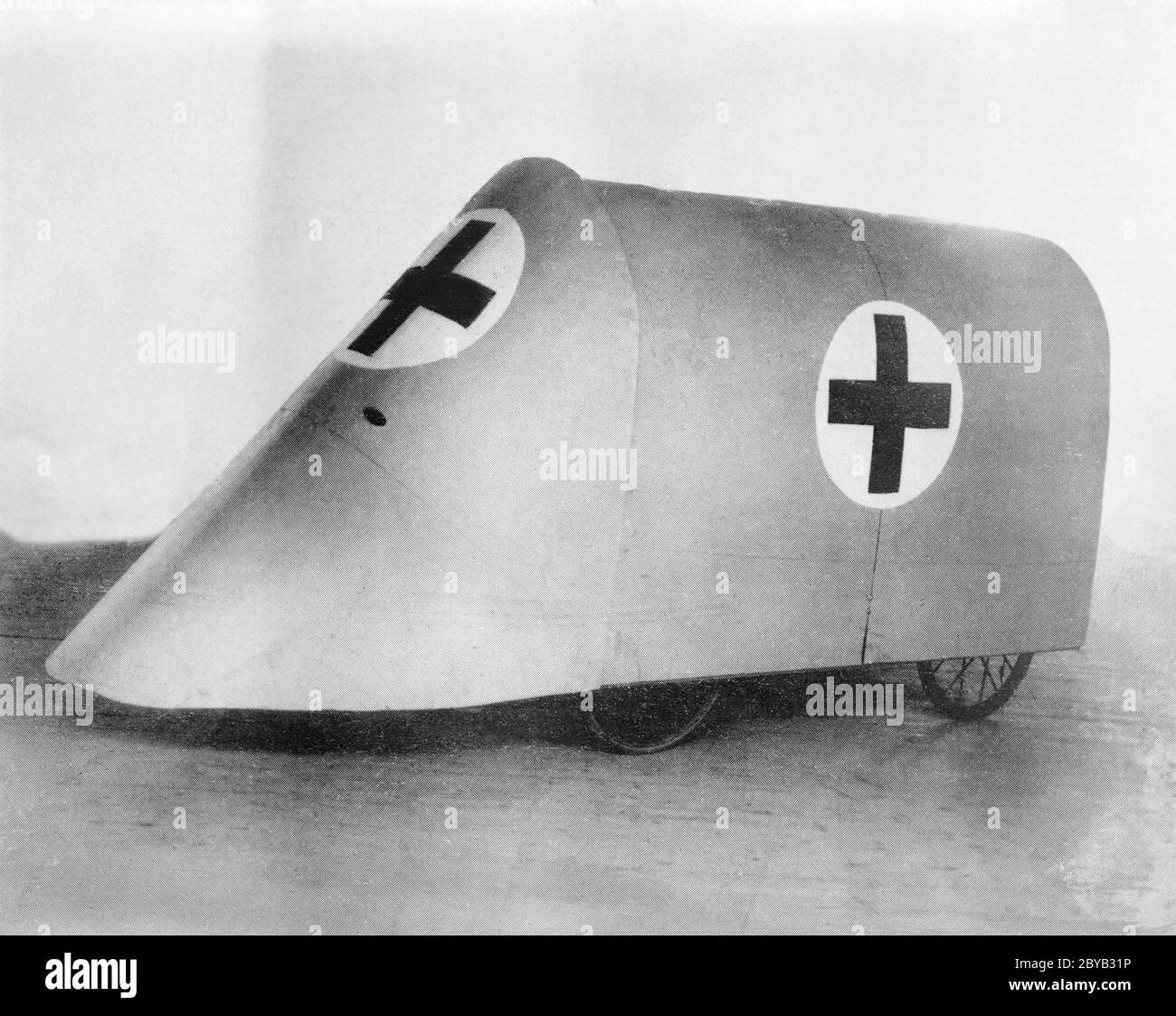 Red Cross Vehicle used for gathering Wounded Soldiers from Trenches during World War I, 1915 Stock Photohttps://www.alamy.com/image-license-details/?v=1https://www.alamy.com/red-cross-vehicle-used-for-gathering-wounded-soldiers-from-trenches-during-world-war-i-1915-image361046946.html
Red Cross Vehicle used for gathering Wounded Soldiers from Trenches during World War I, 1915 Stock Photohttps://www.alamy.com/image-license-details/?v=1https://www.alamy.com/red-cross-vehicle-used-for-gathering-wounded-soldiers-from-trenches-during-world-war-i-1915-image361046946.htmlRM2BYB31P–Red Cross Vehicle used for gathering Wounded Soldiers from Trenches during World War I, 1915
 1923 unveiling of World War One monument to French WWI military aviator and air fighter ace Georges Guynemer at Poelcapelle, West Flanders, Belgium Stock Photohttps://www.alamy.com/image-license-details/?v=1https://www.alamy.com/1923-unveiling-of-world-war-one-monument-to-french-wwi-military-aviator-and-air-fighter-ace-georges-guynemer-at-poelcapelle-west-flanders-belgium-image620517531.html
1923 unveiling of World War One monument to French WWI military aviator and air fighter ace Georges Guynemer at Poelcapelle, West Flanders, Belgium Stock Photohttps://www.alamy.com/image-license-details/?v=1https://www.alamy.com/1923-unveiling-of-world-war-one-monument-to-french-wwi-military-aviator-and-air-fighter-ace-georges-guynemer-at-poelcapelle-west-flanders-belgium-image620517531.htmlRM2Y1F0CB–1923 unveiling of World War One monument to French WWI military aviator and air fighter ace Georges Guynemer at Poelcapelle, West Flanders, Belgium
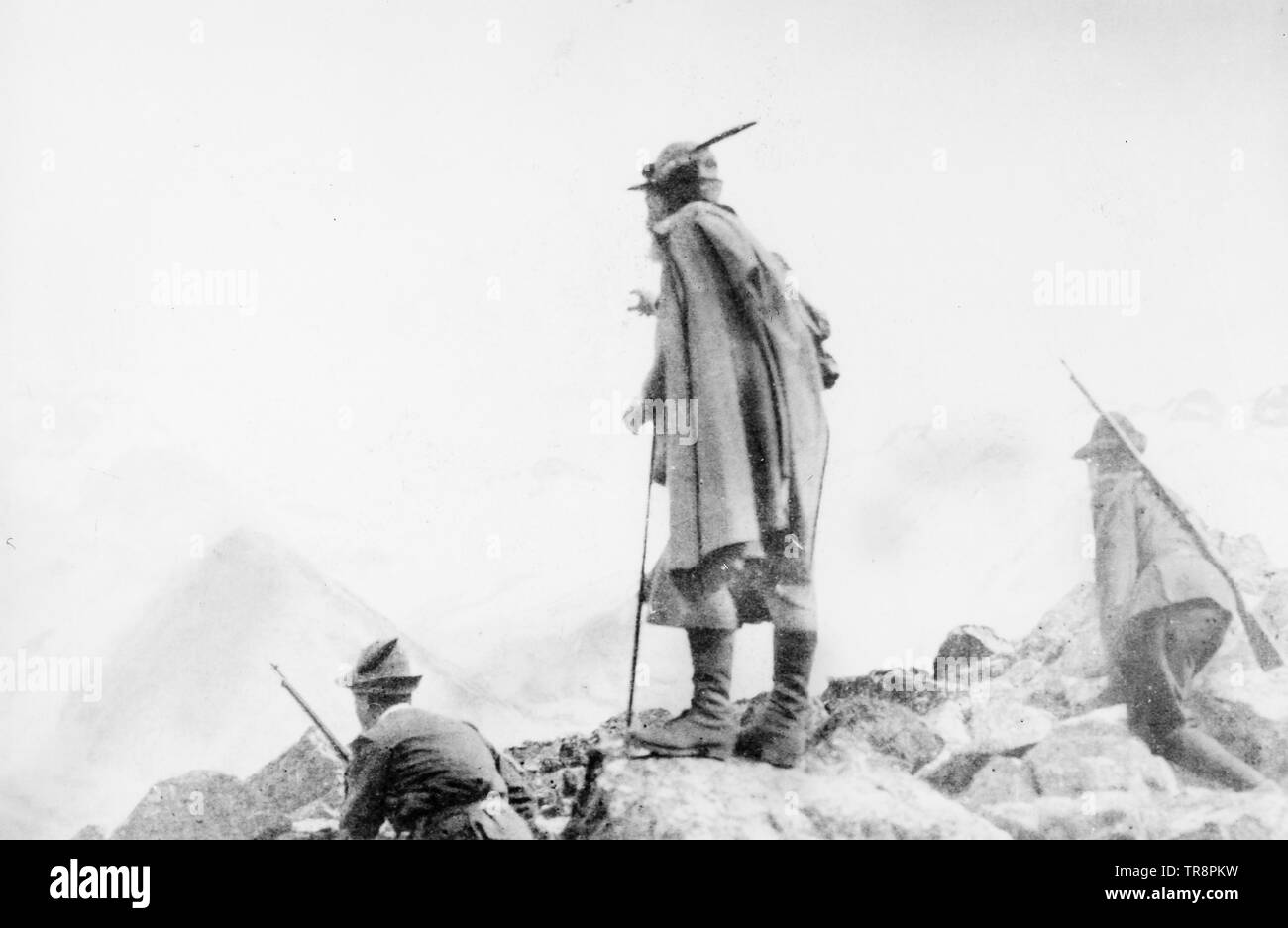 alpini, first world war Stock Photohttps://www.alamy.com/image-license-details/?v=1https://www.alamy.com/alpini-first-world-war-image255275661.html
alpini, first world war Stock Photohttps://www.alamy.com/image-license-details/?v=1https://www.alamy.com/alpini-first-world-war-image255275661.htmlRMTR8PKW–alpini, first world war
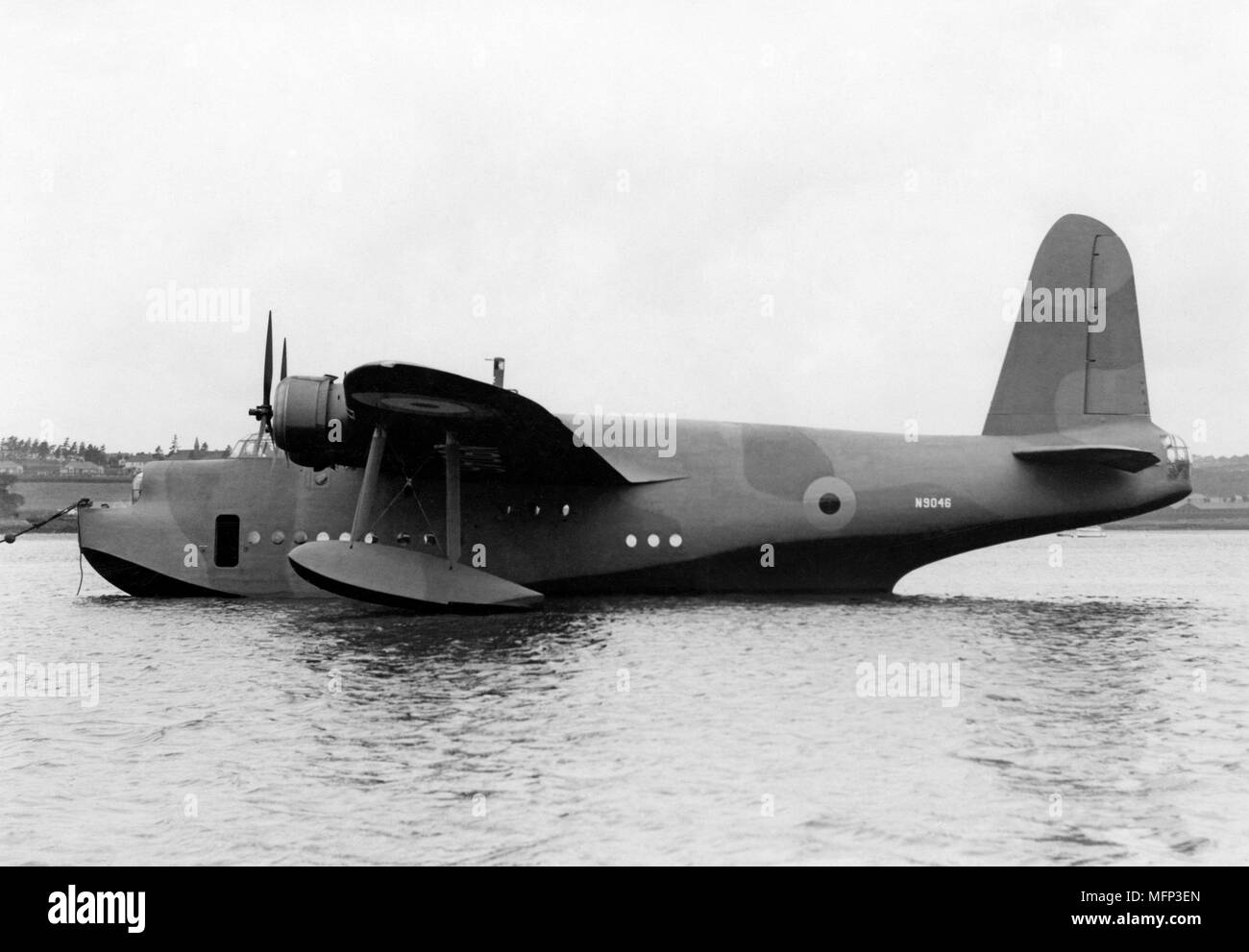 N9046, the first Sunderland Flying Boat to fight of 6 JU88's in WWII near Invergordon.This earnt it the name, the Flying Porcupine. Later damaged bey Stock Photohttps://www.alamy.com/image-license-details/?v=1https://www.alamy.com/n9046-the-first-sunderland-flying-boat-to-fight-of-6-ju88s-in-wwii-near-invergordonthis-earnt-it-the-name-the-flying-porcupine-later-damaged-bey-image181809229.html
N9046, the first Sunderland Flying Boat to fight of 6 JU88's in WWII near Invergordon.This earnt it the name, the Flying Porcupine. Later damaged bey Stock Photohttps://www.alamy.com/image-license-details/?v=1https://www.alamy.com/n9046-the-first-sunderland-flying-boat-to-fight-of-6-ju88s-in-wwii-near-invergordonthis-earnt-it-the-name-the-flying-porcupine-later-damaged-bey-image181809229.htmlRMMFP3EN–N9046, the first Sunderland Flying Boat to fight of 6 JU88's in WWII near Invergordon.This earnt it the name, the Flying Porcupine. Later damaged bey
 Archival scanned images of a bygone France in 1984. War Graves with a Jewish soldiers headstone alongside the crosses in a German WW1 cemetery. Stock Photohttps://www.alamy.com/image-license-details/?v=1https://www.alamy.com/archival-scanned-images-of-a-bygone-france-in-1984-war-graves-with-a-jewish-soldiers-headstone-alongside-the-crosses-in-a-german-ww1-cemetery-image447258276.html
Archival scanned images of a bygone France in 1984. War Graves with a Jewish soldiers headstone alongside the crosses in a German WW1 cemetery. Stock Photohttps://www.alamy.com/image-license-details/?v=1https://www.alamy.com/archival-scanned-images-of-a-bygone-france-in-1984-war-graves-with-a-jewish-soldiers-headstone-alongside-the-crosses-in-a-german-ww1-cemetery-image447258276.htmlRF2GYJADT–Archival scanned images of a bygone France in 1984. War Graves with a Jewish soldiers headstone alongside the crosses in a German WW1 cemetery.
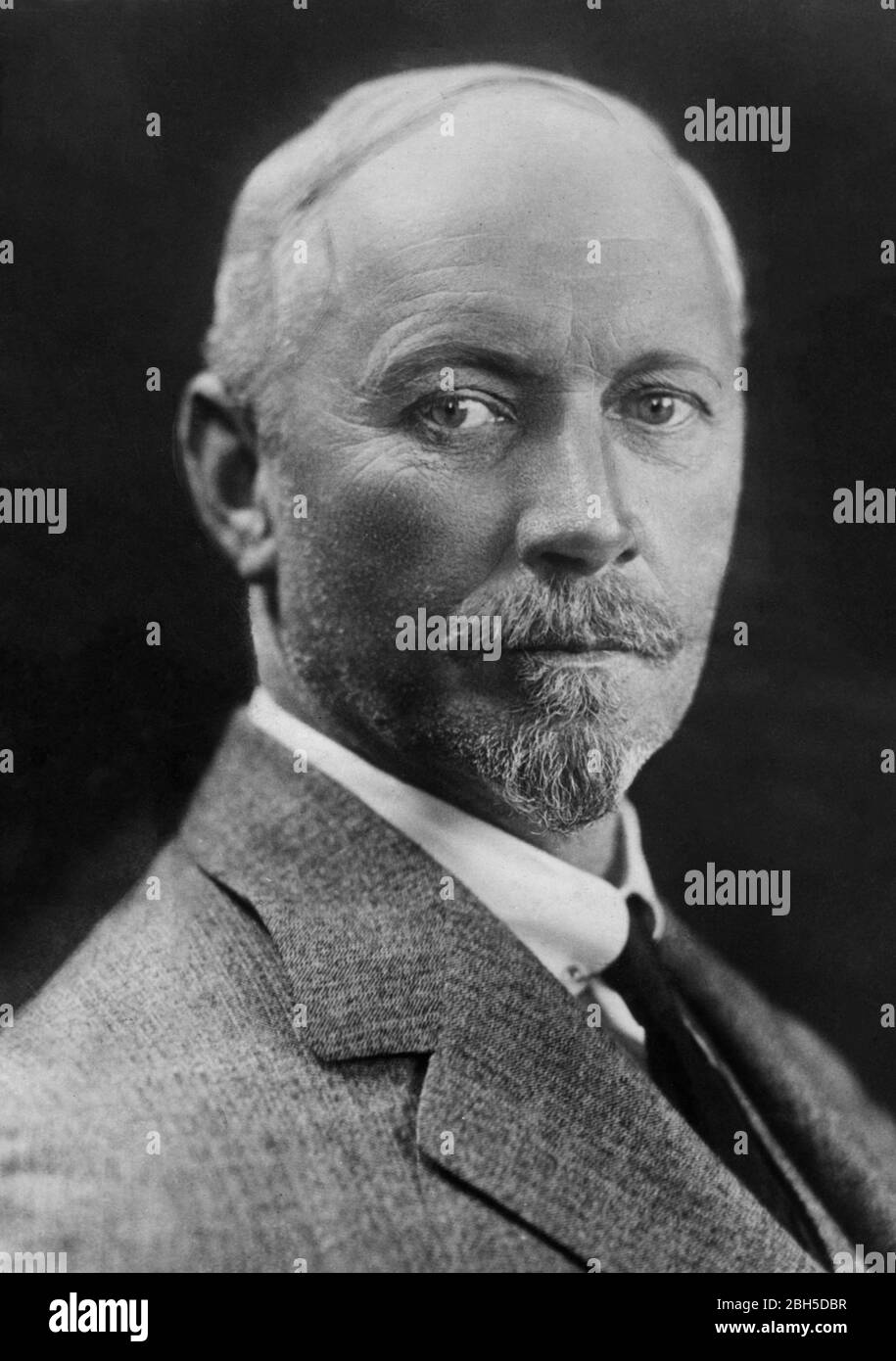 Field Marshal Jan Christian Smuts (1870-1950), c. 1910s. He grew up on a farm, became a brilliant student of law, philosophy, poetry, etc. He got into politics, then the military, then lobbied for South African interests in London. He became prime minister of the Union of South Africa right after World War I and then again during World War II. But for much of his life, he was hated by many Afrikaners. To see my other vintage images, Search: Prestor vintage WW I Stock Photohttps://www.alamy.com/image-license-details/?v=1https://www.alamy.com/field-marshal-jan-christian-smuts-1870-1950-c-1910s-he-grew-up-on-a-farm-became-a-brilliant-student-of-law-philosophy-poetry-etc-he-got-into-politics-then-the-military-then-lobbied-for-south-african-interests-in-london-he-became-prime-minister-of-the-union-of-south-africa-right-after-world-war-i-and-then-again-during-world-war-ii-but-for-much-of-his-life-he-was-hated-by-many-afrikaners-to-see-my-other-vintage-images-search-prestor-vintage-ww-i-image354776795.html
Field Marshal Jan Christian Smuts (1870-1950), c. 1910s. He grew up on a farm, became a brilliant student of law, philosophy, poetry, etc. He got into politics, then the military, then lobbied for South African interests in London. He became prime minister of the Union of South Africa right after World War I and then again during World War II. But for much of his life, he was hated by many Afrikaners. To see my other vintage images, Search: Prestor vintage WW I Stock Photohttps://www.alamy.com/image-license-details/?v=1https://www.alamy.com/field-marshal-jan-christian-smuts-1870-1950-c-1910s-he-grew-up-on-a-farm-became-a-brilliant-student-of-law-philosophy-poetry-etc-he-got-into-politics-then-the-military-then-lobbied-for-south-african-interests-in-london-he-became-prime-minister-of-the-union-of-south-africa-right-after-world-war-i-and-then-again-during-world-war-ii-but-for-much-of-his-life-he-was-hated-by-many-afrikaners-to-see-my-other-vintage-images-search-prestor-vintage-ww-i-image354776795.htmlRF2BH5DBR–Field Marshal Jan Christian Smuts (1870-1950), c. 1910s. He grew up on a farm, became a brilliant student of law, philosophy, poetry, etc. He got into politics, then the military, then lobbied for South African interests in London. He became prime minister of the Union of South Africa right after World War I and then again during World War II. But for much of his life, he was hated by many Afrikaners. To see my other vintage images, Search: Prestor vintage WW I
 Moffat Hydropathic Hotel - opened on 5th April 1878, the hotel was typical of its kind and was a luxury spa establishment. During the First World War it was used as a hospital for wounded servicemen, and then refurbished around 1921. However the heyday of the Hydro hotels was over, and a fire in 1921 destroyed the building. A museum in Moffat now holds almost all surviving information and material. This photo is a rarity as most surviving images are from advertising material rather than personal snapshots. Stock Photohttps://www.alamy.com/image-license-details/?v=1https://www.alamy.com/moffat-hydropathic-hotel-opened-on-5th-april-1878-the-hotel-was-typical-of-its-kind-and-was-a-luxury-spa-establishment-during-the-first-world-war-it-was-used-as-a-hospital-for-wounded-servicemen-and-then-refurbished-around-1921-however-the-heyday-of-the-hydro-hotels-was-over-and-a-fire-in-1921-destroyed-the-building-a-museum-in-moffat-now-holds-almost-all-surviving-information-and-material-this-photo-is-a-rarity-as-most-surviving-images-are-from-advertising-material-rather-than-personal-snapshots-image504805957.html
Moffat Hydropathic Hotel - opened on 5th April 1878, the hotel was typical of its kind and was a luxury spa establishment. During the First World War it was used as a hospital for wounded servicemen, and then refurbished around 1921. However the heyday of the Hydro hotels was over, and a fire in 1921 destroyed the building. A museum in Moffat now holds almost all surviving information and material. This photo is a rarity as most surviving images are from advertising material rather than personal snapshots. Stock Photohttps://www.alamy.com/image-license-details/?v=1https://www.alamy.com/moffat-hydropathic-hotel-opened-on-5th-april-1878-the-hotel-was-typical-of-its-kind-and-was-a-luxury-spa-establishment-during-the-first-world-war-it-was-used-as-a-hospital-for-wounded-servicemen-and-then-refurbished-around-1921-however-the-heyday-of-the-hydro-hotels-was-over-and-a-fire-in-1921-destroyed-the-building-a-museum-in-moffat-now-holds-almost-all-surviving-information-and-material-this-photo-is-a-rarity-as-most-surviving-images-are-from-advertising-material-rather-than-personal-snapshots-image504805957.htmlRM2M97W45–Moffat Hydropathic Hotel - opened on 5th April 1878, the hotel was typical of its kind and was a luxury spa establishment. During the First World War it was used as a hospital for wounded servicemen, and then refurbished around 1921. However the heyday of the Hydro hotels was over, and a fire in 1921 destroyed the building. A museum in Moffat now holds almost all surviving information and material. This photo is a rarity as most surviving images are from advertising material rather than personal snapshots.
 Horace Nicholls - A member of the Women's Land Army leads a horse from the stables on a farm during the First World War - 1914-1918 Stock Photohttps://www.alamy.com/image-license-details/?v=1https://www.alamy.com/horace-nicholls-a-member-of-the-womens-land-army-leads-a-horse-from-the-stables-on-a-farm-during-the-first-world-war-1914-1918-image559550626.html
Horace Nicholls - A member of the Women's Land Army leads a horse from the stables on a farm during the First World War - 1914-1918 Stock Photohttps://www.alamy.com/image-license-details/?v=1https://www.alamy.com/horace-nicholls-a-member-of-the-womens-land-army-leads-a-horse-from-the-stables-on-a-farm-during-the-first-world-war-1914-1918-image559550626.htmlRF2RE9MEX–Horace Nicholls - A member of the Women's Land Army leads a horse from the stables on a farm during the First World War - 1914-1918
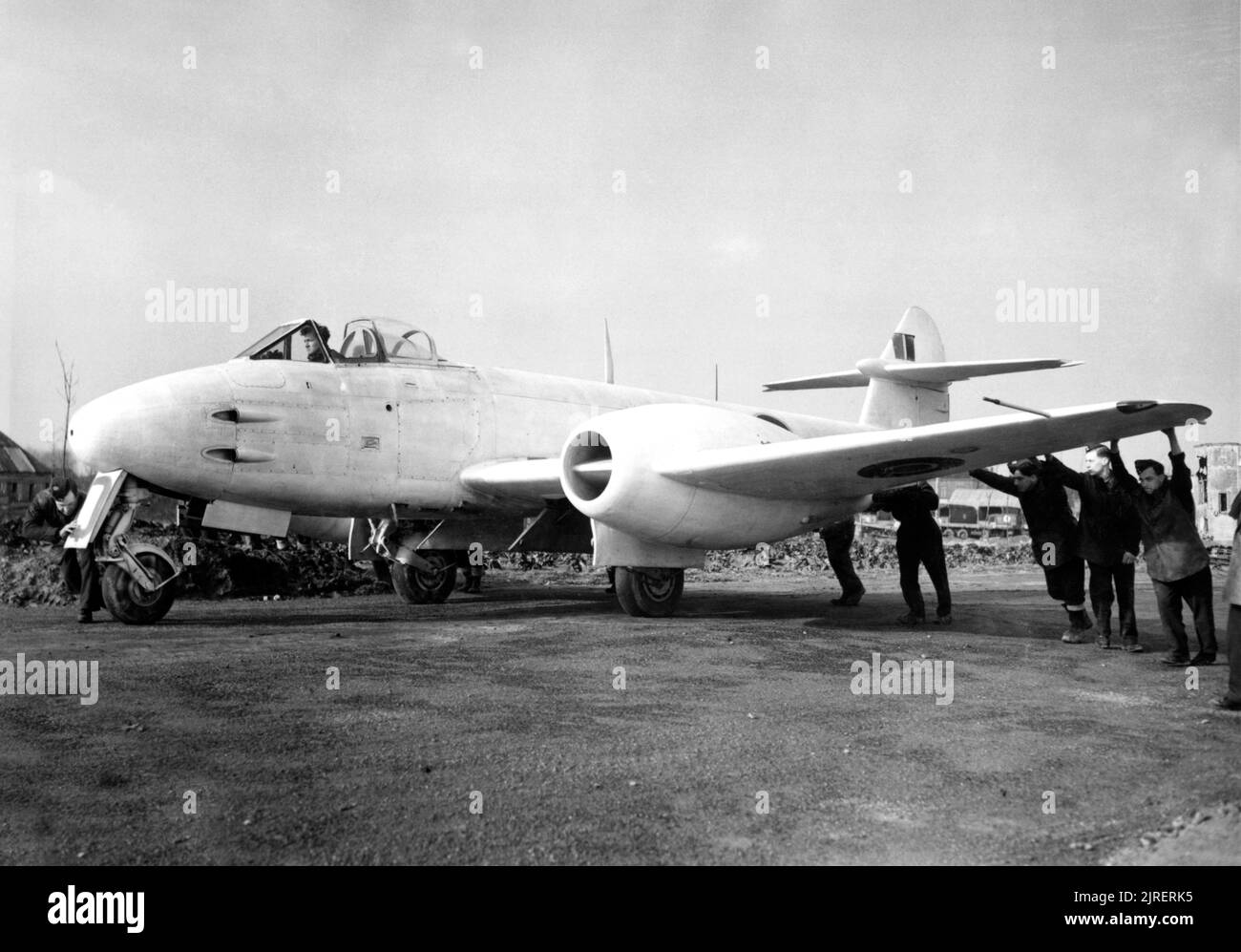 Ground crew manhandle a Gloster Meteor F.3 of the 616 Squadron Detachment at B58/Melsbroek, Belgium, on 6 February 1945. The aircraft had deployed to the Continent to counter the threat of the German Me262 jet fighter which had started to enter service with the Luftwaffe. The Meteor was the first British jet fighter and the Allies' only jet aircraft to achieve combat operations during the Second World War. The Meteor first flew in 1943 and commenced operations on 27 July 1944 with No. 616 Squadron RAF. Some of these images have had some dodging and burning done and have been retouched to remov Stock Photohttps://www.alamy.com/image-license-details/?v=1https://www.alamy.com/ground-crew-manhandle-a-gloster-meteor-f3-of-the-616-squadron-detachment-at-b58melsbroek-belgium-on-6-february-1945-the-aircraft-had-deployed-to-the-continent-to-counter-the-threat-of-the-german-me262-jet-fighter-which-had-started-to-enter-service-with-the-luftwaffe-the-meteor-was-the-first-british-jet-fighter-and-the-allies-only-jet-aircraft-to-achieve-combat-operations-during-the-second-world-war-the-meteor-first-flew-in-1943-and-commenced-operations-on-27-july-1944-with-no-616-squadron-raf-some-of-these-images-have-had-some-dodging-and-burning-done-and-have-been-retouched-to-remov-image479142921.html
Ground crew manhandle a Gloster Meteor F.3 of the 616 Squadron Detachment at B58/Melsbroek, Belgium, on 6 February 1945. The aircraft had deployed to the Continent to counter the threat of the German Me262 jet fighter which had started to enter service with the Luftwaffe. The Meteor was the first British jet fighter and the Allies' only jet aircraft to achieve combat operations during the Second World War. The Meteor first flew in 1943 and commenced operations on 27 July 1944 with No. 616 Squadron RAF. Some of these images have had some dodging and burning done and have been retouched to remov Stock Photohttps://www.alamy.com/image-license-details/?v=1https://www.alamy.com/ground-crew-manhandle-a-gloster-meteor-f3-of-the-616-squadron-detachment-at-b58melsbroek-belgium-on-6-february-1945-the-aircraft-had-deployed-to-the-continent-to-counter-the-threat-of-the-german-me262-jet-fighter-which-had-started-to-enter-service-with-the-luftwaffe-the-meteor-was-the-first-british-jet-fighter-and-the-allies-only-jet-aircraft-to-achieve-combat-operations-during-the-second-world-war-the-meteor-first-flew-in-1943-and-commenced-operations-on-27-july-1944-with-no-616-squadron-raf-some-of-these-images-have-had-some-dodging-and-burning-done-and-have-been-retouched-to-remov-image479142921.htmlRM2JRERK5–Ground crew manhandle a Gloster Meteor F.3 of the 616 Squadron Detachment at B58/Melsbroek, Belgium, on 6 February 1945. The aircraft had deployed to the Continent to counter the threat of the German Me262 jet fighter which had started to enter service with the Luftwaffe. The Meteor was the first British jet fighter and the Allies' only jet aircraft to achieve combat operations during the Second World War. The Meteor first flew in 1943 and commenced operations on 27 July 1944 with No. 616 Squadron RAF. Some of these images have had some dodging and burning done and have been retouched to remov
 World War II Photo - First mass transfer at sea in Navy history, nearly one thousand marines transfereed via breeches buoy to Landing ship vehicle to go to Japan Stock Photohttps://www.alamy.com/image-license-details/?v=1https://www.alamy.com/world-war-ii-photo-first-mass-transfer-at-sea-in-navy-history-nearly-one-thousand-marines-transfereed-via-breeches-buoy-to-landing-ship-vehicle-to-go-to-japan-image331901776.html
World War II Photo - First mass transfer at sea in Navy history, nearly one thousand marines transfereed via breeches buoy to Landing ship vehicle to go to Japan Stock Photohttps://www.alamy.com/image-license-details/?v=1https://www.alamy.com/world-war-ii-photo-first-mass-transfer-at-sea-in-navy-history-nearly-one-thousand-marines-transfereed-via-breeches-buoy-to-landing-ship-vehicle-to-go-to-japan-image331901776.htmlRM2A7YC2T–World War II Photo - First mass transfer at sea in Navy history, nearly one thousand marines transfereed via breeches buoy to Landing ship vehicle to go to Japan
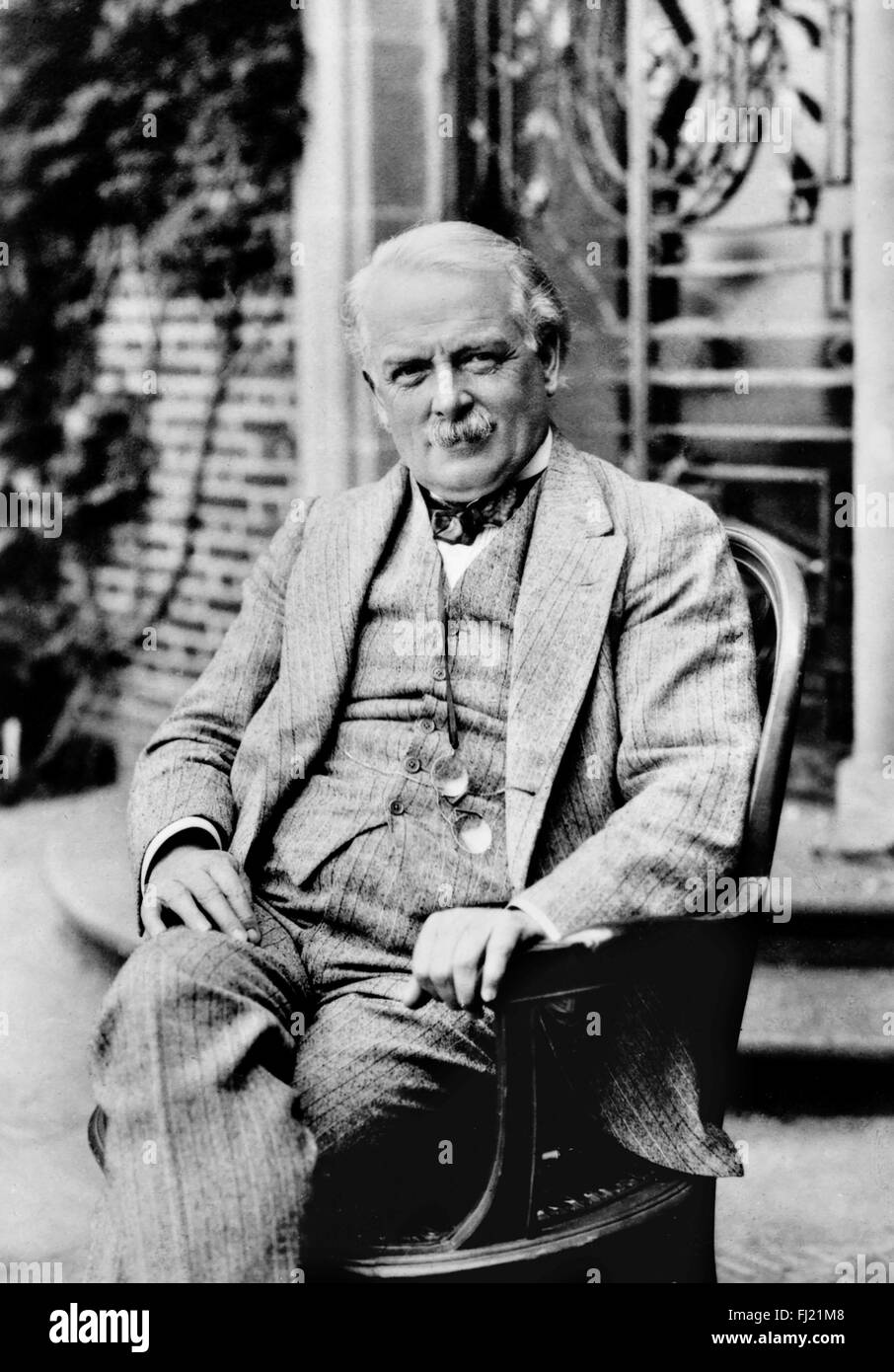 David Lloyd George. Potrait of the liberal politician who was British Prime Minister during and immediately after the First World War. Photograph taken in 1922. Stock Photohttps://www.alamy.com/image-license-details/?v=1https://www.alamy.com/stock-photo-david-lloyd-george-potrait-of-the-liberal-politician-who-was-british-97160904.html
David Lloyd George. Potrait of the liberal politician who was British Prime Minister during and immediately after the First World War. Photograph taken in 1922. Stock Photohttps://www.alamy.com/image-license-details/?v=1https://www.alamy.com/stock-photo-david-lloyd-george-potrait-of-the-liberal-politician-who-was-british-97160904.htmlRMFJ21M8–David Lloyd George. Potrait of the liberal politician who was British Prime Minister during and immediately after the First World War. Photograph taken in 1922.
 Australia in the Great War. Unidentified men of the 5th Division, 1916. Creator: Anonymous. Stock Photohttps://www.alamy.com/image-license-details/?v=1https://www.alamy.com/australia-in-the-great-war-unidentified-men-of-the-5th-division-1916-creator-anonymous-image221500952.html
Australia in the Great War. Unidentified men of the 5th Division, 1916. Creator: Anonymous. Stock Photohttps://www.alamy.com/image-license-details/?v=1https://www.alamy.com/australia-in-the-great-war-unidentified-men-of-the-5th-division-1916-creator-anonymous-image221500952.htmlRMPTA6M8–Australia in the Great War. Unidentified men of the 5th Division, 1916. Creator: Anonymous.
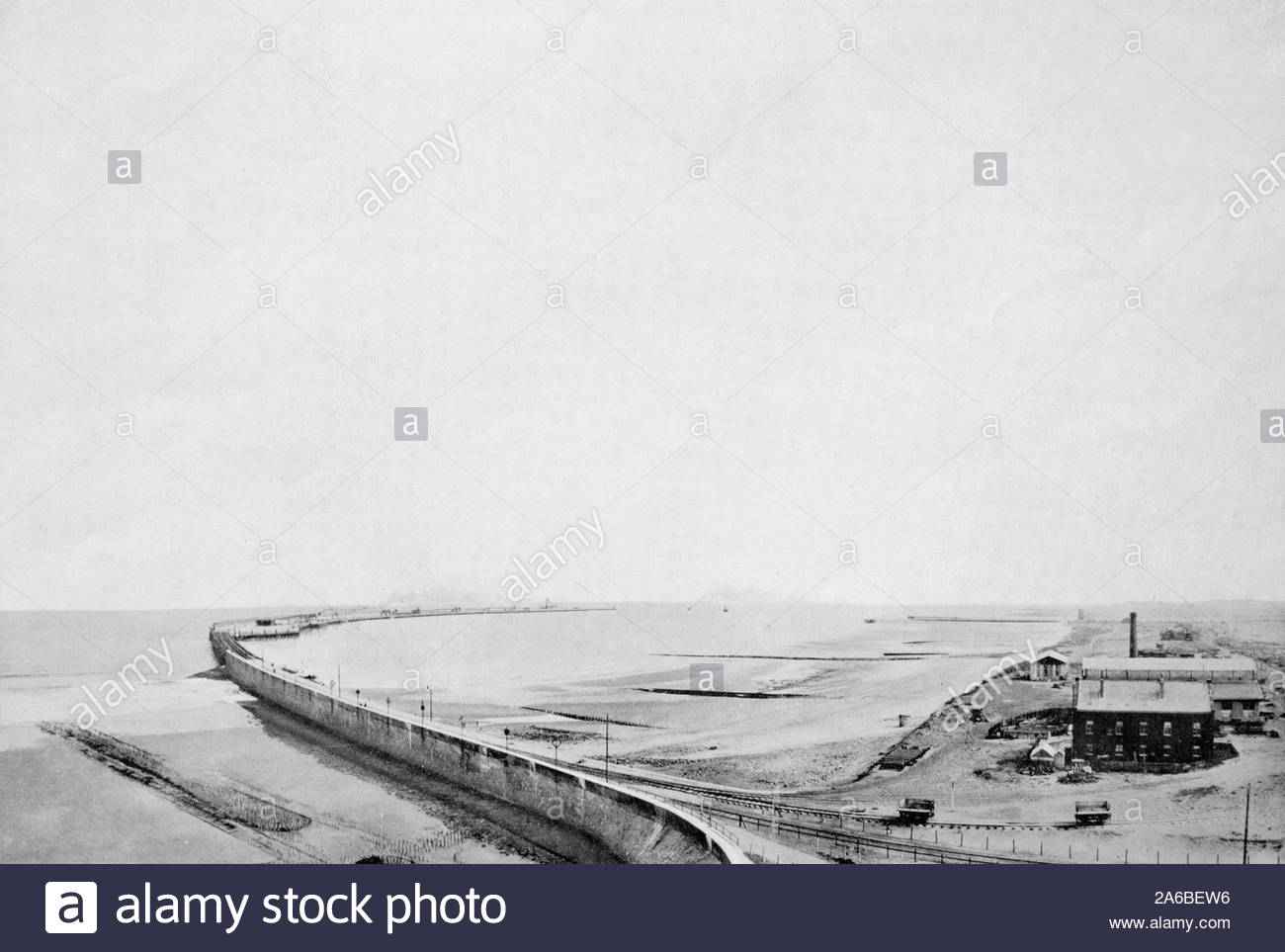 WW1 Zeebrugge Belgium after bombardment from British ships, vintage photograph from 1914 Stock Photohttps://www.alamy.com/image-license-details/?v=1https://www.alamy.com/ww1-zeebrugge-belgium-after-bombardment-from-british-ships-vintage-photograph-from-1914-image330938082.html
WW1 Zeebrugge Belgium after bombardment from British ships, vintage photograph from 1914 Stock Photohttps://www.alamy.com/image-license-details/?v=1https://www.alamy.com/ww1-zeebrugge-belgium-after-bombardment-from-british-ships-vintage-photograph-from-1914-image330938082.htmlRM2A6BEW6–WW1 Zeebrugge Belgium after bombardment from British ships, vintage photograph from 1914
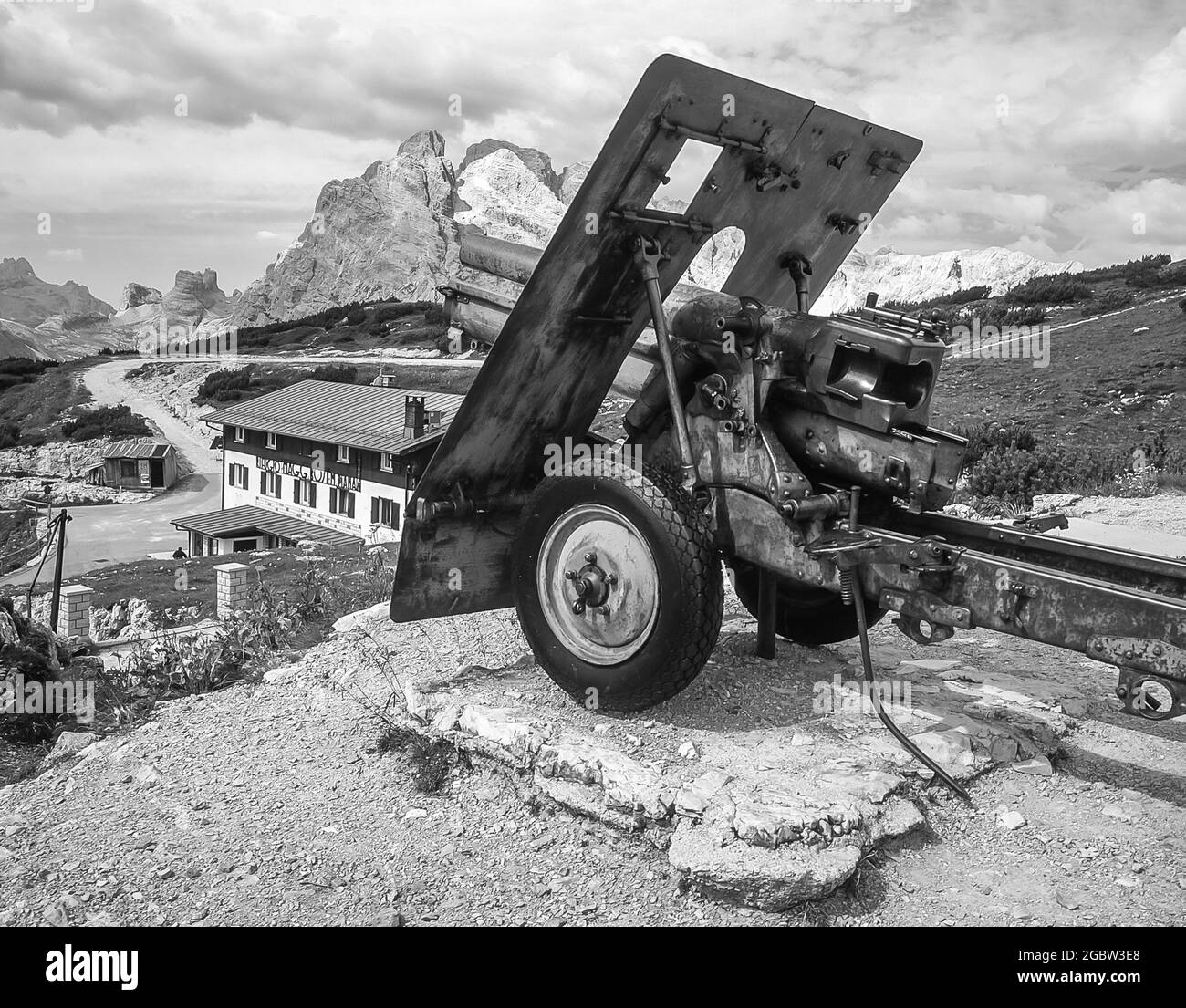 This is an Austrian Skoda Field gun from 1917 near Rifugio Bosi museum on Monte Piana near Cortina d'Ampezzo in the Italian Dolomites of the Alto Adige. The mountain was part of the Italian Front Line defence system in the First World War against the Austrian-Hungarian forces allied to Germany. Stock Photohttps://www.alamy.com/image-license-details/?v=1https://www.alamy.com/this-is-an-austrian-skoda-field-gun-from-1917-near-rifugio-bosi-museum-on-monte-piana-near-cortina-dampezzo-in-the-italian-dolomites-of-the-alto-adige-the-mountain-was-part-of-the-italian-front-line-defence-system-in-the-first-world-war-against-the-austrian-hungarian-forces-allied-to-germany-image437571968.html
This is an Austrian Skoda Field gun from 1917 near Rifugio Bosi museum on Monte Piana near Cortina d'Ampezzo in the Italian Dolomites of the Alto Adige. The mountain was part of the Italian Front Line defence system in the First World War against the Austrian-Hungarian forces allied to Germany. Stock Photohttps://www.alamy.com/image-license-details/?v=1https://www.alamy.com/this-is-an-austrian-skoda-field-gun-from-1917-near-rifugio-bosi-museum-on-monte-piana-near-cortina-dampezzo-in-the-italian-dolomites-of-the-alto-adige-the-mountain-was-part-of-the-italian-front-line-defence-system-in-the-first-world-war-against-the-austrian-hungarian-forces-allied-to-germany-image437571968.htmlRM2GBW3E8–This is an Austrian Skoda Field gun from 1917 near Rifugio Bosi museum on Monte Piana near Cortina d'Ampezzo in the Italian Dolomites of the Alto Adige. The mountain was part of the Italian Front Line defence system in the First World War against the Austrian-Hungarian forces allied to Germany.
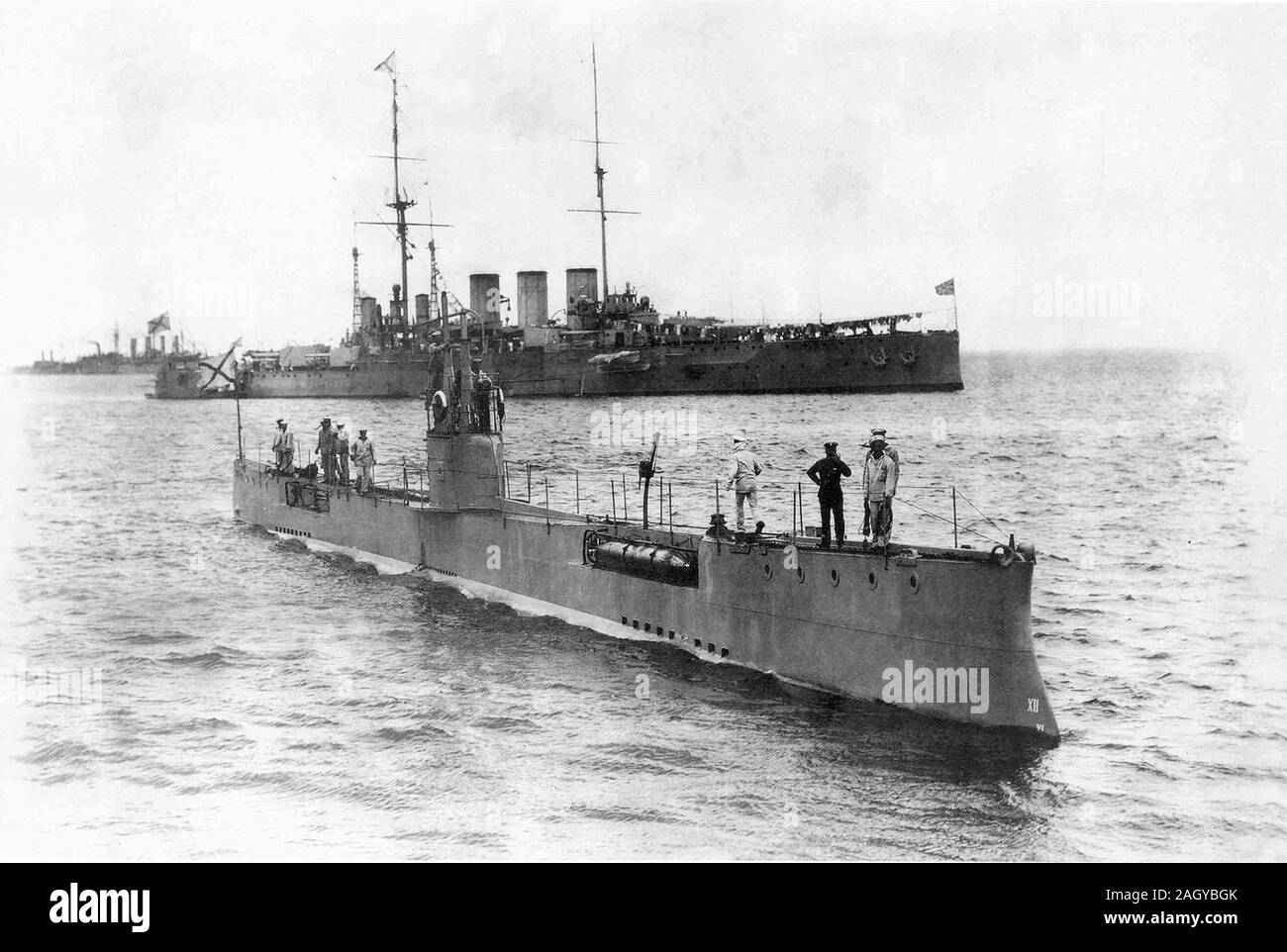 Russian submarine Akula, launched in 1907, first Russian submarine able to cruise long distances. Akula was built for the Imperial Russian Navy. Akula saw service during World War I and sank in November 1915 after hitting a naval mine. Imperial Russian submarine Akula and armoured cruiser Ryurik, 1913 Stock Photohttps://www.alamy.com/image-license-details/?v=1https://www.alamy.com/russian-submarine-akula-launched-in-1907-first-russian-submarine-able-to-cruise-long-distances-akula-was-built-for-the-imperial-russian-navy-akula-saw-service-during-world-war-i-and-sank-in-november-1915-after-hitting-a-naval-mine-imperial-russian-submarine-akula-and-armoured-cruiser-ryurik-1913-image337433283.html
Russian submarine Akula, launched in 1907, first Russian submarine able to cruise long distances. Akula was built for the Imperial Russian Navy. Akula saw service during World War I and sank in November 1915 after hitting a naval mine. Imperial Russian submarine Akula and armoured cruiser Ryurik, 1913 Stock Photohttps://www.alamy.com/image-license-details/?v=1https://www.alamy.com/russian-submarine-akula-launched-in-1907-first-russian-submarine-able-to-cruise-long-distances-akula-was-built-for-the-imperial-russian-navy-akula-saw-service-during-world-war-i-and-sank-in-november-1915-after-hitting-a-naval-mine-imperial-russian-submarine-akula-and-armoured-cruiser-ryurik-1913-image337433283.htmlRM2AGYBGK–Russian submarine Akula, launched in 1907, first Russian submarine able to cruise long distances. Akula was built for the Imperial Russian Navy. Akula saw service during World War I and sank in November 1915 after hitting a naval mine. Imperial Russian submarine Akula and armoured cruiser Ryurik, 1913
 A picture from a series of humurous novelty images taken by Sunday People photographer Dennis Hutchinson - Doomwatch! For 12 years at weekends, Wallace Reekie sat up in the mountain waiting for World War Three and the first atom bomb, so he could raise the alarm. Up to going to press - still waiting. Circa: 1980 Stock Photohttps://www.alamy.com/image-license-details/?v=1https://www.alamy.com/a-picture-from-a-series-of-humurous-novelty-images-taken-by-sunday-people-photographer-dennis-hutchinson-doomwatch!-for-12-years-at-weekends-wallace-reekie-sat-up-in-the-mountain-waiting-for-world-war-three-and-the-first-atom-bomb-so-he-could-raise-the-alarm-up-to-going-to-press-still-waiting-circa-1980-image464994786.html
A picture from a series of humurous novelty images taken by Sunday People photographer Dennis Hutchinson - Doomwatch! For 12 years at weekends, Wallace Reekie sat up in the mountain waiting for World War Three and the first atom bomb, so he could raise the alarm. Up to going to press - still waiting. Circa: 1980 Stock Photohttps://www.alamy.com/image-license-details/?v=1https://www.alamy.com/a-picture-from-a-series-of-humurous-novelty-images-taken-by-sunday-people-photographer-dennis-hutchinson-doomwatch!-for-12-years-at-weekends-wallace-reekie-sat-up-in-the-mountain-waiting-for-world-war-three-and-the-first-atom-bomb-so-he-could-raise-the-alarm-up-to-going-to-press-still-waiting-circa-1980-image464994786.htmlRM2J0E9GJ–A picture from a series of humurous novelty images taken by Sunday People photographer Dennis Hutchinson - Doomwatch! For 12 years at weekends, Wallace Reekie sat up in the mountain waiting for World War Three and the first atom bomb, so he could raise the alarm. Up to going to press - still waiting. Circa: 1980
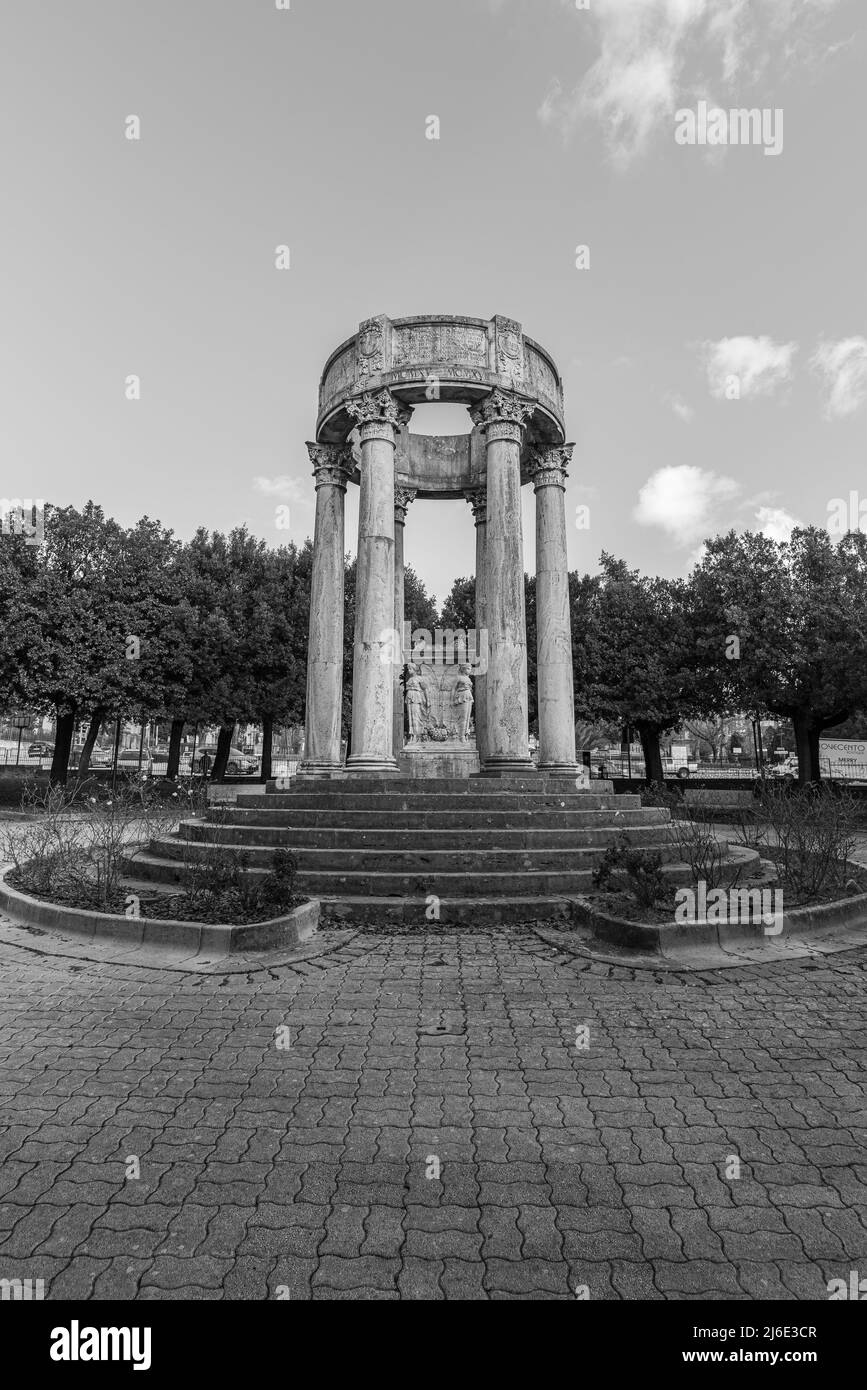 Isernia, Molise. Monument to the fallen of the First World War Stock Photohttps://www.alamy.com/image-license-details/?v=1https://www.alamy.com/isernia-molise-monument-to-the-fallen-of-the-first-world-war-image468677911.html
Isernia, Molise. Monument to the fallen of the First World War Stock Photohttps://www.alamy.com/image-license-details/?v=1https://www.alamy.com/isernia-molise-monument-to-the-fallen-of-the-first-world-war-image468677911.htmlRF2J6E3CR–Isernia, Molise. Monument to the fallen of the First World War
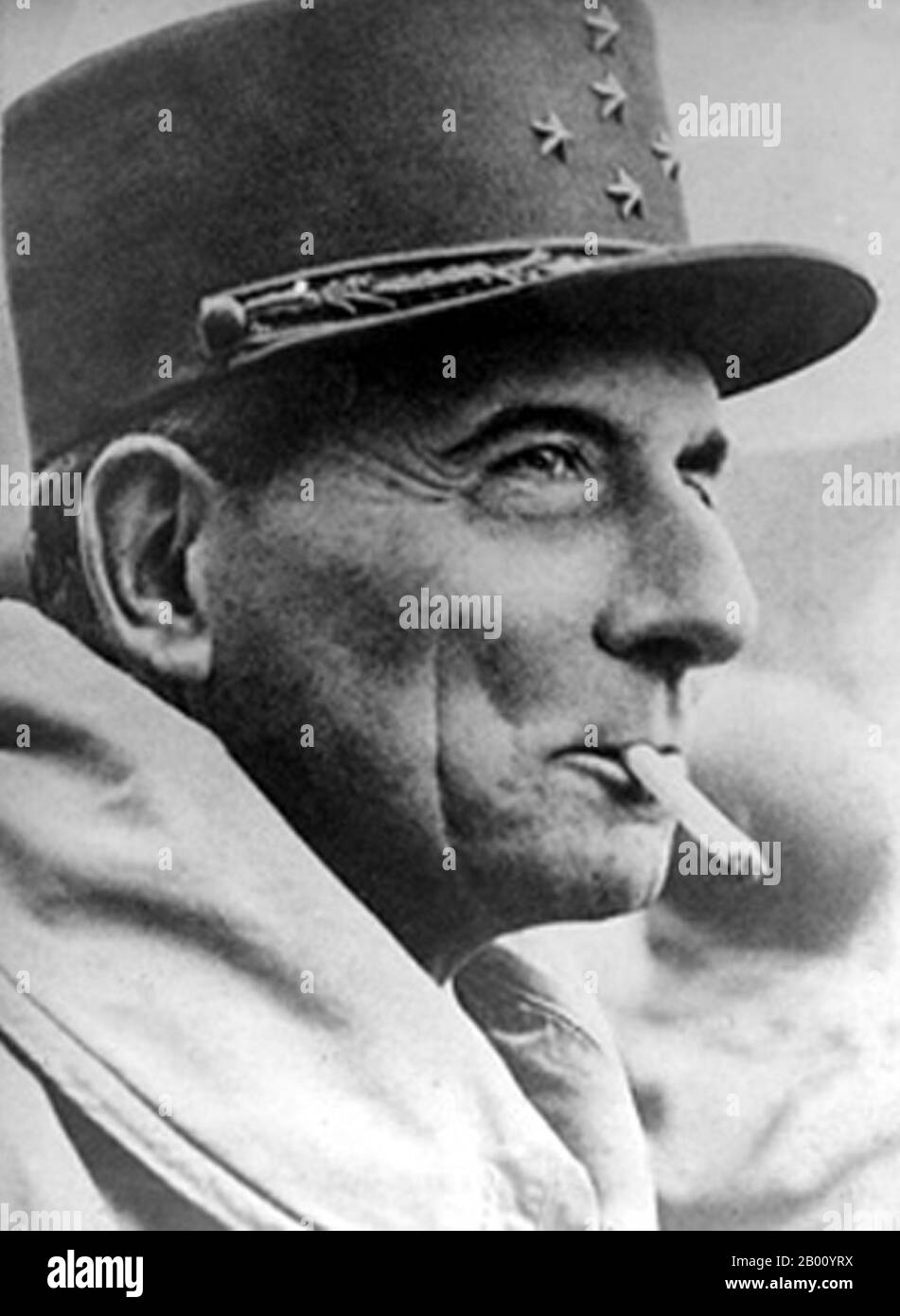 Vietnam: General Jean de Lattre de Tassigny (1889-1952), was a French military hero and commander in the First Indochina War. Having fought in the First World War and Rif War (Second Moroccan War), the aristocratic de Tassigny (nickname: 'Roi Jean') was a hero of the Free French in World War II. Later, he commanded French troops in Indochina during the First Indochina War. He won three major victories at Vinh Yen, Mao Khe and Yen Cu Ha and successfully defended the north of the country against the Viet Minh but his only son, Bernard de Lattre de Tassigny, was killed in action during the war. Stock Photohttps://www.alamy.com/image-license-details/?v=1https://www.alamy.com/vietnam-general-jean-de-lattre-de-tassigny-1889-1952-was-a-french-military-hero-and-commander-in-the-first-indochina-war-having-fought-in-the-first-world-war-and-rif-war-second-moroccan-war-the-aristocratic-de-tassigny-nickname-roi-jean-was-a-hero-of-the-free-french-in-world-war-ii-later-he-commanded-french-troops-in-indochina-during-the-first-indochina-war-he-won-three-major-victories-at-vinh-yen-mao-khe-and-yen-cu-ha-and-successfully-defended-the-north-of-the-country-against-the-viet-minh-but-his-only-son-bernard-de-lattre-de-tassigny-was-killed-in-action-during-the-war-image344229198.html
Vietnam: General Jean de Lattre de Tassigny (1889-1952), was a French military hero and commander in the First Indochina War. Having fought in the First World War and Rif War (Second Moroccan War), the aristocratic de Tassigny (nickname: 'Roi Jean') was a hero of the Free French in World War II. Later, he commanded French troops in Indochina during the First Indochina War. He won three major victories at Vinh Yen, Mao Khe and Yen Cu Ha and successfully defended the north of the country against the Viet Minh but his only son, Bernard de Lattre de Tassigny, was killed in action during the war. Stock Photohttps://www.alamy.com/image-license-details/?v=1https://www.alamy.com/vietnam-general-jean-de-lattre-de-tassigny-1889-1952-was-a-french-military-hero-and-commander-in-the-first-indochina-war-having-fought-in-the-first-world-war-and-rif-war-second-moroccan-war-the-aristocratic-de-tassigny-nickname-roi-jean-was-a-hero-of-the-free-french-in-world-war-ii-later-he-commanded-french-troops-in-indochina-during-the-first-indochina-war-he-won-three-major-victories-at-vinh-yen-mao-khe-and-yen-cu-ha-and-successfully-defended-the-north-of-the-country-against-the-viet-minh-but-his-only-son-bernard-de-lattre-de-tassigny-was-killed-in-action-during-the-war-image344229198.htmlRM2B00YRX–Vietnam: General Jean de Lattre de Tassigny (1889-1952), was a French military hero and commander in the First Indochina War. Having fought in the First World War and Rif War (Second Moroccan War), the aristocratic de Tassigny (nickname: 'Roi Jean') was a hero of the Free French in World War II. Later, he commanded French troops in Indochina during the First Indochina War. He won three major victories at Vinh Yen, Mao Khe and Yen Cu Ha and successfully defended the north of the country against the Viet Minh but his only son, Bernard de Lattre de Tassigny, was killed in action during the war.
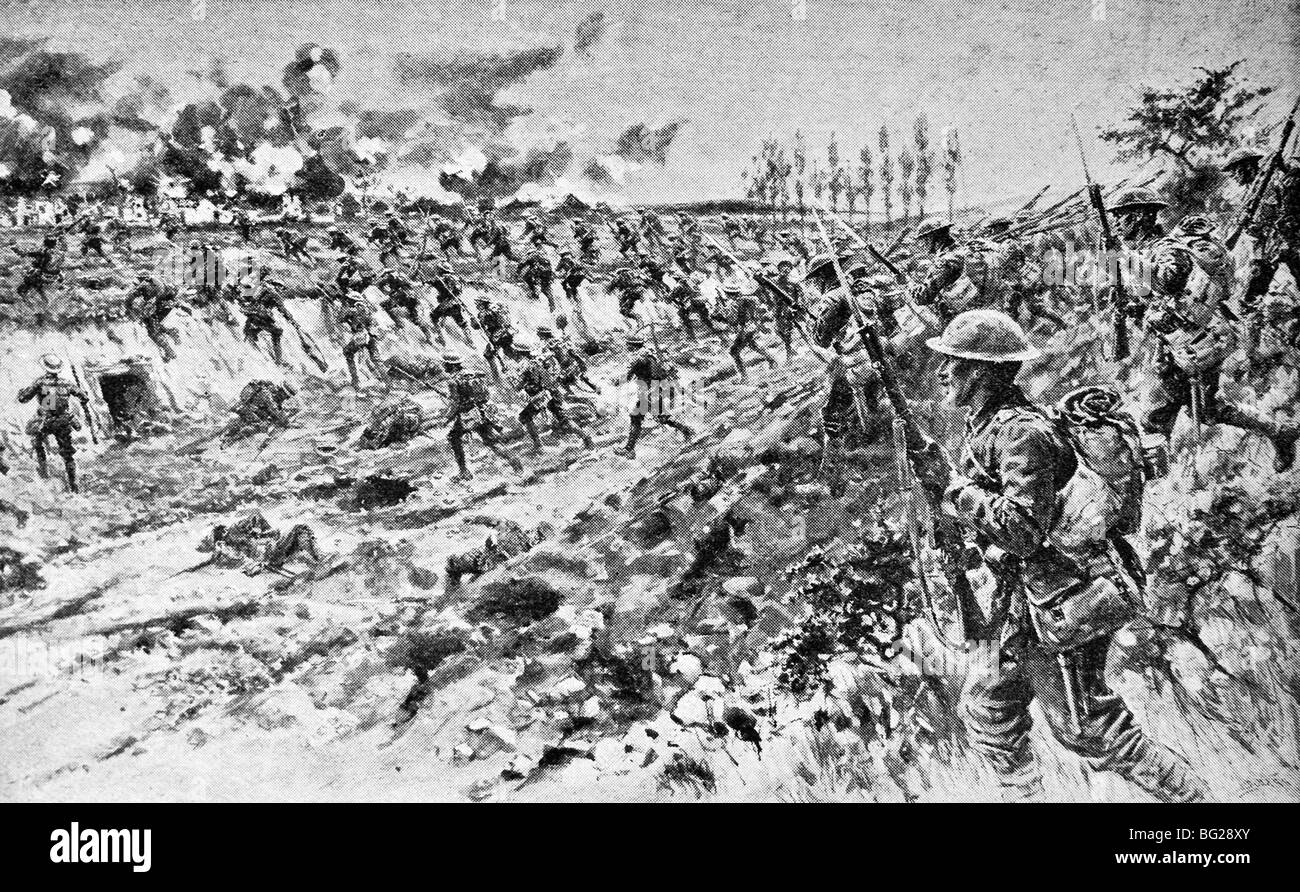 Contemporary WW1 illustration of British troops capturing the French village of Montauban in the Battle of the Somme in 1916. Stock Photohttps://www.alamy.com/image-license-details/?v=1https://www.alamy.com/stock-photo-contemporary-ww1-illustration-of-british-troops-capturing-the-french-27095795.html
Contemporary WW1 illustration of British troops capturing the French village of Montauban in the Battle of the Somme in 1916. Stock Photohttps://www.alamy.com/image-license-details/?v=1https://www.alamy.com/stock-photo-contemporary-ww1-illustration-of-british-troops-capturing-the-french-27095795.htmlRMBG28XY–Contemporary WW1 illustration of British troops capturing the French village of Montauban in the Battle of the Somme in 1916.
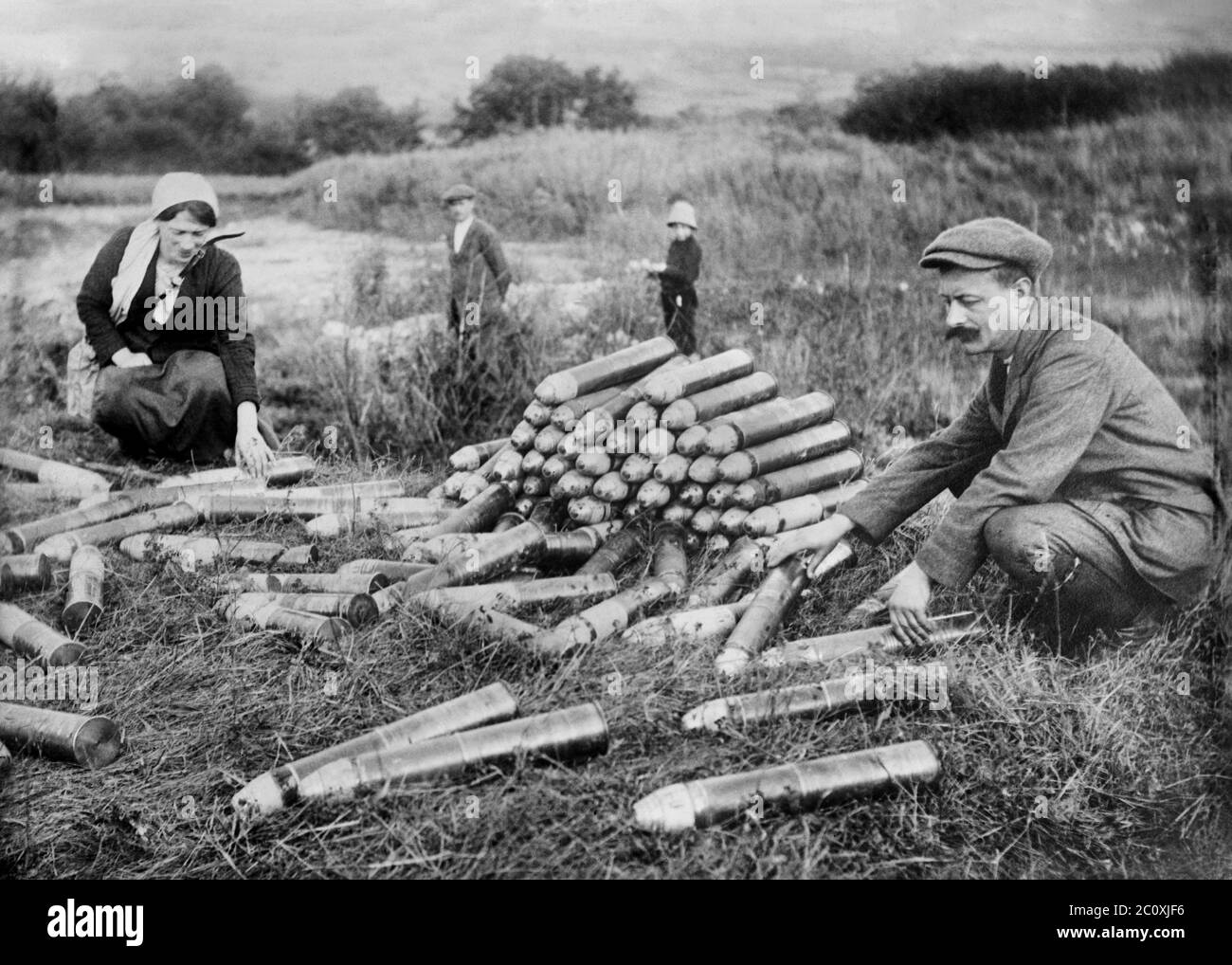 Man and Woman looking at Artillery Shells abandoned by German Troops after the First Battle of the Marne, France, Bain News Service, October 1914 Stock Photohttps://www.alamy.com/image-license-details/?v=1https://www.alamy.com/man-and-woman-looking-at-artillery-shells-abandoned-by-german-troops-after-the-first-battle-of-the-marne-france-bain-news-service-october-1914-image362003018.html
Man and Woman looking at Artillery Shells abandoned by German Troops after the First Battle of the Marne, France, Bain News Service, October 1914 Stock Photohttps://www.alamy.com/image-license-details/?v=1https://www.alamy.com/man-and-woman-looking-at-artillery-shells-abandoned-by-german-troops-after-the-first-battle-of-the-marne-france-bain-news-service-october-1914-image362003018.htmlRM2C0XJF6–Man and Woman looking at Artillery Shells abandoned by German Troops after the First Battle of the Marne, France, Bain News Service, October 1914
 1914 Regiment of German WWI soldiers in train station of Malines / Mechelen, Belgium waiting for transport to the front in France during World War One Stock Photohttps://www.alamy.com/image-license-details/?v=1https://www.alamy.com/1914-regiment-of-german-wwi-soldiers-in-train-station-of-malines-mechelen-belgium-waiting-for-transport-to-the-front-in-france-during-world-war-one-image620517526.html
1914 Regiment of German WWI soldiers in train station of Malines / Mechelen, Belgium waiting for transport to the front in France during World War One Stock Photohttps://www.alamy.com/image-license-details/?v=1https://www.alamy.com/1914-regiment-of-german-wwi-soldiers-in-train-station-of-malines-mechelen-belgium-waiting-for-transport-to-the-front-in-france-during-world-war-one-image620517526.htmlRM2Y1F0C6–1914 Regiment of German WWI soldiers in train station of Malines / Mechelen, Belgium waiting for transport to the front in France during World War One
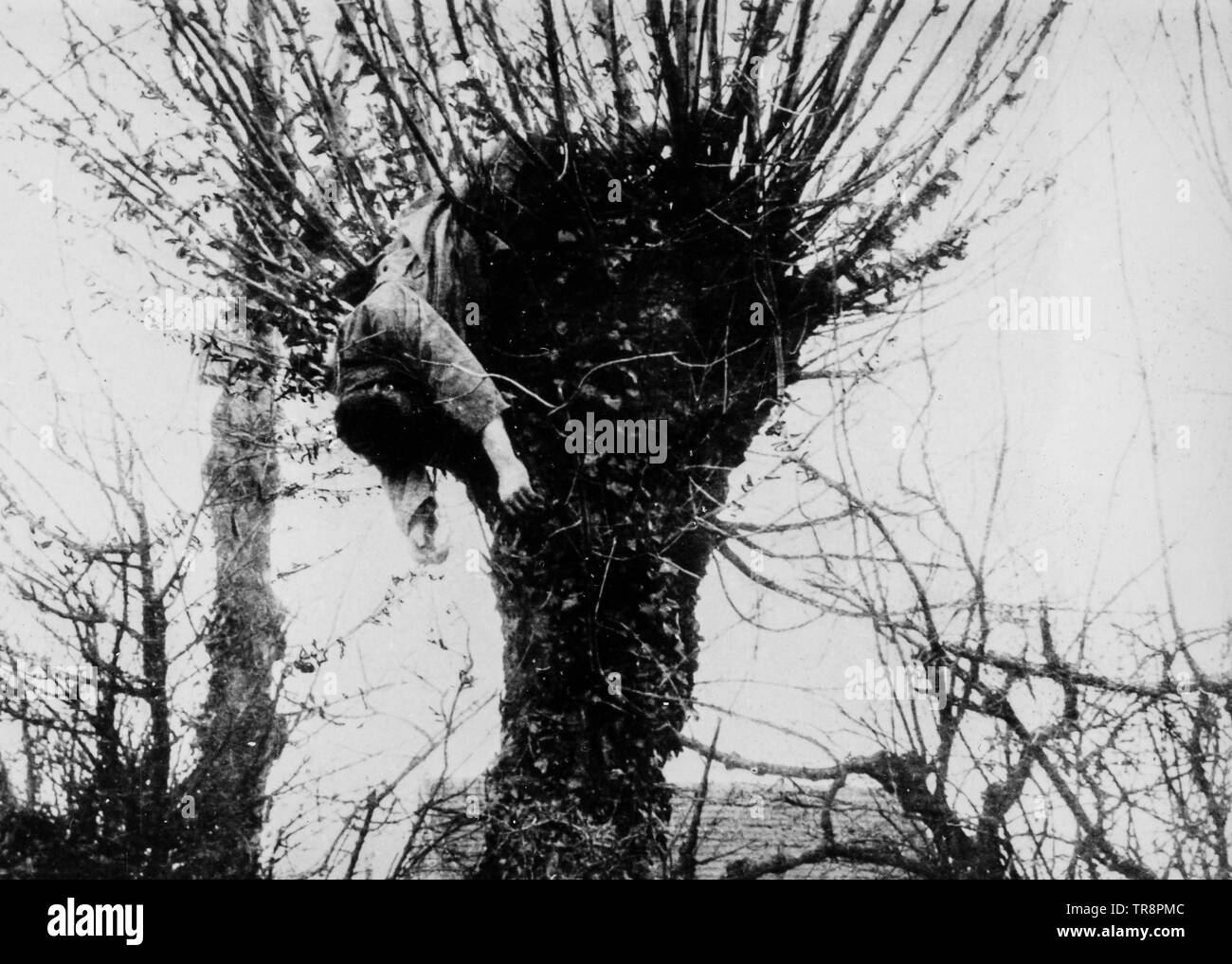 killed sniper, first world war Stock Photohttps://www.alamy.com/image-license-details/?v=1https://www.alamy.com/killed-sniper-first-world-war-image255275676.html
killed sniper, first world war Stock Photohttps://www.alamy.com/image-license-details/?v=1https://www.alamy.com/killed-sniper-first-world-war-image255275676.htmlRMTR8PMC–killed sniper, first world war
 Image caption: A Vietnamese refugee youngster, one of the first to arrive at Camp Tulega in Camp Pendleton, California on April 29, 1975, catches the attention of a photographer. The bewildered expression in their eyes captures the plight of Vietnamese refugees during the Vietnam War. Stock Photohttps://www.alamy.com/image-license-details/?v=1https://www.alamy.com/image-caption-a-vietnamese-refugee-youngster-one-of-the-first-to-arrive-at-camp-tulega-in-camp-pendleton-california-on-april-29-1975-catches-the-attention-of-a-photographer-the-bewildered-expression-in-their-eyes-captures-the-plight-of-vietnamese-refugees-during-the-vietnam-war-image574165792.html
Image caption: A Vietnamese refugee youngster, one of the first to arrive at Camp Tulega in Camp Pendleton, California on April 29, 1975, catches the attention of a photographer. The bewildered expression in their eyes captures the plight of Vietnamese refugees during the Vietnam War. Stock Photohttps://www.alamy.com/image-license-details/?v=1https://www.alamy.com/image-caption-a-vietnamese-refugee-youngster-one-of-the-first-to-arrive-at-camp-tulega-in-camp-pendleton-california-on-april-29-1975-catches-the-attention-of-a-photographer-the-bewildered-expression-in-their-eyes-captures-the-plight-of-vietnamese-refugees-during-the-vietnam-war-image574165792.htmlRM2TA3E94–Image caption: A Vietnamese refugee youngster, one of the first to arrive at Camp Tulega in Camp Pendleton, California on April 29, 1975, catches the attention of a photographer. The bewildered expression in their eyes captures the plight of Vietnamese refugees during the Vietnam War.
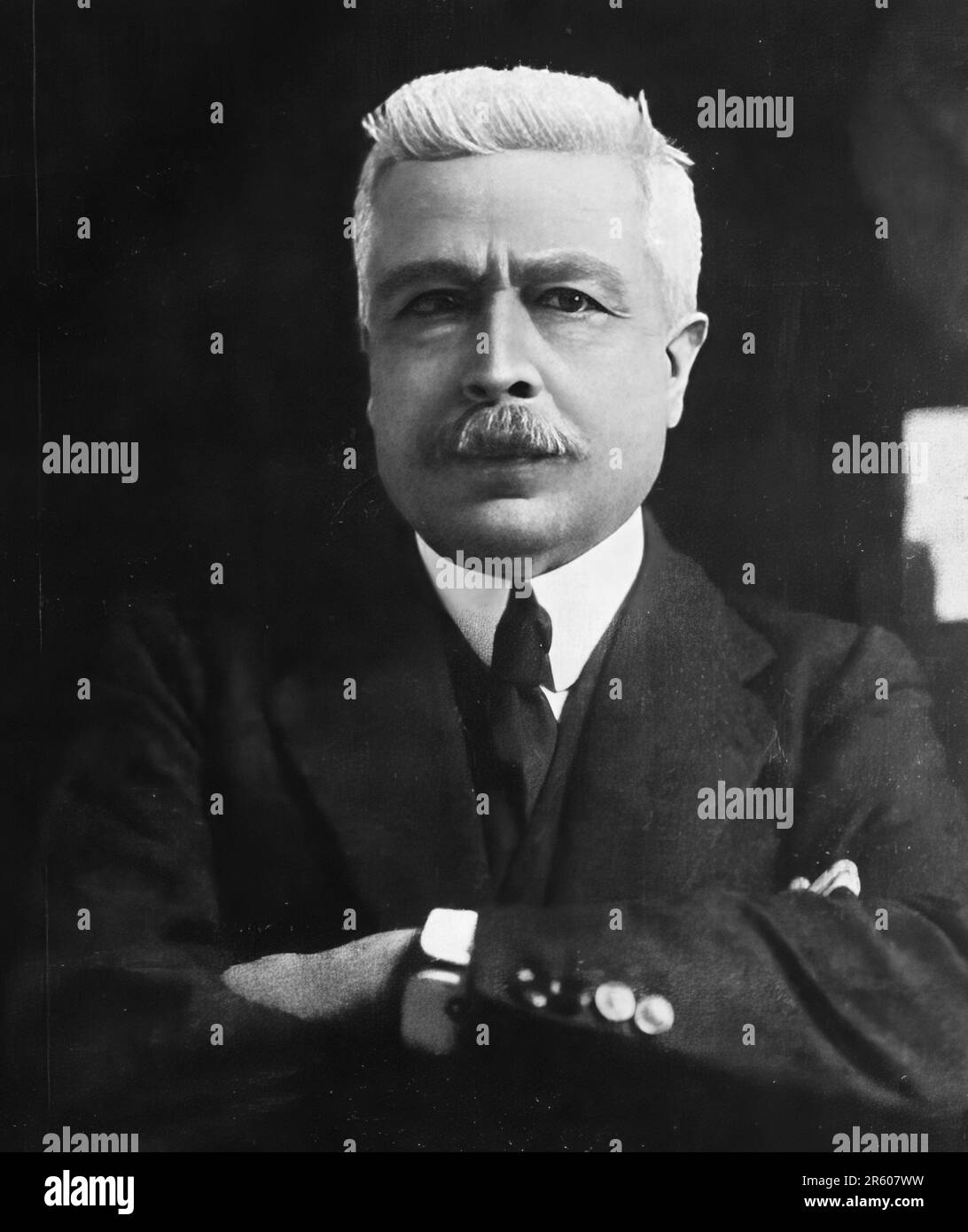 Vittorio Emanuele Orlando was a prominent Italian politician and statesman who played a key role in the First World War and the post-war Stock Photohttps://www.alamy.com/image-license-details/?v=1https://www.alamy.com/vittorio-emanuele-orlando-was-a-prominent-italian-politician-and-statesman-who-played-a-key-role-in-the-first-world-war-and-the-post-war-image554425925.html
Vittorio Emanuele Orlando was a prominent Italian politician and statesman who played a key role in the First World War and the post-war Stock Photohttps://www.alamy.com/image-license-details/?v=1https://www.alamy.com/vittorio-emanuele-orlando-was-a-prominent-italian-politician-and-statesman-who-played-a-key-role-in-the-first-world-war-and-the-post-war-image554425925.htmlRF2R607WW–Vittorio Emanuele Orlando was a prominent Italian politician and statesman who played a key role in the First World War and the post-war
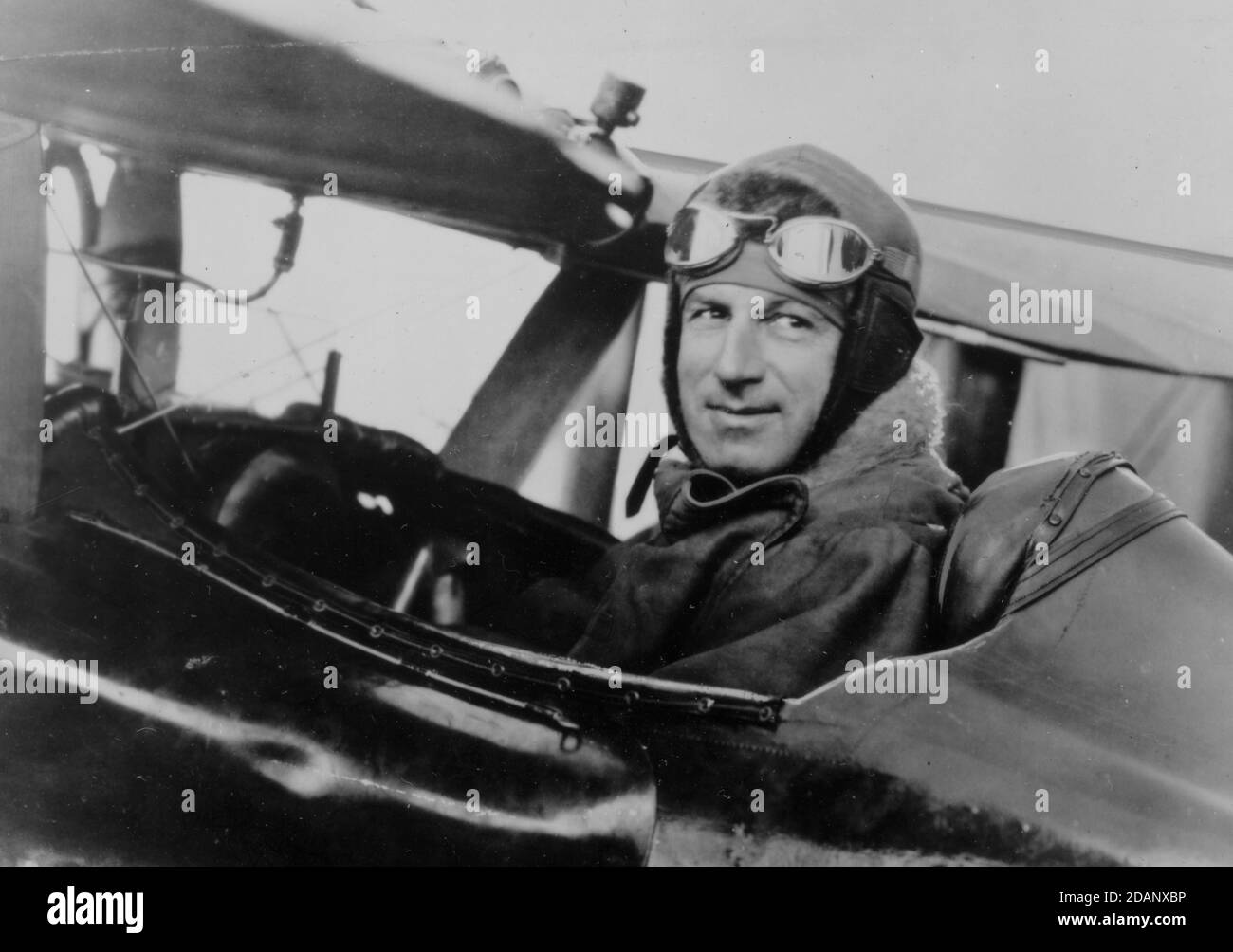 US Army General Billy Mitchell (1879-1936) piloting a Thomas-Morse pursuit plane in about 1921. With a wealthy father, Billy, still joined the Army as a Private at age 19. In 1916, as a Lt. posted in Washington, he met the Wright brothers. Because the Army did not yet train pilots, Mitchell personally paid for flying lessons on weekends. In World War I he became America's military expert on airplanes. In 1918 he was Brigadier General commanding 90 squadrons of planes in Europe. He pushed to make airplanes true offensive weapons. For my other WW I-related images, Search: Prestor vintage WW I Stock Photohttps://www.alamy.com/image-license-details/?v=1https://www.alamy.com/us-army-general-billy-mitchell-1879-1936-piloting-a-thomas-morse-pursuit-plane-in-about-1921-with-a-wealthy-father-billy-still-joined-the-army-as-a-private-at-age-19-in-1916-as-a-lt-posted-in-washington-he-met-the-wright-brothers-because-the-army-did-not-yet-train-pilots-mitchell-personally-paid-for-flying-lessons-on-weekends-in-world-war-i-he-became-americas-military-expert-on-airplanes-in-1918-he-was-brigadier-general-commanding-90-squadrons-of-planes-in-europe-he-pushed-to-make-airplanes-true-offensive-weapons-for-my-other-ww-i-related-images-search-prestor-vintage-ww-i-image385256362.html
US Army General Billy Mitchell (1879-1936) piloting a Thomas-Morse pursuit plane in about 1921. With a wealthy father, Billy, still joined the Army as a Private at age 19. In 1916, as a Lt. posted in Washington, he met the Wright brothers. Because the Army did not yet train pilots, Mitchell personally paid for flying lessons on weekends. In World War I he became America's military expert on airplanes. In 1918 he was Brigadier General commanding 90 squadrons of planes in Europe. He pushed to make airplanes true offensive weapons. For my other WW I-related images, Search: Prestor vintage WW I Stock Photohttps://www.alamy.com/image-license-details/?v=1https://www.alamy.com/us-army-general-billy-mitchell-1879-1936-piloting-a-thomas-morse-pursuit-plane-in-about-1921-with-a-wealthy-father-billy-still-joined-the-army-as-a-private-at-age-19-in-1916-as-a-lt-posted-in-washington-he-met-the-wright-brothers-because-the-army-did-not-yet-train-pilots-mitchell-personally-paid-for-flying-lessons-on-weekends-in-world-war-i-he-became-americas-military-expert-on-airplanes-in-1918-he-was-brigadier-general-commanding-90-squadrons-of-planes-in-europe-he-pushed-to-make-airplanes-true-offensive-weapons-for-my-other-ww-i-related-images-search-prestor-vintage-ww-i-image385256362.htmlRF2DANXBP–US Army General Billy Mitchell (1879-1936) piloting a Thomas-Morse pursuit plane in about 1921. With a wealthy father, Billy, still joined the Army as a Private at age 19. In 1916, as a Lt. posted in Washington, he met the Wright brothers. Because the Army did not yet train pilots, Mitchell personally paid for flying lessons on weekends. In World War I he became America's military expert on airplanes. In 1918 he was Brigadier General commanding 90 squadrons of planes in Europe. He pushed to make airplanes true offensive weapons. For my other WW I-related images, Search: Prestor vintage WW I
 Bystander- Military officer collecting images of Gaby Deslys Stock Photohttps://www.alamy.com/image-license-details/?v=1https://www.alamy.com/bystander-military-officer-collecting-images-of-gaby-deslys-image501435581.html
Bystander- Military officer collecting images of Gaby Deslys Stock Photohttps://www.alamy.com/image-license-details/?v=1https://www.alamy.com/bystander-military-officer-collecting-images-of-gaby-deslys-image501435581.htmlRM2M3PA5H–Bystander- Military officer collecting images of Gaby Deslys
 Horace Nicholls - Adult and child farm hands, and German prisoners of war outside a farm yard barn in 1918, Suffolk, England, UK Stock Photohttps://www.alamy.com/image-license-details/?v=1https://www.alamy.com/horace-nicholls-adult-and-child-farm-hands-and-german-prisoners-of-war-outside-a-farm-yard-barn-in-1918-suffolk-england-uk-image559550668.html
Horace Nicholls - Adult and child farm hands, and German prisoners of war outside a farm yard barn in 1918, Suffolk, England, UK Stock Photohttps://www.alamy.com/image-license-details/?v=1https://www.alamy.com/horace-nicholls-adult-and-child-farm-hands-and-german-prisoners-of-war-outside-a-farm-yard-barn-in-1918-suffolk-england-uk-image559550668.htmlRF2RE9MGC–Horace Nicholls - Adult and child farm hands, and German prisoners of war outside a farm yard barn in 1918, Suffolk, England, UK
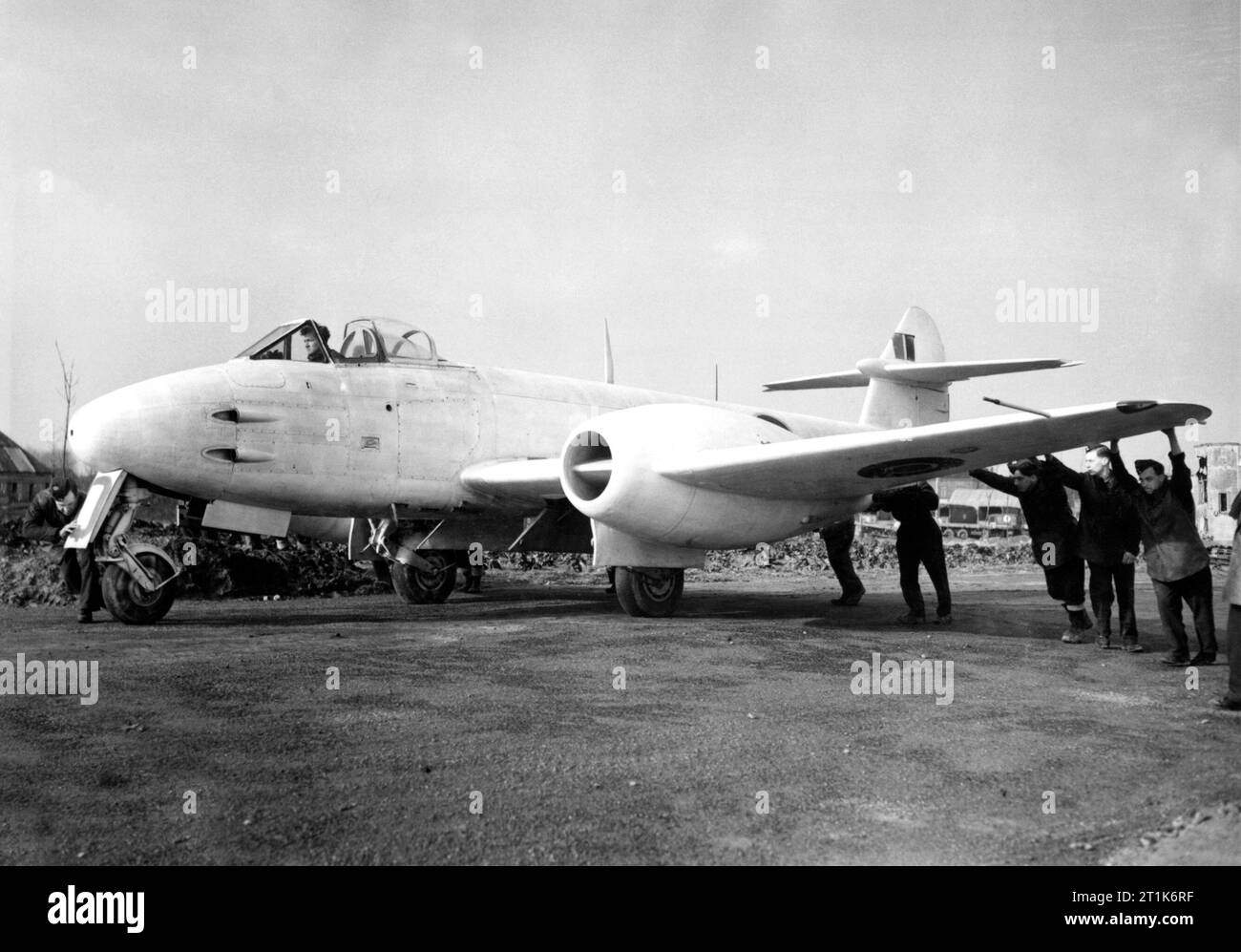 Ground crew manhandle a Gloster Meteor F.3 of the 616 Squadron Detachment at B58/Melsbroek, Belgium, on 6 February 1945. The aircraft had deployed to the Continent to counter the threat of the German Me262 jet fighter which had started to enter service with the Luftwaffe. The Meteor was the first British jet fighter and the Allies' only jet aircraft to achieve combat operations during the Second World War. The Meteor first flew in 1943 and commenced operations on 27 July 1944 with No. 616 Squadron RAF. Some of these images have had some dodging and burning done and have been retouched to remov Stock Photohttps://www.alamy.com/image-license-details/?v=1https://www.alamy.com/ground-crew-manhandle-a-gloster-meteor-f3-of-the-616-squadron-detachment-at-b58melsbroek-belgium-on-6-february-1945-the-aircraft-had-deployed-to-the-continent-to-counter-the-threat-of-the-german-me262-jet-fighter-which-had-started-to-enter-service-with-the-luftwaffe-the-meteor-was-the-first-british-jet-fighter-and-the-allies-only-jet-aircraft-to-achieve-combat-operations-during-the-second-world-war-the-meteor-first-flew-in-1943-and-commenced-operations-on-27-july-1944-with-no-616-squadron-raf-some-of-these-images-have-had-some-dodging-and-burning-done-and-have-been-retouched-to-remov-image568979251.html
Ground crew manhandle a Gloster Meteor F.3 of the 616 Squadron Detachment at B58/Melsbroek, Belgium, on 6 February 1945. The aircraft had deployed to the Continent to counter the threat of the German Me262 jet fighter which had started to enter service with the Luftwaffe. The Meteor was the first British jet fighter and the Allies' only jet aircraft to achieve combat operations during the Second World War. The Meteor first flew in 1943 and commenced operations on 27 July 1944 with No. 616 Squadron RAF. Some of these images have had some dodging and burning done and have been retouched to remov Stock Photohttps://www.alamy.com/image-license-details/?v=1https://www.alamy.com/ground-crew-manhandle-a-gloster-meteor-f3-of-the-616-squadron-detachment-at-b58melsbroek-belgium-on-6-february-1945-the-aircraft-had-deployed-to-the-continent-to-counter-the-threat-of-the-german-me262-jet-fighter-which-had-started-to-enter-service-with-the-luftwaffe-the-meteor-was-the-first-british-jet-fighter-and-the-allies-only-jet-aircraft-to-achieve-combat-operations-during-the-second-world-war-the-meteor-first-flew-in-1943-and-commenced-operations-on-27-july-1944-with-no-616-squadron-raf-some-of-these-images-have-had-some-dodging-and-burning-done-and-have-been-retouched-to-remov-image568979251.htmlRM2T1K6RF–Ground crew manhandle a Gloster Meteor F.3 of the 616 Squadron Detachment at B58/Melsbroek, Belgium, on 6 February 1945. The aircraft had deployed to the Continent to counter the threat of the German Me262 jet fighter which had started to enter service with the Luftwaffe. The Meteor was the first British jet fighter and the Allies' only jet aircraft to achieve combat operations during the Second World War. The Meteor first flew in 1943 and commenced operations on 27 July 1944 with No. 616 Squadron RAF. Some of these images have had some dodging and burning done and have been retouched to remov
 World War I Photos: A number of French Renault tanks used by the U.S. First Tank Brigade, near the front lines; Varennes-en-Argonne, Meuse, France ca. October 1918 Stock Photohttps://www.alamy.com/image-license-details/?v=1https://www.alamy.com/world-war-i-photos-a-number-of-french-renault-tanks-used-by-the-us-first-tank-brigade-near-the-front-lines-varennes-en-argonne-meuse-france-ca-october-1918-image601567358.html
World War I Photos: A number of French Renault tanks used by the U.S. First Tank Brigade, near the front lines; Varennes-en-Argonne, Meuse, France ca. October 1918 Stock Photohttps://www.alamy.com/image-license-details/?v=1https://www.alamy.com/world-war-i-photos-a-number-of-french-renault-tanks-used-by-the-us-first-tank-brigade-near-the-front-lines-varennes-en-argonne-meuse-france-ca-october-1918-image601567358.htmlRM2WXKN8E–World War I Photos: A number of French Renault tanks used by the U.S. First Tank Brigade, near the front lines; Varennes-en-Argonne, Meuse, France ca. October 1918
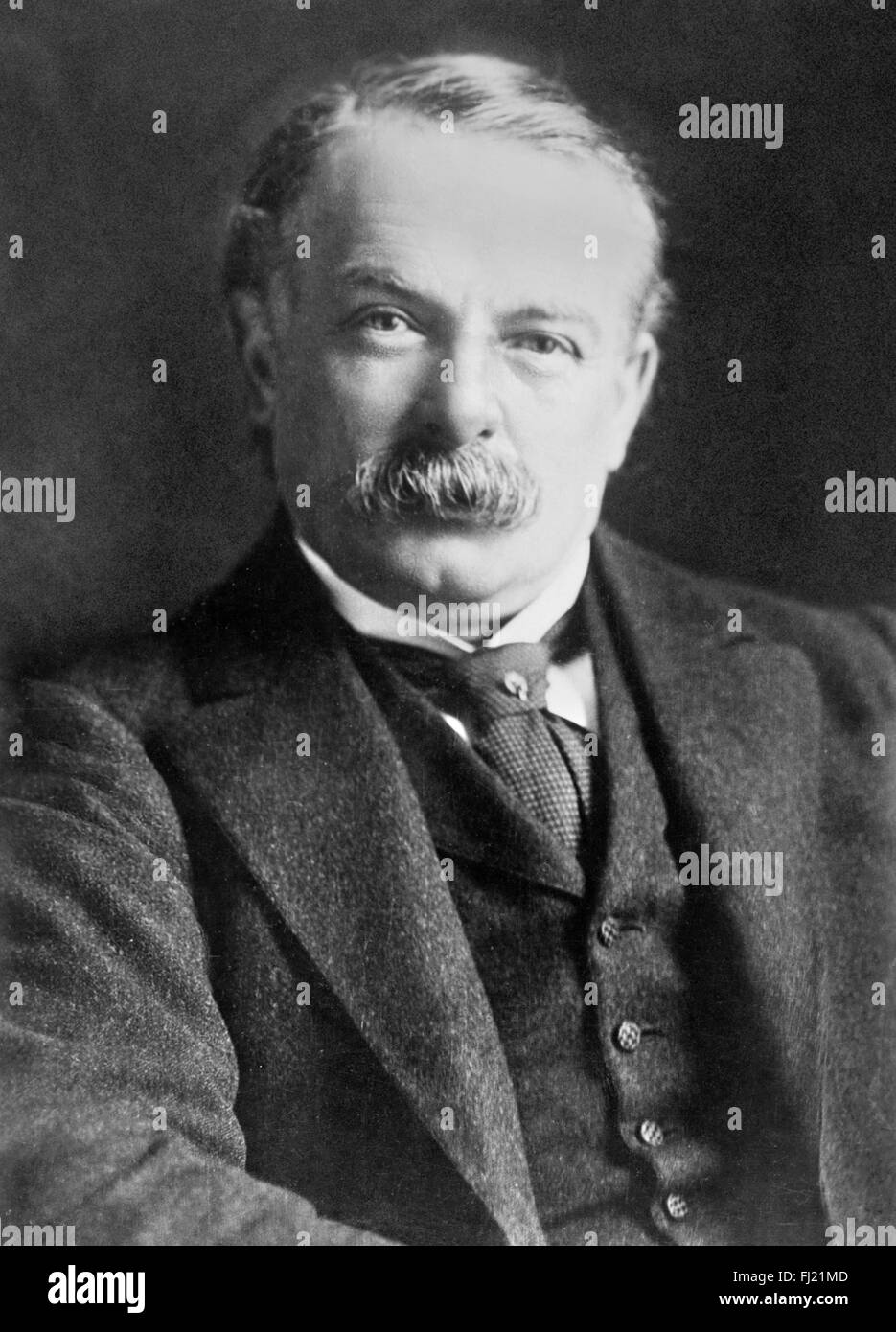 David Lloyd George, liberal politician who was British Prime Minister during and immediately after the First World War. Photo by Bain News Service, date unknown. Stock Photohttps://www.alamy.com/image-license-details/?v=1https://www.alamy.com/stock-photo-david-lloyd-george-liberal-politician-who-was-british-prime-minister-97160909.html
David Lloyd George, liberal politician who was British Prime Minister during and immediately after the First World War. Photo by Bain News Service, date unknown. Stock Photohttps://www.alamy.com/image-license-details/?v=1https://www.alamy.com/stock-photo-david-lloyd-george-liberal-politician-who-was-british-prime-minister-97160909.htmlRMFJ21MD–David Lloyd George, liberal politician who was British Prime Minister during and immediately after the First World War. Photo by Bain News Service, date unknown.
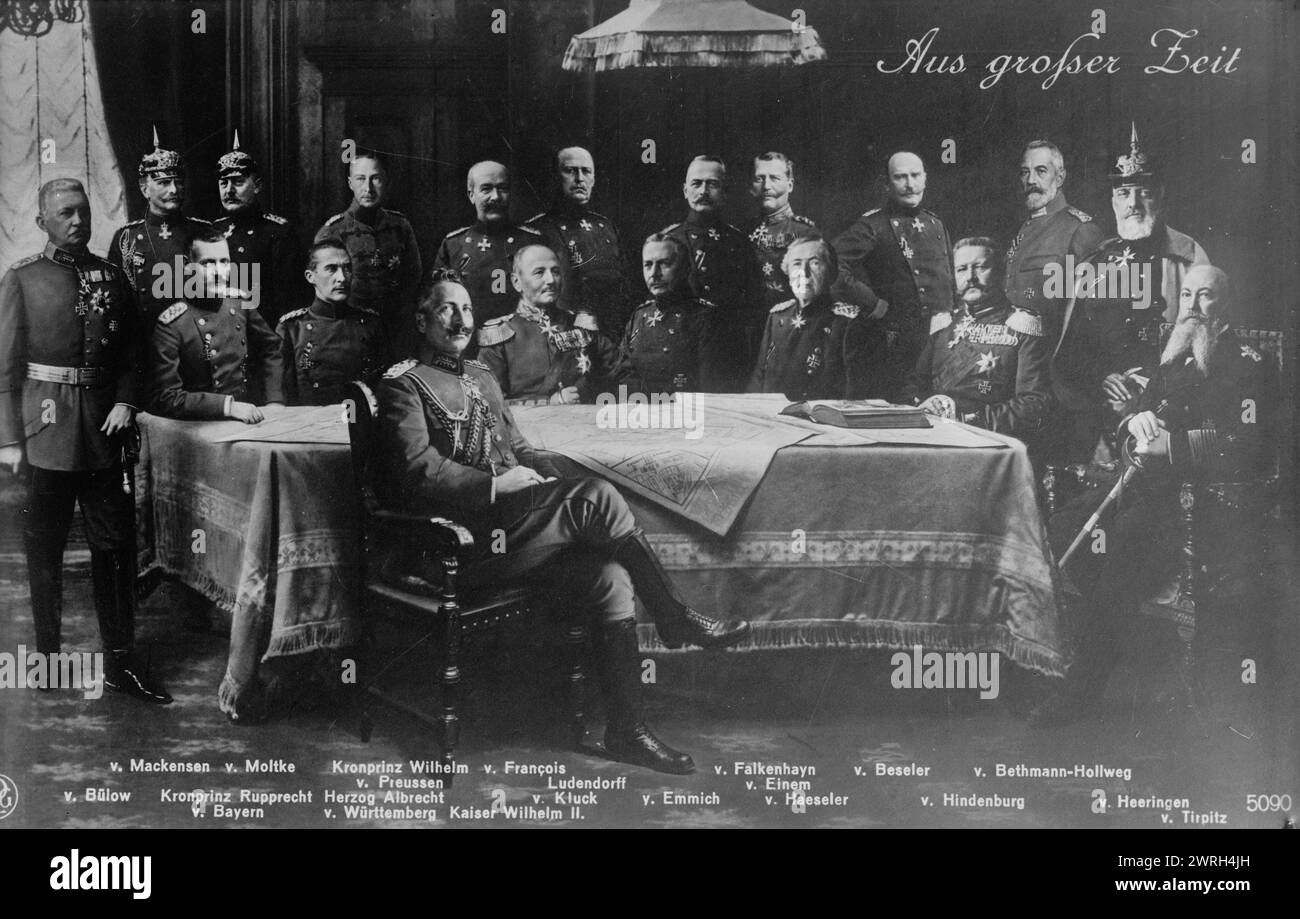 Kaiser and his Generals, between c1910 and c1915. German Kaiser Wilhelm II with his generals during World War I: standing left to right: von Bulow, von Mackensen, von Molike, Crown Prince William of Prussia, von Francois, Ludendorff, von Falkenheyn, von Eimen, von Beseler, von Bethman-Hollweg, von Heeringen. Seated left to right: Crown Prince Rupprecht of Photograph is a montage of separate images which have been photographed together. Stock Photohttps://www.alamy.com/image-license-details/?v=1https://www.alamy.com/kaiser-and-his-generals-between-c1910-and-c1915-german-kaiser-wilhelm-ii-with-his-generals-during-world-war-i-standing-left-to-right-von-bulow-von-mackensen-von-molike-crown-prince-william-of-prussia-von-francois-ludendorff-von-falkenheyn-von-eimen-von-beseler-von-bethman-hollweg-von-heeringen-seated-left-to-right-crown-prince-rupprecht-of-photograph-is-a-montage-of-separate-images-which-have-been-photographed-together-image599666441.html
Kaiser and his Generals, between c1910 and c1915. German Kaiser Wilhelm II with his generals during World War I: standing left to right: von Bulow, von Mackensen, von Molike, Crown Prince William of Prussia, von Francois, Ludendorff, von Falkenheyn, von Eimen, von Beseler, von Bethman-Hollweg, von Heeringen. Seated left to right: Crown Prince Rupprecht of Photograph is a montage of separate images which have been photographed together. Stock Photohttps://www.alamy.com/image-license-details/?v=1https://www.alamy.com/kaiser-and-his-generals-between-c1910-and-c1915-german-kaiser-wilhelm-ii-with-his-generals-during-world-war-i-standing-left-to-right-von-bulow-von-mackensen-von-molike-crown-prince-william-of-prussia-von-francois-ludendorff-von-falkenheyn-von-eimen-von-beseler-von-bethman-hollweg-von-heeringen-seated-left-to-right-crown-prince-rupprecht-of-photograph-is-a-montage-of-separate-images-which-have-been-photographed-together-image599666441.htmlRM2WRH4JH–Kaiser and his Generals, between c1910 and c1915. German Kaiser Wilhelm II with his generals during World War I: standing left to right: von Bulow, von Mackensen, von Molike, Crown Prince William of Prussia, von Francois, Ludendorff, von Falkenheyn, von Eimen, von Beseler, von Bethman-Hollweg, von Heeringen. Seated left to right: Crown Prince Rupprecht of Photograph is a montage of separate images which have been photographed together.
 WW1 Dar-Es-Salaam Tanzania, vintage photograph from 1914 Stock Photohttps://www.alamy.com/image-license-details/?v=1https://www.alamy.com/ww1-dar-es-salaam-tanzania-vintage-photograph-from-1914-image331216499.html
WW1 Dar-Es-Salaam Tanzania, vintage photograph from 1914 Stock Photohttps://www.alamy.com/image-license-details/?v=1https://www.alamy.com/ww1-dar-es-salaam-tanzania-vintage-photograph-from-1914-image331216499.htmlRM2A6T60K–WW1 Dar-Es-Salaam Tanzania, vintage photograph from 1914
 This is a Italian Trench system looking towards the famous peaks of Tre Cime di Laverado on Monte Piana near Cortina d'Ampezzo in the Italian Dolomites of the Alto Adige. The mountain was part of the Italian Front Line defence system in the First World War against the Austrian-Hungarian forces allied to Germany. Stock Photohttps://www.alamy.com/image-license-details/?v=1https://www.alamy.com/this-is-a-italian-trench-system-looking-towards-the-famous-peaks-of-tre-cime-di-laverado-on-monte-piana-near-cortina-dampezzo-in-the-italian-dolomites-of-the-alto-adige-the-mountain-was-part-of-the-italian-front-line-defence-system-in-the-first-world-war-against-the-austrian-hungarian-forces-allied-to-germany-image437571891.html
This is a Italian Trench system looking towards the famous peaks of Tre Cime di Laverado on Monte Piana near Cortina d'Ampezzo in the Italian Dolomites of the Alto Adige. The mountain was part of the Italian Front Line defence system in the First World War against the Austrian-Hungarian forces allied to Germany. Stock Photohttps://www.alamy.com/image-license-details/?v=1https://www.alamy.com/this-is-a-italian-trench-system-looking-towards-the-famous-peaks-of-tre-cime-di-laverado-on-monte-piana-near-cortina-dampezzo-in-the-italian-dolomites-of-the-alto-adige-the-mountain-was-part-of-the-italian-front-line-defence-system-in-the-first-world-war-against-the-austrian-hungarian-forces-allied-to-germany-image437571891.htmlRM2GBW3BF–This is a Italian Trench system looking towards the famous peaks of Tre Cime di Laverado on Monte Piana near Cortina d'Ampezzo in the Italian Dolomites of the Alto Adige. The mountain was part of the Italian Front Line defence system in the First World War against the Austrian-Hungarian forces allied to Germany.
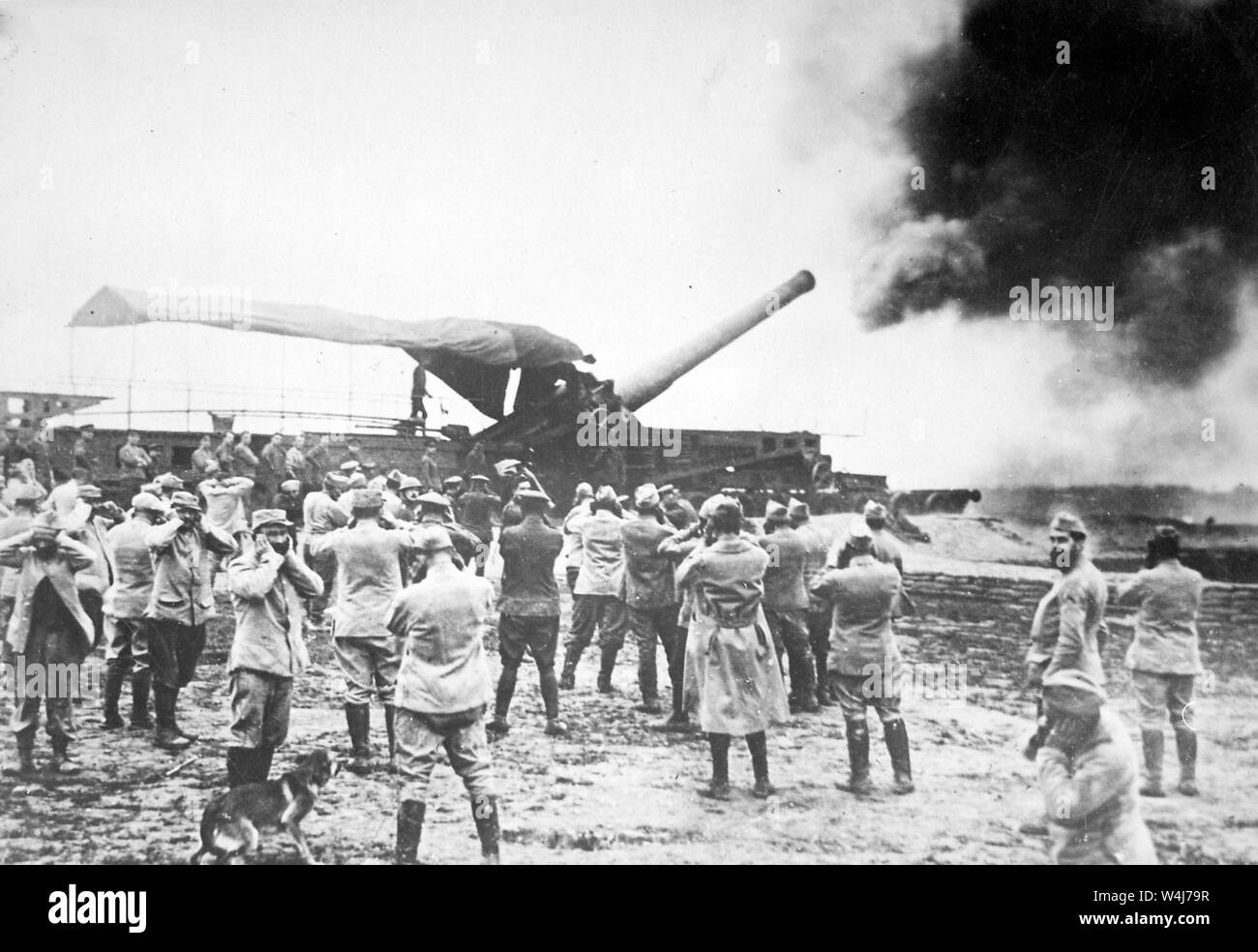 French cannon firing towards German lines during World War One 1918 Stock Photohttps://www.alamy.com/image-license-details/?v=1https://www.alamy.com/french-cannon-firing-towards-german-lines-during-world-war-one-1918-image261015043.html
French cannon firing towards German lines during World War One 1918 Stock Photohttps://www.alamy.com/image-license-details/?v=1https://www.alamy.com/french-cannon-firing-towards-german-lines-during-world-war-one-1918-image261015043.htmlRMW4J79R–French cannon firing towards German lines during World War One 1918
 The first attempt to 'burn down' London with high explosive. 1700 fires reported across the capital, these scenes in Camberwell. 8TH December 1940. Stock Photohttps://www.alamy.com/image-license-details/?v=1https://www.alamy.com/stock-photo-the-first-attempt-to-burn-down-london-with-high-explosive-1700-fires-80374768.html
The first attempt to 'burn down' London with high explosive. 1700 fires reported across the capital, these scenes in Camberwell. 8TH December 1940. Stock Photohttps://www.alamy.com/image-license-details/?v=1https://www.alamy.com/stock-photo-the-first-attempt-to-burn-down-london-with-high-explosive-1700-fires-80374768.htmlRMEJNARC–The first attempt to 'burn down' London with high explosive. 1700 fires reported across the capital, these scenes in Camberwell. 8TH December 1940.
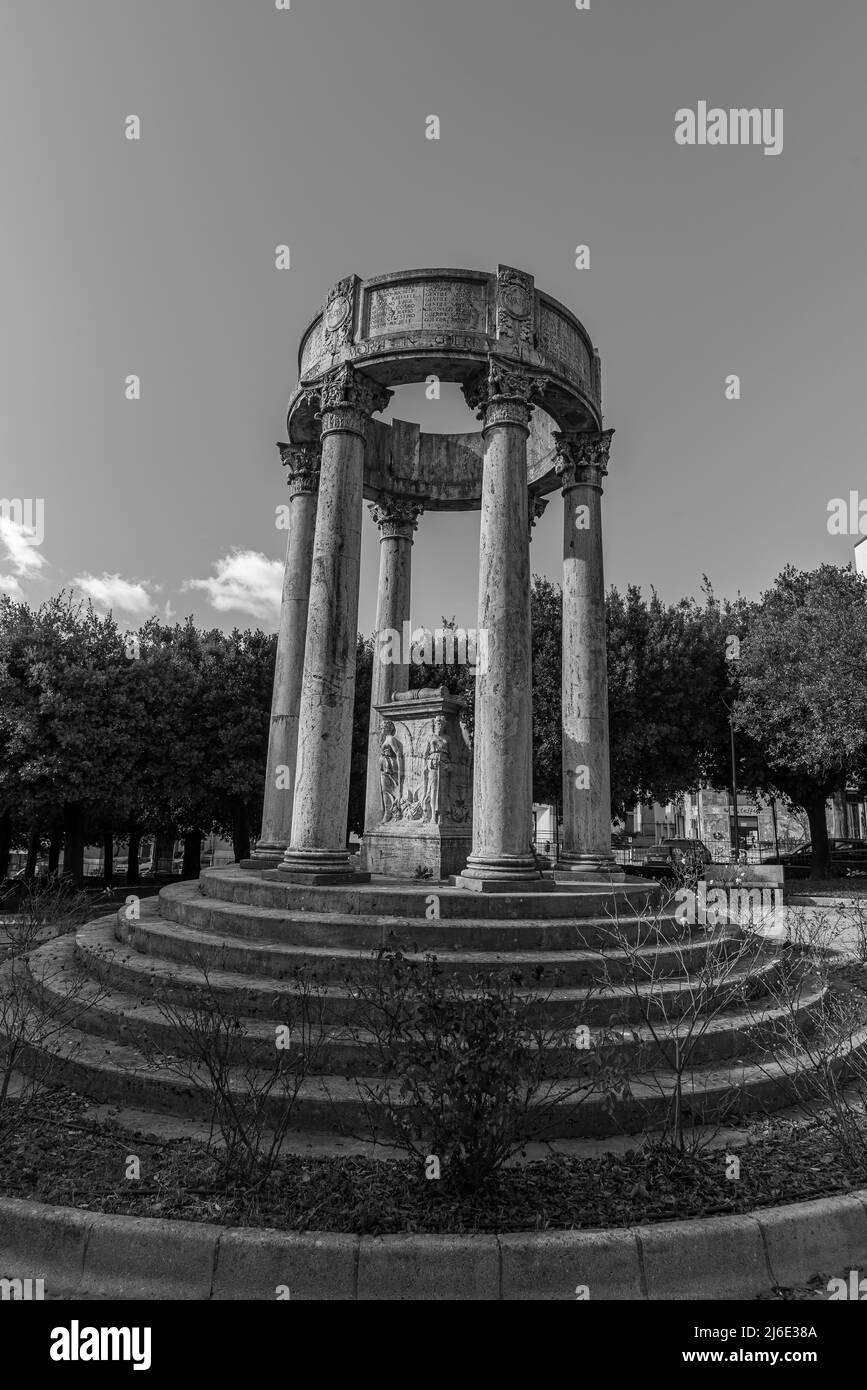 Isernia, Molise. Monument to the fallen of the First World War Stock Photohttps://www.alamy.com/image-license-details/?v=1https://www.alamy.com/isernia-molise-monument-to-the-fallen-of-the-first-world-war-image468677786.html
Isernia, Molise. Monument to the fallen of the First World War Stock Photohttps://www.alamy.com/image-license-details/?v=1https://www.alamy.com/isernia-molise-monument-to-the-fallen-of-the-first-world-war-image468677786.htmlRF2J6E38A–Isernia, Molise. Monument to the fallen of the First World War
 Vietnam: President Nguyễn Văn Thiệu (Nguyen Van Thieu) of South Vietnam standing in front of a world map, during a meeting with Lyndon B. Johnson in Hawaii, 19 July 1968. Nguyen Van Thieu was a general in the Army of the Republic of Vietnam (ARVN) who went on to become the President of South Vietnam (1965–75), first as the head of a military junta and then after winning a fraudulent election. He established an authoritarian and corrupt rule over South Vietnam until resigning and fleeing the nation a few days before the fall of Saigon and the ultimate communist victory. Stock Photohttps://www.alamy.com/image-license-details/?v=1https://www.alamy.com/vietnam-president-nguyn-vn-thiu-nguyen-van-thieu-of-south-vietnam-standing-in-front-of-a-world-map-during-a-meeting-with-lyndon-b-johnson-in-hawaii-19-july-1968-nguyen-van-thieu-was-a-general-in-the-army-of-the-republic-of-vietnam-arvn-who-went-on-to-become-the-president-of-south-vietnam-196575-first-as-the-head-of-a-military-junta-and-then-after-winning-a-fraudulent-election-he-established-an-authoritarian-and-corrupt-rule-over-south-vietnam-until-resigning-and-fleeing-the-nation-a-few-days-before-the-fall-of-saigon-and-the-ultimate-communist-victory-image344227273.html
Vietnam: President Nguyễn Văn Thiệu (Nguyen Van Thieu) of South Vietnam standing in front of a world map, during a meeting with Lyndon B. Johnson in Hawaii, 19 July 1968. Nguyen Van Thieu was a general in the Army of the Republic of Vietnam (ARVN) who went on to become the President of South Vietnam (1965–75), first as the head of a military junta and then after winning a fraudulent election. He established an authoritarian and corrupt rule over South Vietnam until resigning and fleeing the nation a few days before the fall of Saigon and the ultimate communist victory. Stock Photohttps://www.alamy.com/image-license-details/?v=1https://www.alamy.com/vietnam-president-nguyn-vn-thiu-nguyen-van-thieu-of-south-vietnam-standing-in-front-of-a-world-map-during-a-meeting-with-lyndon-b-johnson-in-hawaii-19-july-1968-nguyen-van-thieu-was-a-general-in-the-army-of-the-republic-of-vietnam-arvn-who-went-on-to-become-the-president-of-south-vietnam-196575-first-as-the-head-of-a-military-junta-and-then-after-winning-a-fraudulent-election-he-established-an-authoritarian-and-corrupt-rule-over-south-vietnam-until-resigning-and-fleeing-the-nation-a-few-days-before-the-fall-of-saigon-and-the-ultimate-communist-victory-image344227273.htmlRM2B00WB5–Vietnam: President Nguyễn Văn Thiệu (Nguyen Van Thieu) of South Vietnam standing in front of a world map, during a meeting with Lyndon B. Johnson in Hawaii, 19 July 1968. Nguyen Van Thieu was a general in the Army of the Republic of Vietnam (ARVN) who went on to become the President of South Vietnam (1965–75), first as the head of a military junta and then after winning a fraudulent election. He established an authoritarian and corrupt rule over South Vietnam until resigning and fleeing the nation a few days before the fall of Saigon and the ultimate communist victory.
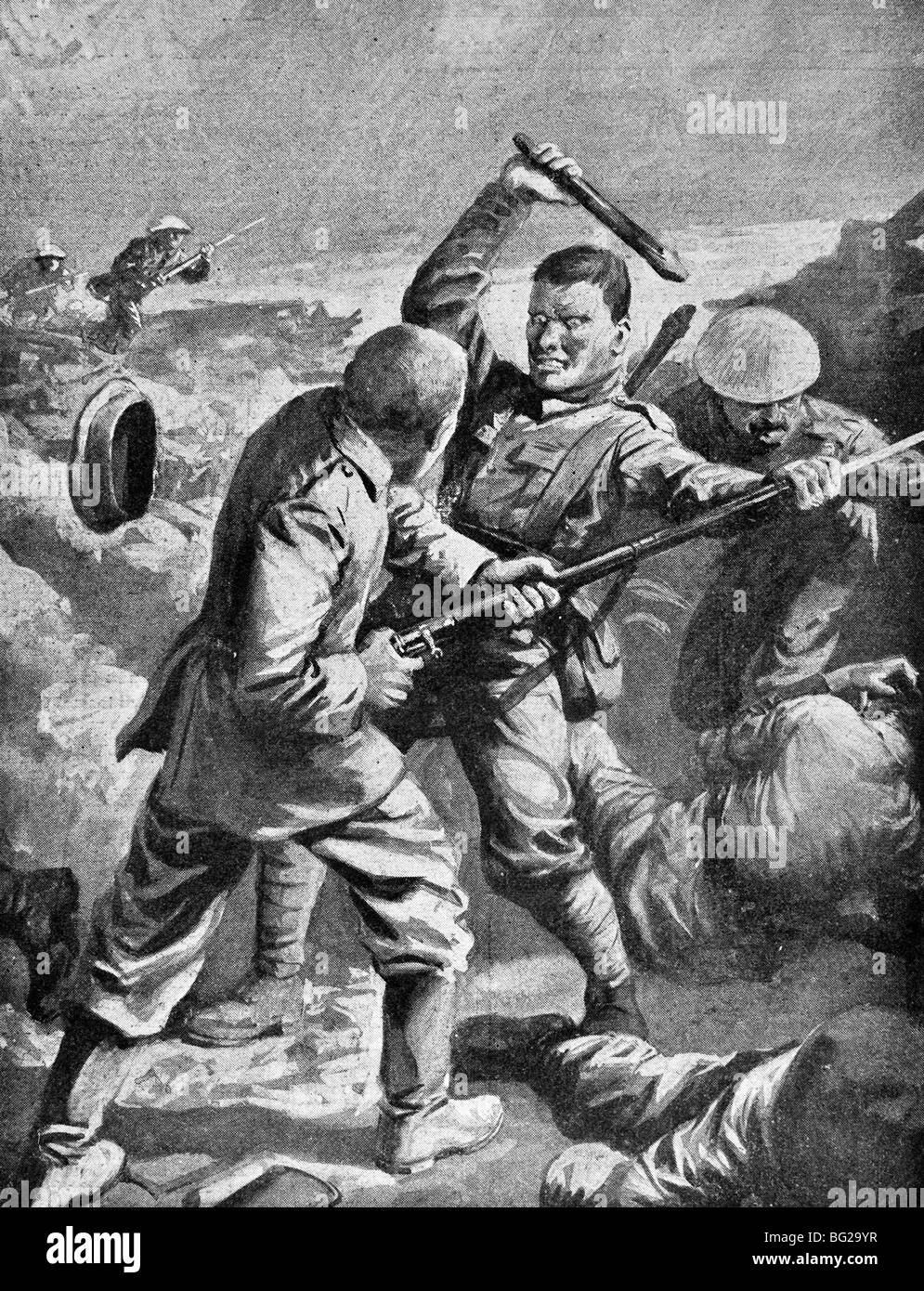 Contemporary WW1 illustration of the Royal Munster Fusiliers raiding a German trench during the Battle of the Somme in 1916. Stock Photohttps://www.alamy.com/image-license-details/?v=1https://www.alamy.com/stock-photo-contemporary-ww1-illustration-of-the-royal-munster-fusiliers-raiding-27096603.html
Contemporary WW1 illustration of the Royal Munster Fusiliers raiding a German trench during the Battle of the Somme in 1916. Stock Photohttps://www.alamy.com/image-license-details/?v=1https://www.alamy.com/stock-photo-contemporary-ww1-illustration-of-the-royal-munster-fusiliers-raiding-27096603.htmlRMBG29YR–Contemporary WW1 illustration of the Royal Munster Fusiliers raiding a German trench during the Battle of the Somme in 1916.
 Two Men carrying Box filled with American Red Cross Supplies labeled 'Front Parcels' to be delivered to the Front Lines of War, France, Lewis Wickes Hine, American National Red Cross Photograph Collection, July 1918 Stock Photohttps://www.alamy.com/image-license-details/?v=1https://www.alamy.com/two-men-carrying-box-filled-with-american-red-cross-supplies-labeled-front-parcels-to-be-delivered-to-the-front-lines-of-war-france-lewis-wickes-hine-american-national-red-cross-photograph-collection-july-1918-image353481294.html
Two Men carrying Box filled with American Red Cross Supplies labeled 'Front Parcels' to be delivered to the Front Lines of War, France, Lewis Wickes Hine, American National Red Cross Photograph Collection, July 1918 Stock Photohttps://www.alamy.com/image-license-details/?v=1https://www.alamy.com/two-men-carrying-box-filled-with-american-red-cross-supplies-labeled-front-parcels-to-be-delivered-to-the-front-lines-of-war-france-lewis-wickes-hine-american-national-red-cross-photograph-collection-july-1918-image353481294.htmlRM2BF2CYX–Two Men carrying Box filled with American Red Cross Supplies labeled 'Front Parcels' to be delivered to the Front Lines of War, France, Lewis Wickes Hine, American National Red Cross Photograph Collection, July 1918
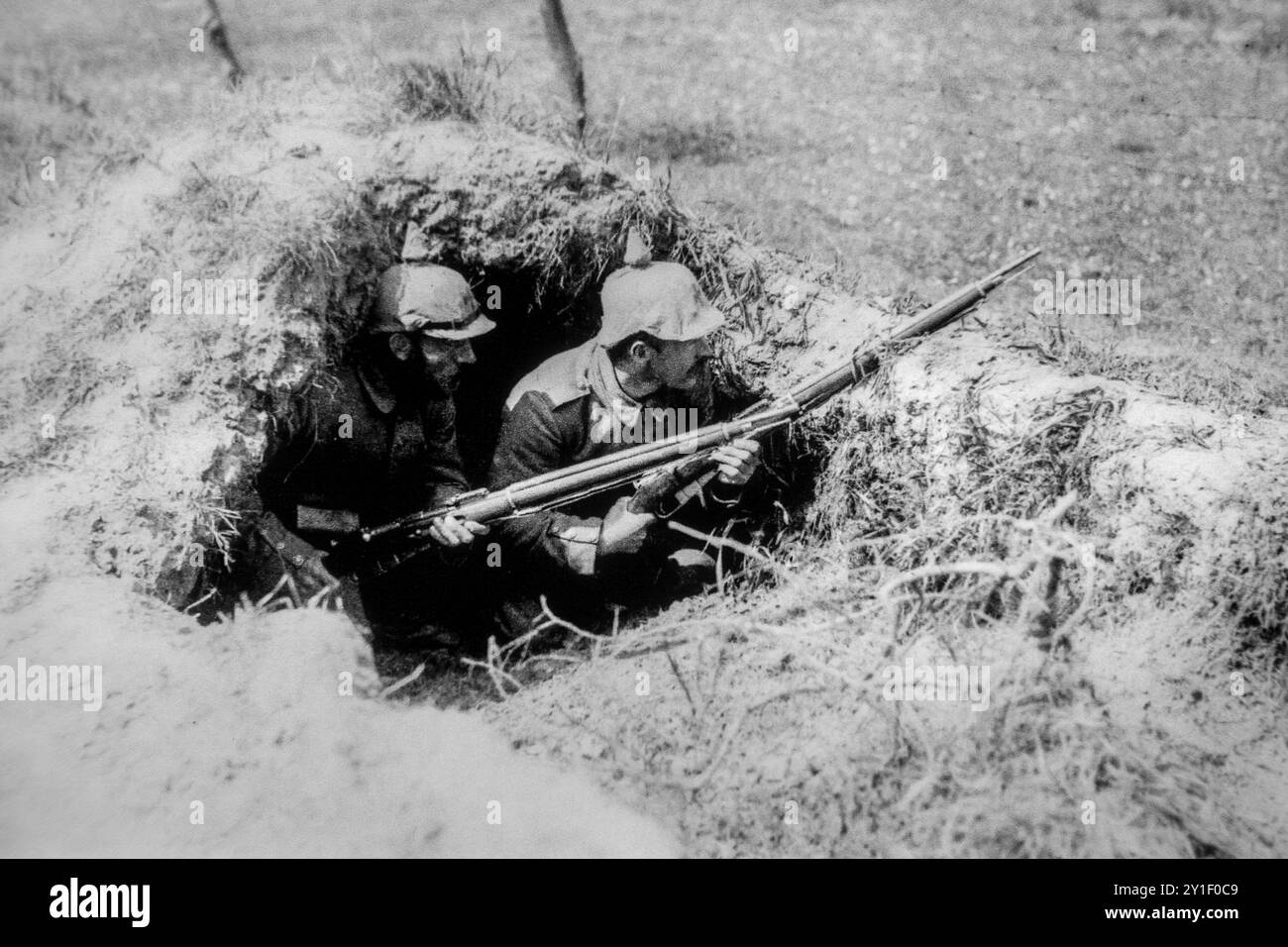 Two 1916 WWI German Landsturm soldiers with Pickelhaube, spiked helmets in foxhole / dugout on World War One battlefield in northern France Stock Photohttps://www.alamy.com/image-license-details/?v=1https://www.alamy.com/two-1916-wwi-german-landsturm-soldiers-with-pickelhaube-spiked-helmets-in-foxhole-dugout-on-world-war-one-battlefield-in-northern-france-image620517529.html
Two 1916 WWI German Landsturm soldiers with Pickelhaube, spiked helmets in foxhole / dugout on World War One battlefield in northern France Stock Photohttps://www.alamy.com/image-license-details/?v=1https://www.alamy.com/two-1916-wwi-german-landsturm-soldiers-with-pickelhaube-spiked-helmets-in-foxhole-dugout-on-world-war-one-battlefield-in-northern-france-image620517529.htmlRM2Y1F0C9–Two 1916 WWI German Landsturm soldiers with Pickelhaube, spiked helmets in foxhole / dugout on World War One battlefield in northern France
 parade of American troops before leaving for the First World War Stock Photohttps://www.alamy.com/image-license-details/?v=1https://www.alamy.com/parade-of-american-troops-before-leaving-for-the-first-world-war-image255275655.html
parade of American troops before leaving for the First World War Stock Photohttps://www.alamy.com/image-license-details/?v=1https://www.alamy.com/parade-of-american-troops-before-leaving-for-the-first-world-war-image255275655.htmlRMTR8PKK–parade of American troops before leaving for the First World War
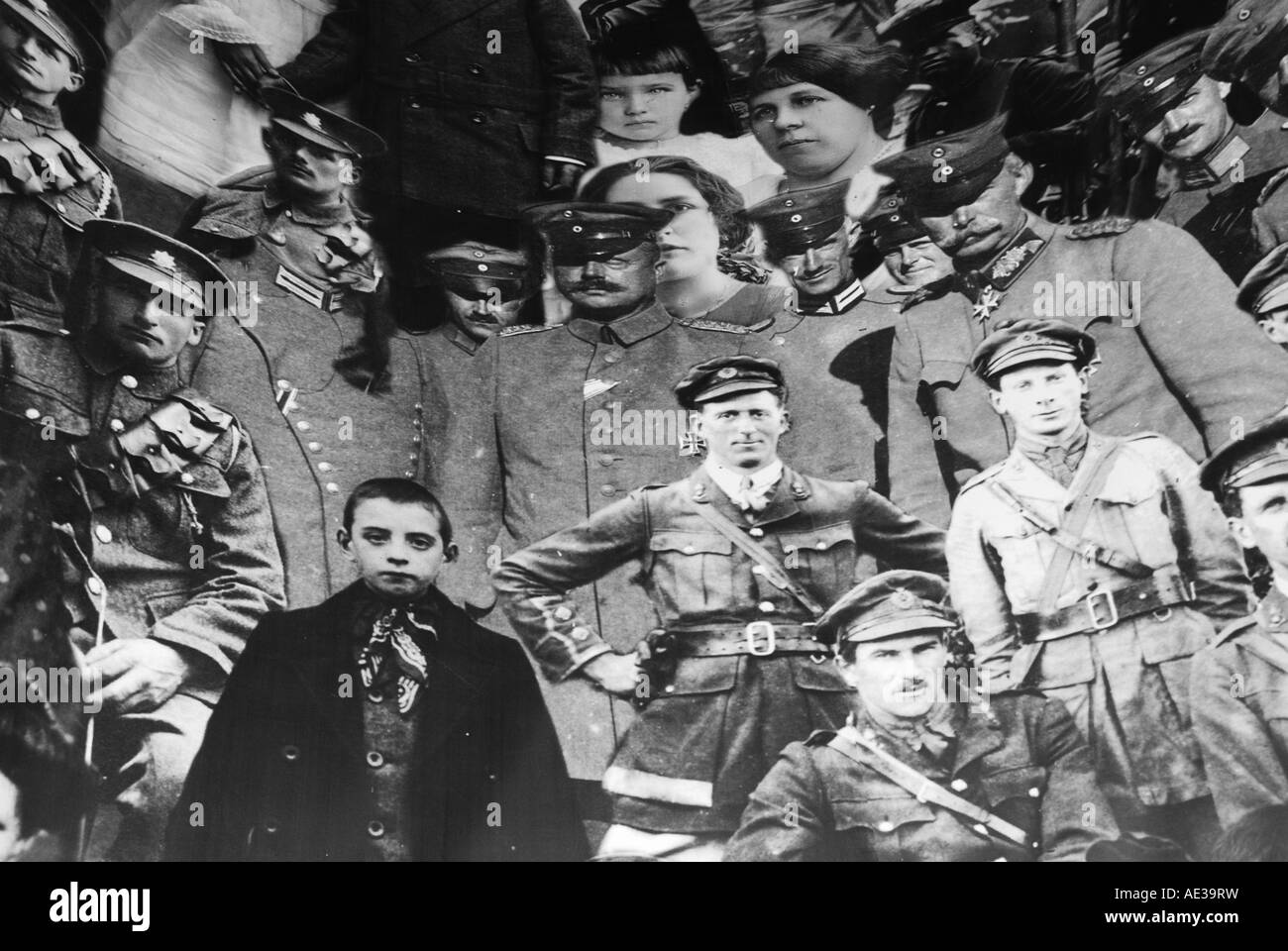 Images of the Great War Stock Photohttps://www.alamy.com/image-license-details/?v=1https://www.alamy.com/stock-photo-images-of-the-great-war-13553964.html
Images of the Great War Stock Photohttps://www.alamy.com/image-license-details/?v=1https://www.alamy.com/stock-photo-images-of-the-great-war-13553964.htmlRMAE39RW–Images of the Great War
 Crossing the International Bridge from Texas to Mexico, the first organised British troops ever. Rare photograph: From a collection compiled by an unknown British serviceman covering the No. 1 Composite Demonstration, AA Battery, tour of the USA, from July 11th 1943. This is one from over one hundred images in the collection which were on average around 4x3 inches. Stock Photohttps://www.alamy.com/image-license-details/?v=1https://www.alamy.com/crossing-the-international-bridge-from-texas-to-mexico-the-first-organised-british-troops-ever-rare-photograph-from-a-collection-compiled-by-an-unknown-british-serviceman-covering-the-no-1-composite-demonstration-aa-battery-tour-of-the-usa-from-july-11th-1943-this-is-one-from-over-one-hundred-images-in-the-collection-which-were-on-average-around-4x3-inches-image566685747.html
Crossing the International Bridge from Texas to Mexico, the first organised British troops ever. Rare photograph: From a collection compiled by an unknown British serviceman covering the No. 1 Composite Demonstration, AA Battery, tour of the USA, from July 11th 1943. This is one from over one hundred images in the collection which were on average around 4x3 inches. Stock Photohttps://www.alamy.com/image-license-details/?v=1https://www.alamy.com/crossing-the-international-bridge-from-texas-to-mexico-the-first-organised-british-troops-ever-rare-photograph-from-a-collection-compiled-by-an-unknown-british-serviceman-covering-the-no-1-composite-demonstration-aa-battery-tour-of-the-usa-from-july-11th-1943-this-is-one-from-over-one-hundred-images-in-the-collection-which-were-on-average-around-4x3-inches-image566685747.htmlRM2RWXNCK–Crossing the International Bridge from Texas to Mexico, the first organised British troops ever. Rare photograph: From a collection compiled by an unknown British serviceman covering the No. 1 Composite Demonstration, AA Battery, tour of the USA, from July 11th 1943. This is one from over one hundred images in the collection which were on average around 4x3 inches.
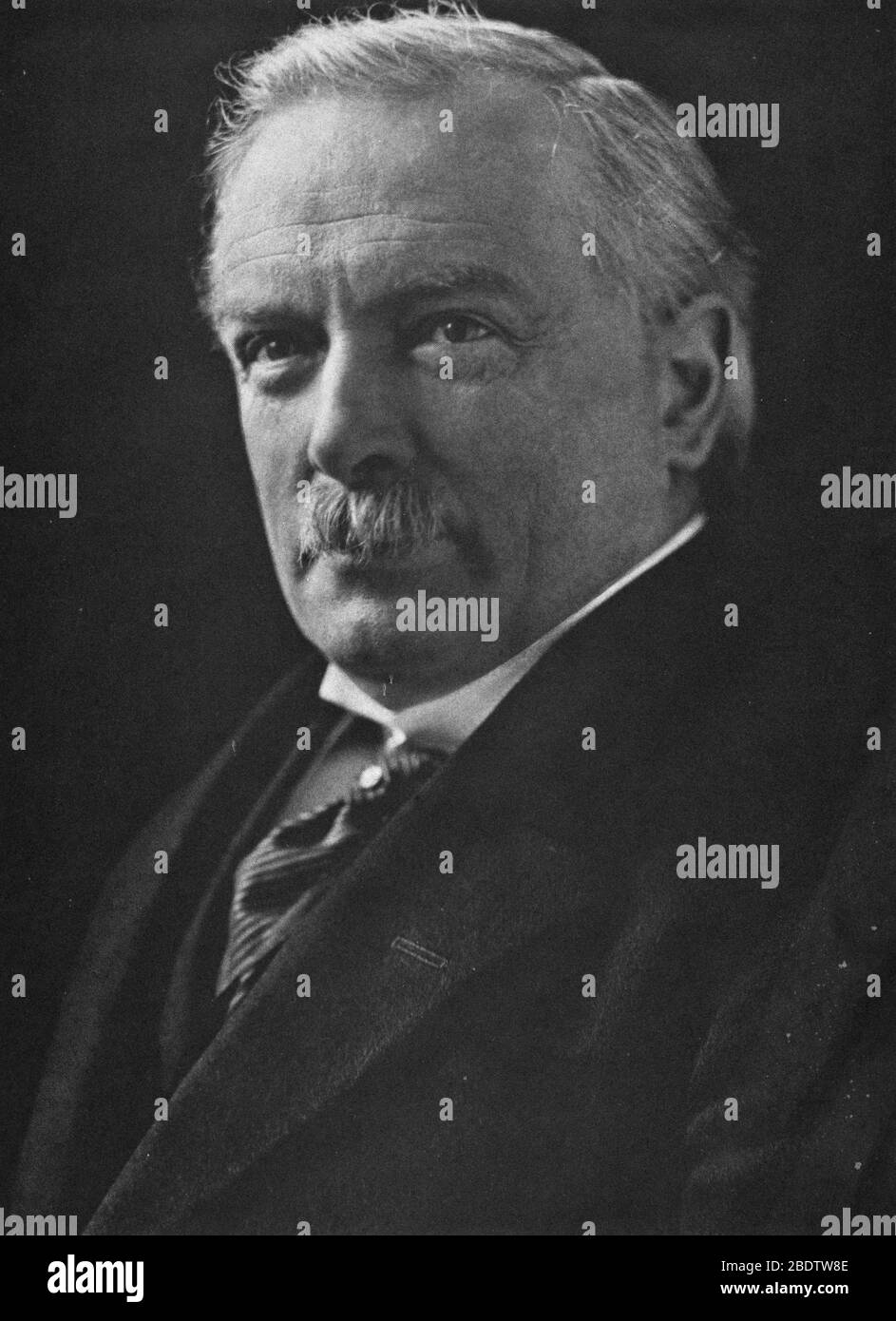 David Lloyd George (1863-1945), British Prime Minister from 1916 to 1922. He was a strong and effective leader during WW I, and he was a major player in the Paris Peace Conference of 1919. Before the war, he had been in the House of Commons, had been a leader of the Liberal Party, and was Chancellor of the Exchequer. His parents were Welsh and he lived his life in Wales when not in London. To see my other WW I-related vintage images, Search: Prestor vintage WW I Stock Photohttps://www.alamy.com/image-license-details/?v=1https://www.alamy.com/david-lloyd-george-1863-1945-british-prime-minister-from-1916-to-1922-he-was-a-strong-and-effective-leader-during-ww-i-and-he-was-a-major-player-in-the-paris-peace-conference-of-1919-before-the-war-he-had-been-in-the-house-of-commons-had-been-a-leader-of-the-liberal-party-and-was-chancellor-of-the-exchequer-his-parents-were-welsh-and-he-lived-his-life-in-wales-when-not-in-london-to-see-my-other-ww-i-related-vintage-images-search-prestor-vintage-ww-i-image352744574.html
David Lloyd George (1863-1945), British Prime Minister from 1916 to 1922. He was a strong and effective leader during WW I, and he was a major player in the Paris Peace Conference of 1919. Before the war, he had been in the House of Commons, had been a leader of the Liberal Party, and was Chancellor of the Exchequer. His parents were Welsh and he lived his life in Wales when not in London. To see my other WW I-related vintage images, Search: Prestor vintage WW I Stock Photohttps://www.alamy.com/image-license-details/?v=1https://www.alamy.com/david-lloyd-george-1863-1945-british-prime-minister-from-1916-to-1922-he-was-a-strong-and-effective-leader-during-ww-i-and-he-was-a-major-player-in-the-paris-peace-conference-of-1919-before-the-war-he-had-been-in-the-house-of-commons-had-been-a-leader-of-the-liberal-party-and-was-chancellor-of-the-exchequer-his-parents-were-welsh-and-he-lived-his-life-in-wales-when-not-in-london-to-see-my-other-ww-i-related-vintage-images-search-prestor-vintage-ww-i-image352744574.htmlRF2BDTW8E–David Lloyd George (1863-1945), British Prime Minister from 1916 to 1922. He was a strong and effective leader during WW I, and he was a major player in the Paris Peace Conference of 1919. Before the war, he had been in the House of Commons, had been a leader of the Liberal Party, and was Chancellor of the Exchequer. His parents were Welsh and he lived his life in Wales when not in London. To see my other WW I-related vintage images, Search: Prestor vintage WW I
!['La Revolution Russe; Les premieres manifestations sur la place Znamenskaia, a Petrograd, devant le monument d'Alexandre III; deja, les drapeaux rouges portent des images et des inscriptions revolutionnaires', 1917. The Russian Revolution: demonstrations on Znamenskaya Square, Petrograd, in front of the statue of Alexander III, red flags with revolutionary slogans. From "L'Album de la Guerre 1914-1919, Volume 2" [L'Illustration, Paris, 1924]. Stock Photo 'La Revolution Russe; Les premieres manifestations sur la place Znamenskaia, a Petrograd, devant le monument d'Alexandre III; deja, les drapeaux rouges portent des images et des inscriptions revolutionnaires', 1917. The Russian Revolution: demonstrations on Znamenskaya Square, Petrograd, in front of the statue of Alexander III, red flags with revolutionary slogans. From "L'Album de la Guerre 1914-1919, Volume 2" [L'Illustration, Paris, 1924]. Stock Photo](https://c8.alamy.com/comp/2RRJFGE/la-revolution-russe-les-premieres-manifestations-sur-la-place-znamenskaia-a-petrograd-devant-le-monument-dalexandre-iii-deja-les-drapeaux-rouges-portent-des-images-et-des-inscriptions-revolutionnaires-1917-the-russian-revolution-demonstrations-on-znamenskaya-square-petrograd-in-front-of-the-statue-of-alexander-iii-red-flags-with-revolutionary-slogans-from-quotlalbum-de-la-guerre-1914-1919-volume-2quot-lillustration-paris-1924-2RRJFGE.jpg) 'La Revolution Russe; Les premieres manifestations sur la place Znamenskaia, a Petrograd, devant le monument d'Alexandre III; deja, les drapeaux rouges portent des images et des inscriptions revolutionnaires', 1917. The Russian Revolution: demonstrations on Znamenskaya Square, Petrograd, in front of the statue of Alexander III, red flags with revolutionary slogans. From "L'Album de la Guerre 1914-1919, Volume 2" [L'Illustration, Paris, 1924]. Stock Photohttps://www.alamy.com/image-license-details/?v=1https://www.alamy.com/la-revolution-russe-les-premieres-manifestations-sur-la-place-znamenskaia-a-petrograd-devant-le-monument-dalexandre-iii-deja-les-drapeaux-rouges-portent-des-images-et-des-inscriptions-revolutionnaires-1917-the-russian-revolution-demonstrations-on-znamenskaya-square-petrograd-in-front-of-the-statue-of-alexander-iii-red-flags-with-revolutionary-slogans-from-quotlalbum-de-la-guerre-1914-1919-volume-2quot-lillustration-paris-1924-image565276222.html
'La Revolution Russe; Les premieres manifestations sur la place Znamenskaia, a Petrograd, devant le monument d'Alexandre III; deja, les drapeaux rouges portent des images et des inscriptions revolutionnaires', 1917. The Russian Revolution: demonstrations on Znamenskaya Square, Petrograd, in front of the statue of Alexander III, red flags with revolutionary slogans. From "L'Album de la Guerre 1914-1919, Volume 2" [L'Illustration, Paris, 1924]. Stock Photohttps://www.alamy.com/image-license-details/?v=1https://www.alamy.com/la-revolution-russe-les-premieres-manifestations-sur-la-place-znamenskaia-a-petrograd-devant-le-monument-dalexandre-iii-deja-les-drapeaux-rouges-portent-des-images-et-des-inscriptions-revolutionnaires-1917-the-russian-revolution-demonstrations-on-znamenskaya-square-petrograd-in-front-of-the-statue-of-alexander-iii-red-flags-with-revolutionary-slogans-from-quotlalbum-de-la-guerre-1914-1919-volume-2quot-lillustration-paris-1924-image565276222.htmlRM2RRJFGE–'La Revolution Russe; Les premieres manifestations sur la place Znamenskaia, a Petrograd, devant le monument d'Alexandre III; deja, les drapeaux rouges portent des images et des inscriptions revolutionnaires', 1917. The Russian Revolution: demonstrations on Znamenskaya Square, Petrograd, in front of the statue of Alexander III, red flags with revolutionary slogans. From "L'Album de la Guerre 1914-1919, Volume 2" [L'Illustration, Paris, 1924].
 Horace Nicholls - Munitions Production on the Home Front - 1914-1918 Stock Photohttps://www.alamy.com/image-license-details/?v=1https://www.alamy.com/horace-nicholls-munitions-production-on-the-home-front-1914-1918-image559550684.html
Horace Nicholls - Munitions Production on the Home Front - 1914-1918 Stock Photohttps://www.alamy.com/image-license-details/?v=1https://www.alamy.com/horace-nicholls-munitions-production-on-the-home-front-1914-1918-image559550684.htmlRF2RE9MH0–Horace Nicholls - Munitions Production on the Home Front - 1914-1918
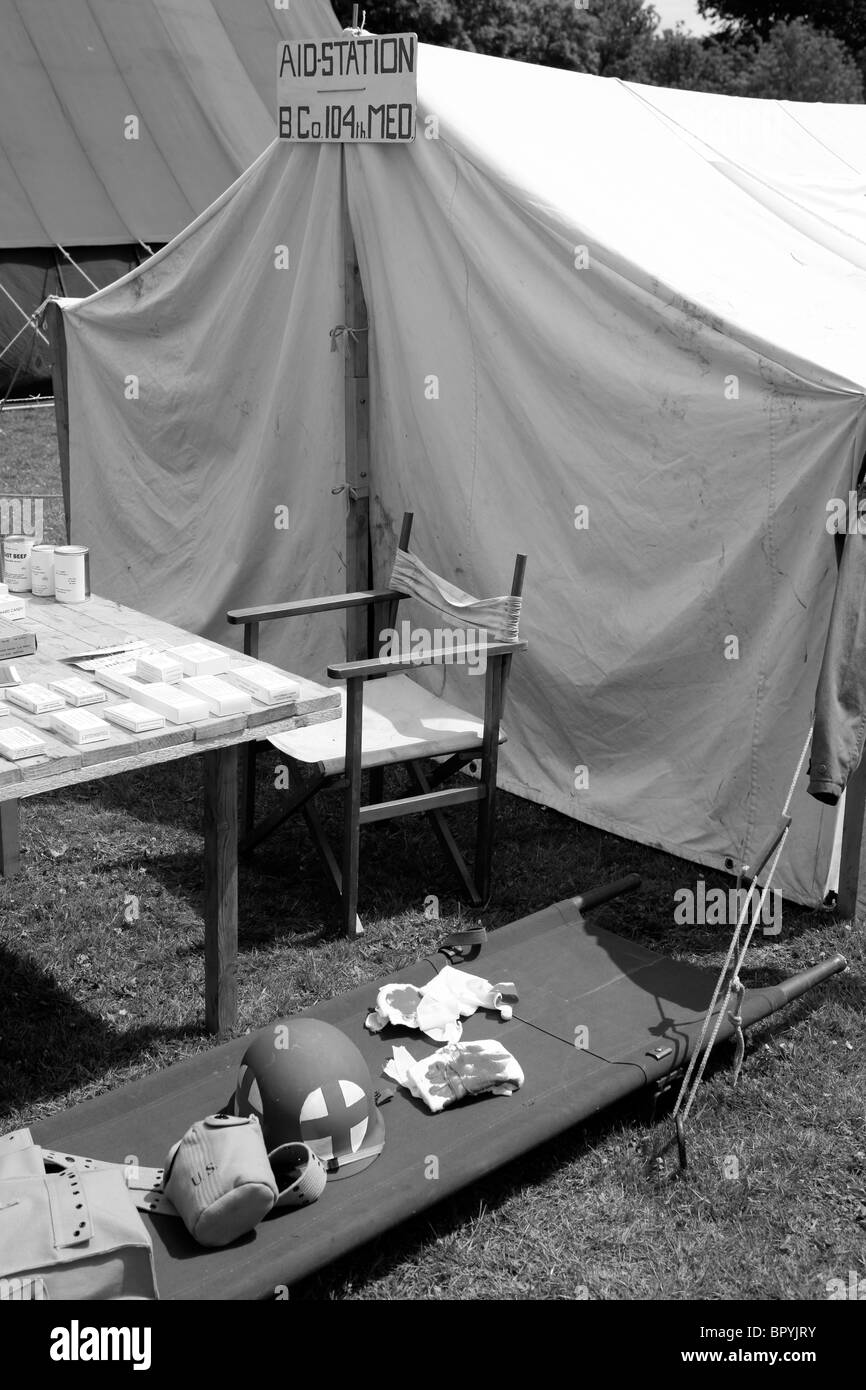 First Aid Station of E Company 104th Med Division Stock Photohttps://www.alamy.com/image-license-details/?v=1https://www.alamy.com/stock-photo-first-aid-station-of-e-company-104th-med-division-31340287.html
First Aid Station of E Company 104th Med Division Stock Photohttps://www.alamy.com/image-license-details/?v=1https://www.alamy.com/stock-photo-first-aid-station-of-e-company-104th-med-division-31340287.htmlRFBPYJRY–First Aid Station of E Company 104th Med Division
 World War II Photo - Gen. Dwight D. Eisenhower gives the order of the day, Full victory, nothing less to paratroopers somewhere in England just before they board their planes to take part in the first assault in the invasion of the continent of Europe Stock Photohttps://www.alamy.com/image-license-details/?v=1https://www.alamy.com/world-war-ii-photo-gen-dwight-d-eisenhower-gives-the-order-of-the-day-full-victory-nothing-less-to-paratroopers-somewhere-in-england-just-before-they-board-their-planes-to-take-part-in-the-first-assault-in-the-invasion-of-the-continent-of-europe-image213651374.html
World War II Photo - Gen. Dwight D. Eisenhower gives the order of the day, Full victory, nothing less to paratroopers somewhere in England just before they board their planes to take part in the first assault in the invasion of the continent of Europe Stock Photohttps://www.alamy.com/image-license-details/?v=1https://www.alamy.com/world-war-ii-photo-gen-dwight-d-eisenhower-gives-the-order-of-the-day-full-victory-nothing-less-to-paratroopers-somewhere-in-england-just-before-they-board-their-planes-to-take-part-in-the-first-assault-in-the-invasion-of-the-continent-of-europe-image213651374.htmlRMPBGJE6–World War II Photo - Gen. Dwight D. Eisenhower gives the order of the day, Full victory, nothing less to paratroopers somewhere in England just before they board their planes to take part in the first assault in the invasion of the continent of Europe
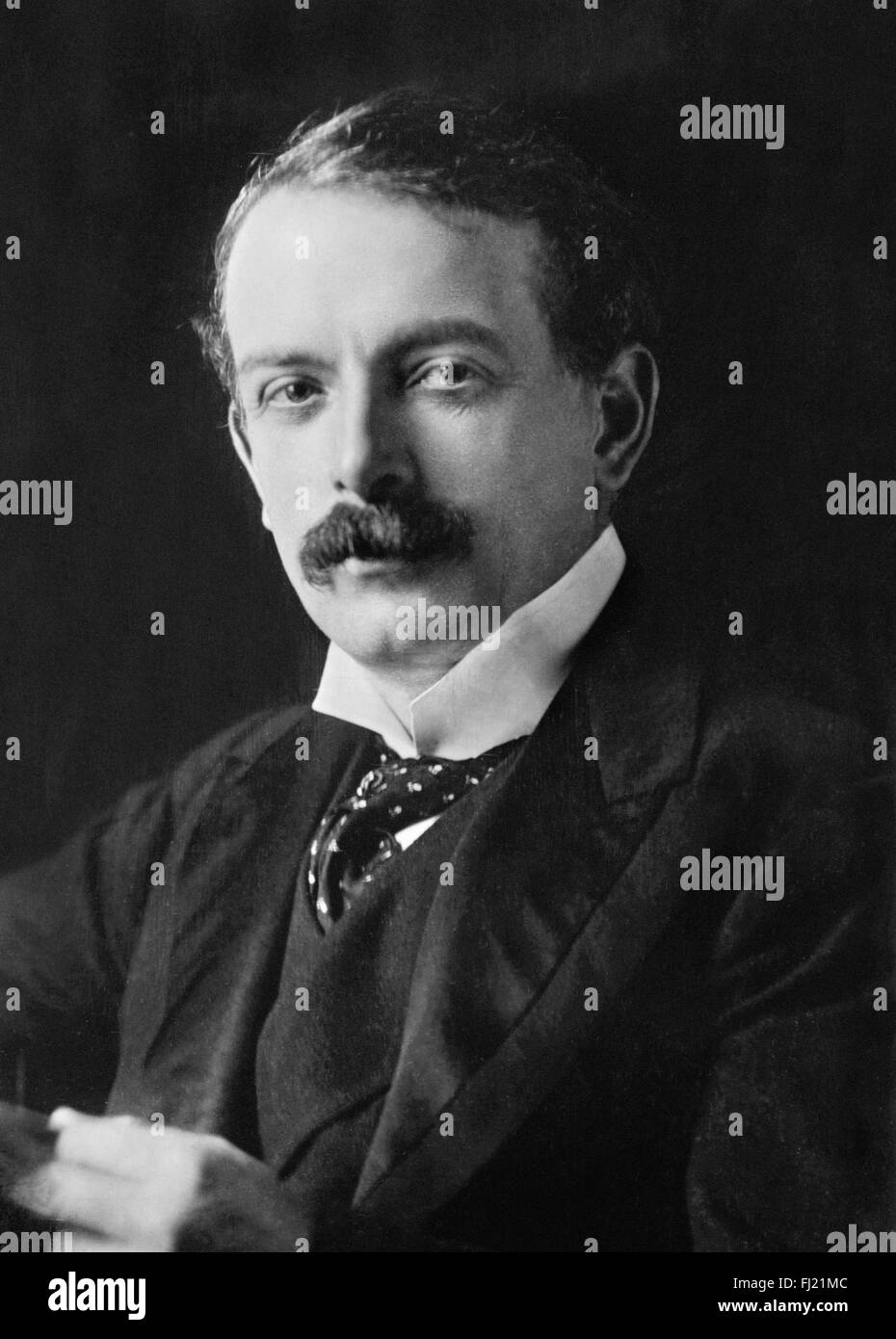 David Lloyd George, liberal politician who was British Prime Minister during and immediately after the First World War. Date of photograph unknown, but shows Lloyd George as a younger man Stock Photohttps://www.alamy.com/image-license-details/?v=1https://www.alamy.com/stock-photo-david-lloyd-george-liberal-politician-who-was-british-prime-minister-97160908.html
David Lloyd George, liberal politician who was British Prime Minister during and immediately after the First World War. Date of photograph unknown, but shows Lloyd George as a younger man Stock Photohttps://www.alamy.com/image-license-details/?v=1https://www.alamy.com/stock-photo-david-lloyd-george-liberal-politician-who-was-british-prime-minister-97160908.htmlRMFJ21MC–David Lloyd George, liberal politician who was British Prime Minister during and immediately after the First World War. Date of photograph unknown, but shows Lloyd George as a younger man
 Verdun 1916, 1916. Stock Photohttps://www.alamy.com/image-license-details/?v=1https://www.alamy.com/verdun-1916-1916-image186202730.html
Verdun 1916, 1916. Stock Photohttps://www.alamy.com/image-license-details/?v=1https://www.alamy.com/verdun-1916-1916-image186202730.htmlRMMPX7DE–Verdun 1916, 1916.
 WW1 Belgian refugees leaving Ostend for England, vintage photograph from 1914 Stock Photohttps://www.alamy.com/image-license-details/?v=1https://www.alamy.com/ww1-belgian-refugees-leaving-ostend-for-england-vintage-photograph-from-1914-image330937813.html
WW1 Belgian refugees leaving Ostend for England, vintage photograph from 1914 Stock Photohttps://www.alamy.com/image-license-details/?v=1https://www.alamy.com/ww1-belgian-refugees-leaving-ostend-for-england-vintage-photograph-from-1914-image330937813.htmlRM2A6BEFH–WW1 Belgian refugees leaving Ostend for England, vintage photograph from 1914
 Italy. The image is of the famous Three Towers, known in German as Drei Zinnen but more poetically named in Italian as the Tre Cime di Laverado located in the Sexten-Sesto eastern region of the Italian Dolomites. During the First World War, known as the White War the peaks provided a natural barrier between the Italians and the warring Austrians, the front line running through the peaks. Stock Photohttps://www.alamy.com/image-license-details/?v=1https://www.alamy.com/italy-the-image-is-of-the-famous-three-towers-known-in-german-as-drei-zinnen-but-more-poetically-named-in-italian-as-the-tre-cime-di-laverado-located-in-the-sexten-sesto-eastern-region-of-the-italian-dolomites-during-the-first-world-war-known-as-the-white-war-the-peaks-provided-a-natural-barrier-between-the-italians-and-the-warring-austrians-the-front-line-running-through-the-peaks-image427815751.html
Italy. The image is of the famous Three Towers, known in German as Drei Zinnen but more poetically named in Italian as the Tre Cime di Laverado located in the Sexten-Sesto eastern region of the Italian Dolomites. During the First World War, known as the White War the peaks provided a natural barrier between the Italians and the warring Austrians, the front line running through the peaks. Stock Photohttps://www.alamy.com/image-license-details/?v=1https://www.alamy.com/italy-the-image-is-of-the-famous-three-towers-known-in-german-as-drei-zinnen-but-more-poetically-named-in-italian-as-the-tre-cime-di-laverado-located-in-the-sexten-sesto-eastern-region-of-the-italian-dolomites-during-the-first-world-war-known-as-the-white-war-the-peaks-provided-a-natural-barrier-between-the-italians-and-the-warring-austrians-the-front-line-running-through-the-peaks-image427815751.htmlRM2FT0K9Y–Italy. The image is of the famous Three Towers, known in German as Drei Zinnen but more poetically named in Italian as the Tre Cime di Laverado located in the Sexten-Sesto eastern region of the Italian Dolomites. During the First World War, known as the White War the peaks provided a natural barrier between the Italians and the warring Austrians, the front line running through the peaks.
 Frank Luke, Frank Luke Jr. (1897 – 1918) American fighter ace during World War One Stock Photohttps://www.alamy.com/image-license-details/?v=1https://www.alamy.com/frank-luke-frank-luke-jr-1897-1918-american-fighter-ace-during-world-war-one-image371811860.html
Frank Luke, Frank Luke Jr. (1897 – 1918) American fighter ace during World War One Stock Photohttps://www.alamy.com/image-license-details/?v=1https://www.alamy.com/frank-luke-frank-luke-jr-1897-1918-american-fighter-ace-during-world-war-one-image371811860.htmlRM2CGWDR0–Frank Luke, Frank Luke Jr. (1897 – 1918) American fighter ace during World War One
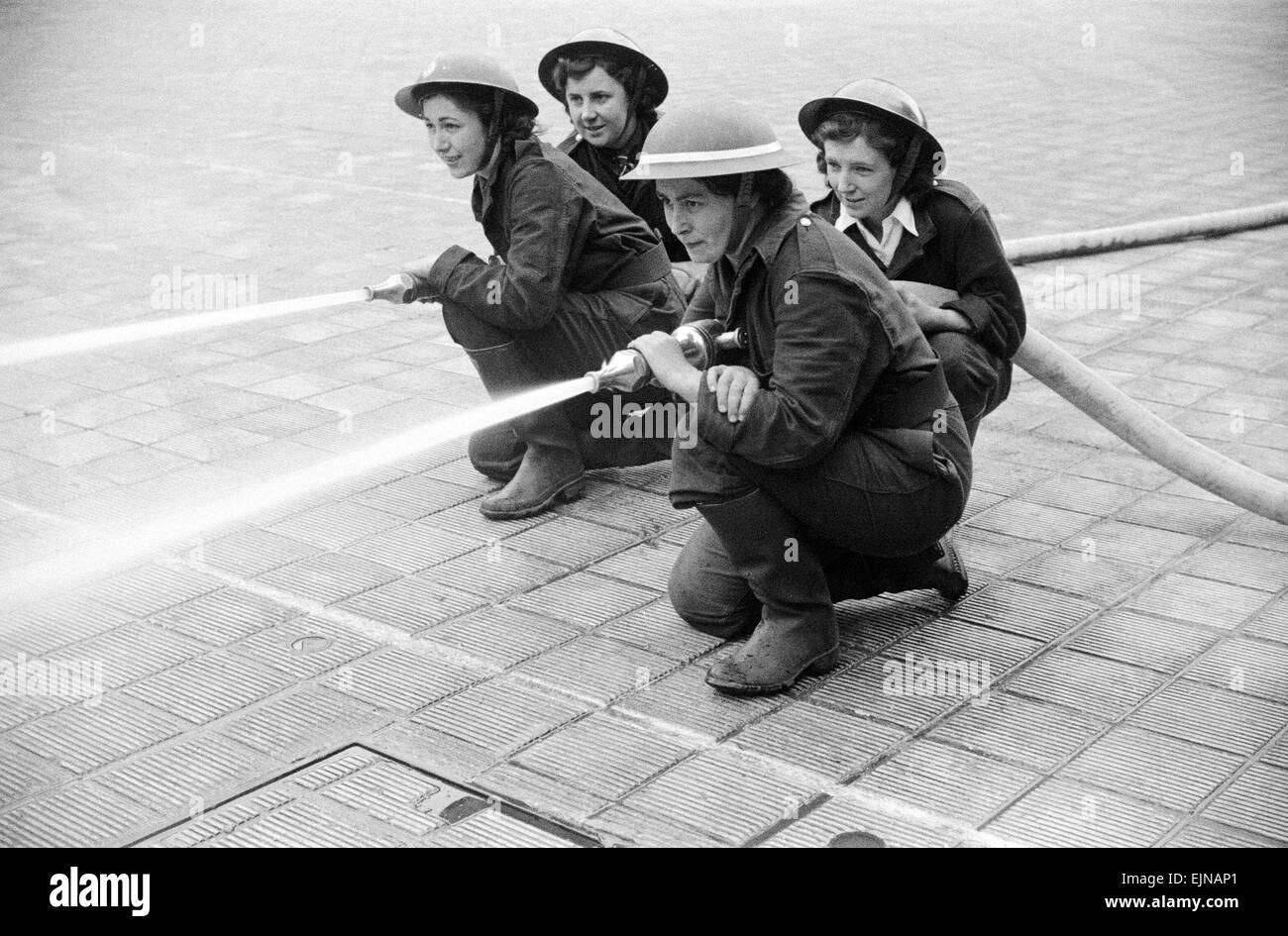 W.N.F.F - first pictures of Women's Fire Service Pump Crews - competition with the BBC Womens Crew at HQ London Fire Force, 17 June 1942 Stock Photohttps://www.alamy.com/image-license-details/?v=1https://www.alamy.com/stock-photo-wnff-first-pictures-of-womens-fire-service-pump-crews-competition-80374729.html
W.N.F.F - first pictures of Women's Fire Service Pump Crews - competition with the BBC Womens Crew at HQ London Fire Force, 17 June 1942 Stock Photohttps://www.alamy.com/image-license-details/?v=1https://www.alamy.com/stock-photo-wnff-first-pictures-of-womens-fire-service-pump-crews-competition-80374729.htmlRMEJNAP1–W.N.F.F - first pictures of Women's Fire Service Pump Crews - competition with the BBC Womens Crew at HQ London Fire Force, 17 June 1942
 Isernia, Molise. Monument to the fallen of the First World War Stock Photohttps://www.alamy.com/image-license-details/?v=1https://www.alamy.com/isernia-molise-monument-to-the-fallen-of-the-first-world-war-image468677954.html
Isernia, Molise. Monument to the fallen of the First World War Stock Photohttps://www.alamy.com/image-license-details/?v=1https://www.alamy.com/isernia-molise-monument-to-the-fallen-of-the-first-world-war-image468677954.htmlRF2J6E3EA–Isernia, Molise. Monument to the fallen of the First World War
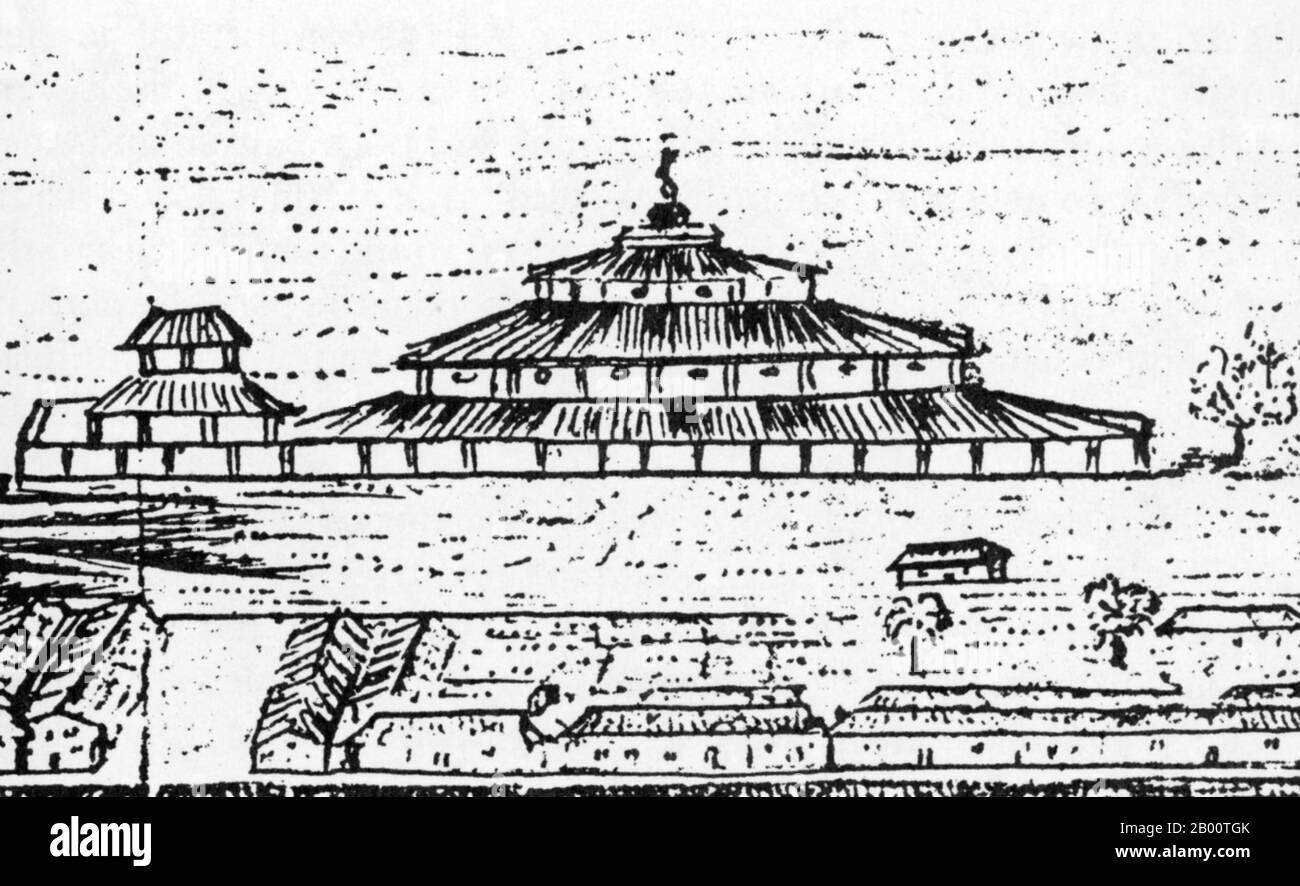 Indonesia: A sketch, c.1650, of the Great Mosque of Aceh in northern Sumatra. Banda Aceh’s Grand Mosque was built around the 12th century, but was burnt down during the Aceh War (1873-1904). It was rebuilt by the Dutch as a gesture of reconciliation in 1880 before hostilities broke out once more. The Dutch East India Company, or VOC, was a chartered company granted a monopoly by the Dutch government to carry out colonial activities in Asia. It was the first multinational corporation in the world and the first company to issue stock. It was also arguably the world's first megacorporation. Stock Photohttps://www.alamy.com/image-license-details/?v=1https://www.alamy.com/indonesia-a-sketch-c1650-of-the-great-mosque-of-aceh-in-northern-sumatra-banda-acehs-grand-mosque-was-built-around-the-12th-century-but-was-burnt-down-during-the-aceh-war-1873-1904-it-was-rebuilt-by-the-dutch-as-a-gesture-of-reconciliation-in-1880-before-hostilities-broke-out-once-more-the-dutch-east-india-company-or-voc-was-a-chartered-company-granted-a-monopoly-by-the-dutch-government-to-carry-out-colonial-activities-in-asia-it-was-the-first-multinational-corporation-in-the-world-and-the-first-company-to-issue-stock-it-was-also-arguably-the-worlds-first-megacorporation-image344226643.html
Indonesia: A sketch, c.1650, of the Great Mosque of Aceh in northern Sumatra. Banda Aceh’s Grand Mosque was built around the 12th century, but was burnt down during the Aceh War (1873-1904). It was rebuilt by the Dutch as a gesture of reconciliation in 1880 before hostilities broke out once more. The Dutch East India Company, or VOC, was a chartered company granted a monopoly by the Dutch government to carry out colonial activities in Asia. It was the first multinational corporation in the world and the first company to issue stock. It was also arguably the world's first megacorporation. Stock Photohttps://www.alamy.com/image-license-details/?v=1https://www.alamy.com/indonesia-a-sketch-c1650-of-the-great-mosque-of-aceh-in-northern-sumatra-banda-acehs-grand-mosque-was-built-around-the-12th-century-but-was-burnt-down-during-the-aceh-war-1873-1904-it-was-rebuilt-by-the-dutch-as-a-gesture-of-reconciliation-in-1880-before-hostilities-broke-out-once-more-the-dutch-east-india-company-or-voc-was-a-chartered-company-granted-a-monopoly-by-the-dutch-government-to-carry-out-colonial-activities-in-asia-it-was-the-first-multinational-corporation-in-the-world-and-the-first-company-to-issue-stock-it-was-also-arguably-the-worlds-first-megacorporation-image344226643.htmlRM2B00TGK–Indonesia: A sketch, c.1650, of the Great Mosque of Aceh in northern Sumatra. Banda Aceh’s Grand Mosque was built around the 12th century, but was burnt down during the Aceh War (1873-1904). It was rebuilt by the Dutch as a gesture of reconciliation in 1880 before hostilities broke out once more. The Dutch East India Company, or VOC, was a chartered company granted a monopoly by the Dutch government to carry out colonial activities in Asia. It was the first multinational corporation in the world and the first company to issue stock. It was also arguably the world's first megacorporation.
 Contemporary WW1 illustration of British troops carrying out a moonlight assault against German lines on the Somme in 1916. Stock Photohttps://www.alamy.com/image-license-details/?v=1https://www.alamy.com/stock-photo-contemporary-ww1-illustration-of-british-troops-carrying-out-a-moonlight-27104671.html
Contemporary WW1 illustration of British troops carrying out a moonlight assault against German lines on the Somme in 1916. Stock Photohttps://www.alamy.com/image-license-details/?v=1https://www.alamy.com/stock-photo-contemporary-ww1-illustration-of-british-troops-carrying-out-a-moonlight-27104671.htmlRMBG2M7Y–Contemporary WW1 illustration of British troops carrying out a moonlight assault against German lines on the Somme in 1916.
 American Soldiers at American Military Hospital No. 5 demonstrating the use of Bandages that were received in Front Parcels made in Paris in American Red Cross Workrooms, Auteuil, France, Lewis Wickes Hine, American National Red Cross Photograph Collection, August 1918 Stock Photohttps://www.alamy.com/image-license-details/?v=1https://www.alamy.com/american-soldiers-at-american-military-hospital-no-5-demonstrating-the-use-of-bandages-that-were-received-in-front-parcels-made-in-paris-in-american-red-cross-workrooms-auteuil-france-lewis-wickes-hine-american-national-red-cross-photograph-collection-august-1918-image353481418.html
American Soldiers at American Military Hospital No. 5 demonstrating the use of Bandages that were received in Front Parcels made in Paris in American Red Cross Workrooms, Auteuil, France, Lewis Wickes Hine, American National Red Cross Photograph Collection, August 1918 Stock Photohttps://www.alamy.com/image-license-details/?v=1https://www.alamy.com/american-soldiers-at-american-military-hospital-no-5-demonstrating-the-use-of-bandages-that-were-received-in-front-parcels-made-in-paris-in-american-red-cross-workrooms-auteuil-france-lewis-wickes-hine-american-national-red-cross-photograph-collection-august-1918-image353481418.htmlRM2BF2D4A–American Soldiers at American Military Hospital No. 5 demonstrating the use of Bandages that were received in Front Parcels made in Paris in American Red Cross Workrooms, Auteuil, France, Lewis Wickes Hine, American National Red Cross Photograph Collection, August 1918
 WWI British infantry soldiers and camouflaged tanks during the World War One Battle of Polygon Wood near Ypres / Ieper, West Flanders, Belgium in 1917 Stock Photohttps://www.alamy.com/image-license-details/?v=1https://www.alamy.com/wwi-british-infantry-soldiers-and-camouflaged-tanks-during-the-world-war-one-battle-of-polygon-wood-near-ypres-ieper-west-flanders-belgium-in-1917-image620517530.html
WWI British infantry soldiers and camouflaged tanks during the World War One Battle of Polygon Wood near Ypres / Ieper, West Flanders, Belgium in 1917 Stock Photohttps://www.alamy.com/image-license-details/?v=1https://www.alamy.com/wwi-british-infantry-soldiers-and-camouflaged-tanks-during-the-world-war-one-battle-of-polygon-wood-near-ypres-ieper-west-flanders-belgium-in-1917-image620517530.htmlRM2Y1F0CA–WWI British infantry soldiers and camouflaged tanks during the World War One Battle of Polygon Wood near Ypres / Ieper, West Flanders, Belgium in 1917
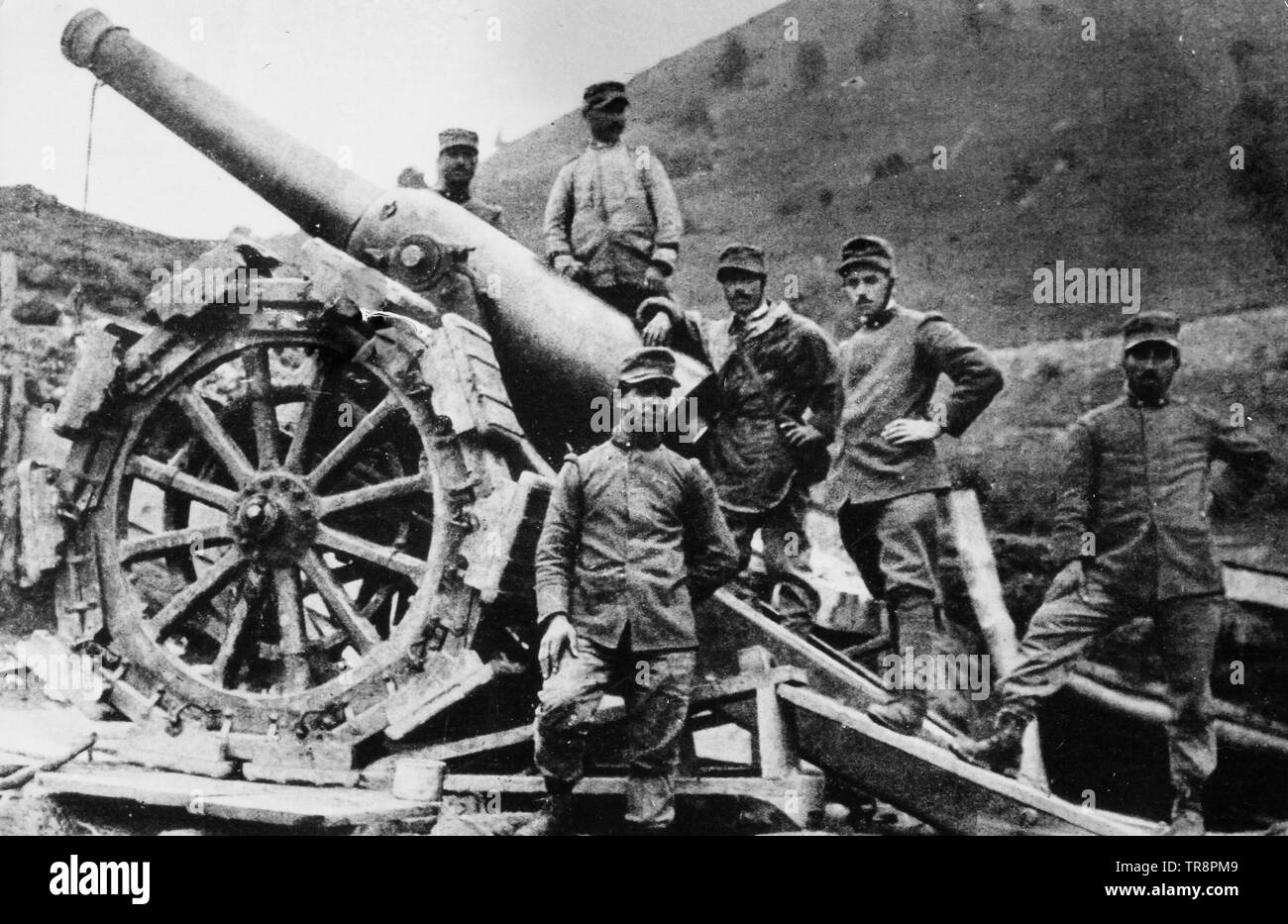 149G cannon, royal Italian army, first world war Stock Photohttps://www.alamy.com/image-license-details/?v=1https://www.alamy.com/149g-cannon-royal-italian-army-first-world-war-image255275673.html
149G cannon, royal Italian army, first world war Stock Photohttps://www.alamy.com/image-license-details/?v=1https://www.alamy.com/149g-cannon-royal-italian-army-first-world-war-image255275673.htmlRMTR8PM9–149G cannon, royal Italian army, first world war
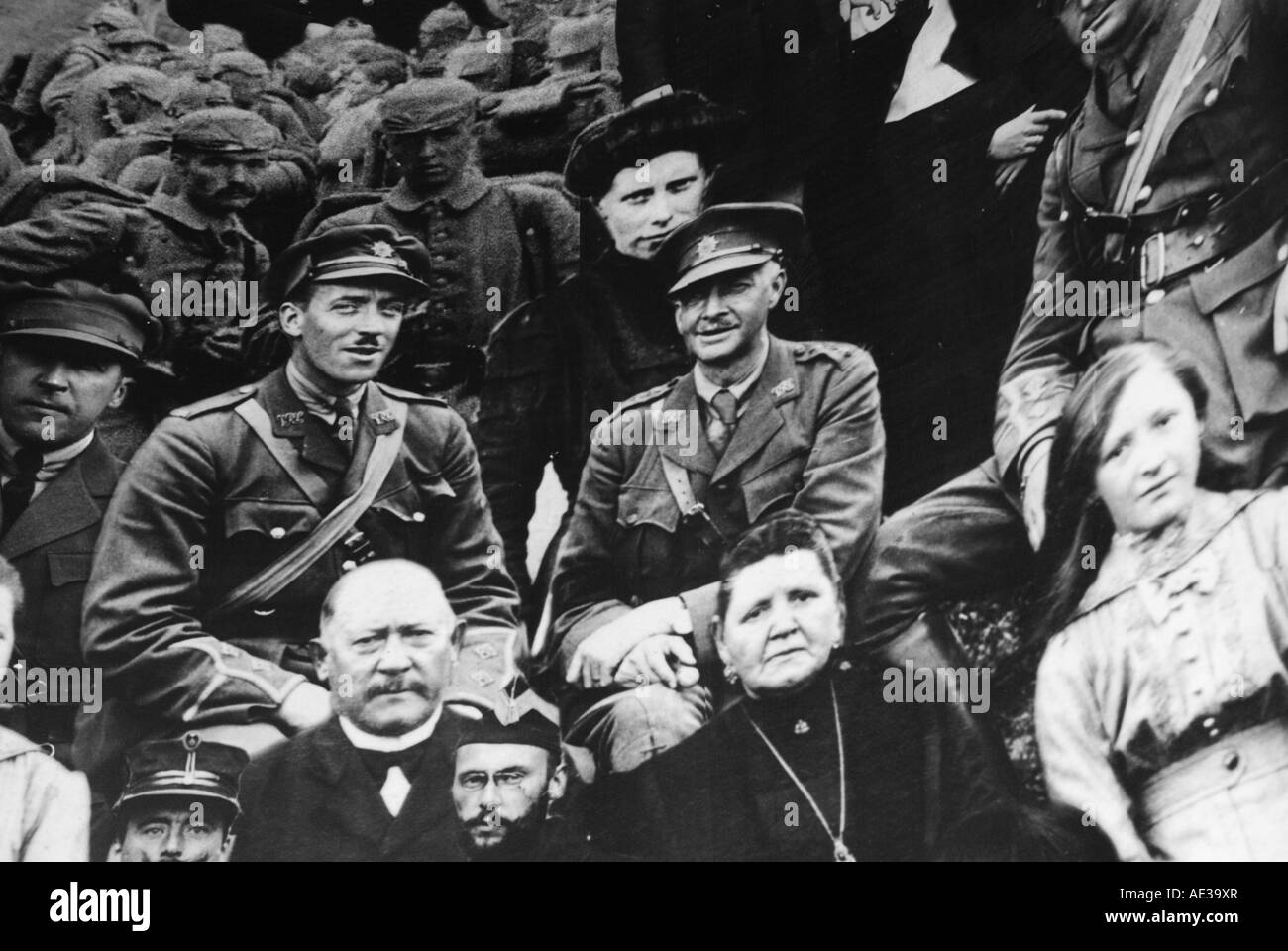 Images of the Great War Stock Photohttps://www.alamy.com/image-license-details/?v=1https://www.alamy.com/stock-photo-images-of-the-great-war-13553998.html
Images of the Great War Stock Photohttps://www.alamy.com/image-license-details/?v=1https://www.alamy.com/stock-photo-images-of-the-great-war-13553998.htmlRMAE39XR–Images of the Great War
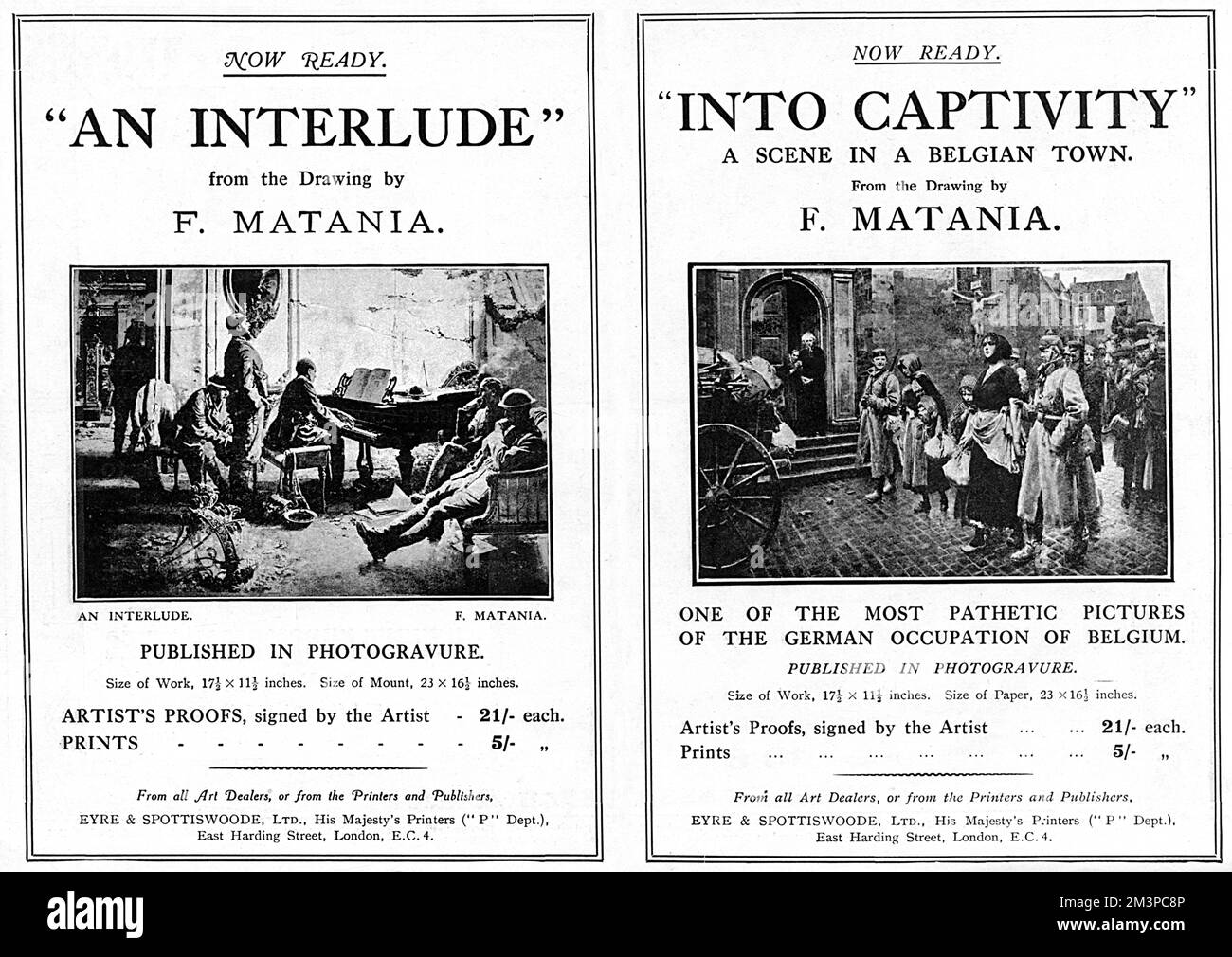 Adverts for Matania WW1 prints in The Sphere Stock Photohttps://www.alamy.com/image-license-details/?v=1https://www.alamy.com/adverts-for-matania-ww1-prints-in-the-sphere-image501437238.html
Adverts for Matania WW1 prints in The Sphere Stock Photohttps://www.alamy.com/image-license-details/?v=1https://www.alamy.com/adverts-for-matania-ww1-prints-in-the-sphere-image501437238.htmlRM2M3PC8P–Adverts for Matania WW1 prints in The Sphere
 A wounded US Marines officer receiving blood plasma while lying on a stretcher in a first aid station trench near Bouganville's Empress Augustus Bay beach, November 1943. A towel was placed on the patient's face to keep the flies off. American forces had recently taken the island from the Japanese. This slit trench was dug as minimal protection against constant Japanese aircraft strafing attacks. To see my other WW II-related images, Search: Prestor vintage WW II Stock Photohttps://www.alamy.com/image-license-details/?v=1https://www.alamy.com/a-wounded-us-marines-officer-receiving-blood-plasma-while-lying-on-a-stretcher-in-a-first-aid-station-trench-near-bouganvilles-empress-augustus-bay-beach-november-1943-a-towel-was-placed-on-the-patients-face-to-keep-the-flies-off-american-forces-had-recently-taken-the-island-from-the-japanese-this-slit-trench-was-dug-as-minimal-protection-against-constant-japanese-aircraft-strafing-attacks-to-see-my-other-ww-ii-related-images-search-prestor-vintage-ww-ii-image354548931.html
A wounded US Marines officer receiving blood plasma while lying on a stretcher in a first aid station trench near Bouganville's Empress Augustus Bay beach, November 1943. A towel was placed on the patient's face to keep the flies off. American forces had recently taken the island from the Japanese. This slit trench was dug as minimal protection against constant Japanese aircraft strafing attacks. To see my other WW II-related images, Search: Prestor vintage WW II Stock Photohttps://www.alamy.com/image-license-details/?v=1https://www.alamy.com/a-wounded-us-marines-officer-receiving-blood-plasma-while-lying-on-a-stretcher-in-a-first-aid-station-trench-near-bouganvilles-empress-augustus-bay-beach-november-1943-a-towel-was-placed-on-the-patients-face-to-keep-the-flies-off-american-forces-had-recently-taken-the-island-from-the-japanese-this-slit-trench-was-dug-as-minimal-protection-against-constant-japanese-aircraft-strafing-attacks-to-see-my-other-ww-ii-related-images-search-prestor-vintage-ww-ii-image354548931.htmlRF2BGR2NR–A wounded US Marines officer receiving blood plasma while lying on a stretcher in a first aid station trench near Bouganville's Empress Augustus Bay beach, November 1943. A towel was placed on the patient's face to keep the flies off. American forces had recently taken the island from the Japanese. This slit trench was dug as minimal protection against constant Japanese aircraft strafing attacks. To see my other WW II-related images, Search: Prestor vintage WW II
 . British forestry, its present position and outlook after the war. World War, 1914-1918; Forests and forestry. Newly Felled Area as Left Uxcleaned by Timber Contractor. The area will have to be first cleaned by the forester before planting up. I'ecblesshire, February 1913. V. A. Eraser, photo.. Young Plantations on the Haystown Estate, Peeblesshire. A wind-swept ridge in foreground which has proved difficult to plant up. SI. Please note that these images are extracted from scanned page images that may have been digitally enhanced for readability - coloration and appearance of these illustrat Stock Photohttps://www.alamy.com/image-license-details/?v=1https://www.alamy.com/british-forestry-its-present-position-and-outlook-after-the-war-world-war-1914-1918-forests-and-forestry-newly-felled-area-as-left-uxcleaned-by-timber-contractor-the-area-will-have-to-be-first-cleaned-by-the-forester-before-planting-up-iecblesshire-february-1913-v-a-eraser-photo-young-plantations-on-the-haystown-estate-peeblesshire-a-wind-swept-ridge-in-foreground-which-has-proved-difficult-to-plant-up-si-please-note-that-these-images-are-extracted-from-scanned-page-images-that-may-have-been-digitally-enhanced-for-readability-coloration-and-appearance-of-these-illustrat-image232232649.html
. British forestry, its present position and outlook after the war. World War, 1914-1918; Forests and forestry. Newly Felled Area as Left Uxcleaned by Timber Contractor. The area will have to be first cleaned by the forester before planting up. I'ecblesshire, February 1913. V. A. Eraser, photo.. Young Plantations on the Haystown Estate, Peeblesshire. A wind-swept ridge in foreground which has proved difficult to plant up. SI. Please note that these images are extracted from scanned page images that may have been digitally enhanced for readability - coloration and appearance of these illustrat Stock Photohttps://www.alamy.com/image-license-details/?v=1https://www.alamy.com/british-forestry-its-present-position-and-outlook-after-the-war-world-war-1914-1918-forests-and-forestry-newly-felled-area-as-left-uxcleaned-by-timber-contractor-the-area-will-have-to-be-first-cleaned-by-the-forester-before-planting-up-iecblesshire-february-1913-v-a-eraser-photo-young-plantations-on-the-haystown-estate-peeblesshire-a-wind-swept-ridge-in-foreground-which-has-proved-difficult-to-plant-up-si-please-note-that-these-images-are-extracted-from-scanned-page-images-that-may-have-been-digitally-enhanced-for-readability-coloration-and-appearance-of-these-illustrat-image232232649.htmlRMRDR335–. British forestry, its present position and outlook after the war. World War, 1914-1918; Forests and forestry. Newly Felled Area as Left Uxcleaned by Timber Contractor. The area will have to be first cleaned by the forester before planting up. I'ecblesshire, February 1913. V. A. Eraser, photo.. Young Plantations on the Haystown Estate, Peeblesshire. A wind-swept ridge in foreground which has proved difficult to plant up. SI. Please note that these images are extracted from scanned page images that may have been digitally enhanced for readability - coloration and appearance of these illustrat
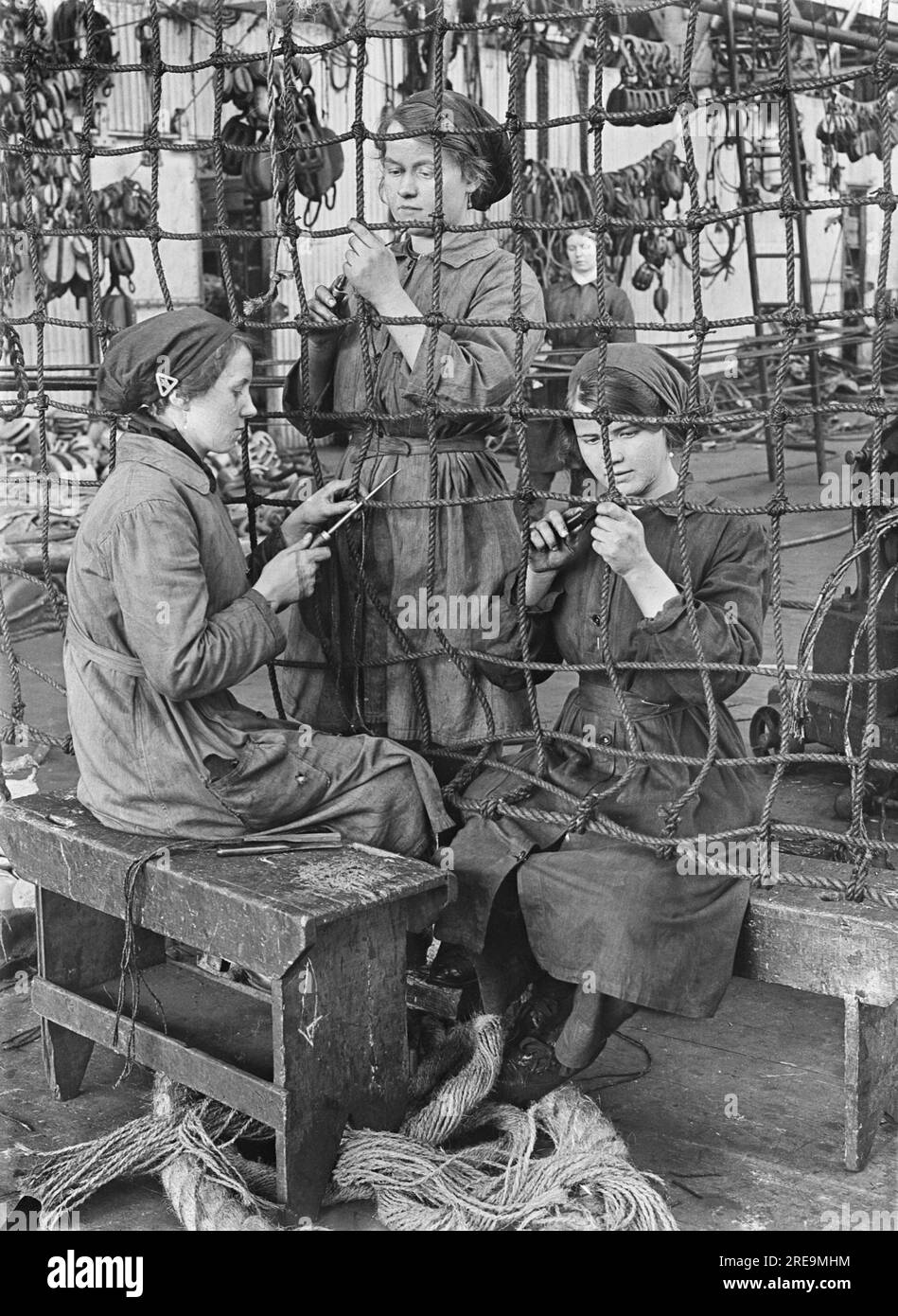 Horace Nicolls - The Shipbuilding Industry in Britain - Female workers splicing cargo netting in a naval rope workshop - 1914-1918 Stock Photohttps://www.alamy.com/image-license-details/?v=1https://www.alamy.com/horace-nicolls-the-shipbuilding-industry-in-britain-female-workers-splicing-cargo-netting-in-a-naval-rope-workshop-1914-1918-image559550704.html
Horace Nicolls - The Shipbuilding Industry in Britain - Female workers splicing cargo netting in a naval rope workshop - 1914-1918 Stock Photohttps://www.alamy.com/image-license-details/?v=1https://www.alamy.com/horace-nicolls-the-shipbuilding-industry-in-britain-female-workers-splicing-cargo-netting-in-a-naval-rope-workshop-1914-1918-image559550704.htmlRF2RE9MHM–Horace Nicolls - The Shipbuilding Industry in Britain - Female workers splicing cargo netting in a naval rope workshop - 1914-1918
 World War II Photo - Gen. Dwight D. Eisenhower gives the order of the day, Full victory, nothing less to paratroopers somewhere in England just before they board their planes to take part in the first assault in the invasion of the continent of Europe Stock Photohttps://www.alamy.com/image-license-details/?v=1https://www.alamy.com/world-war-ii-photo-gen-dwight-d-eisenhower-gives-the-order-of-the-day-full-victory-nothing-less-to-paratroopers-somewhere-in-england-just-before-they-board-their-planes-to-take-part-in-the-first-assault-in-the-invasion-of-the-continent-of-europe-image331901473.html
World War II Photo - Gen. Dwight D. Eisenhower gives the order of the day, Full victory, nothing less to paratroopers somewhere in England just before they board their planes to take part in the first assault in the invasion of the continent of Europe Stock Photohttps://www.alamy.com/image-license-details/?v=1https://www.alamy.com/world-war-ii-photo-gen-dwight-d-eisenhower-gives-the-order-of-the-day-full-victory-nothing-less-to-paratroopers-somewhere-in-england-just-before-they-board-their-planes-to-take-part-in-the-first-assault-in-the-invasion-of-the-continent-of-europe-image331901473.htmlRM2A7YBM1–World War II Photo - Gen. Dwight D. Eisenhower gives the order of the day, Full victory, nothing less to paratroopers somewhere in England just before they board their planes to take part in the first assault in the invasion of the continent of Europe
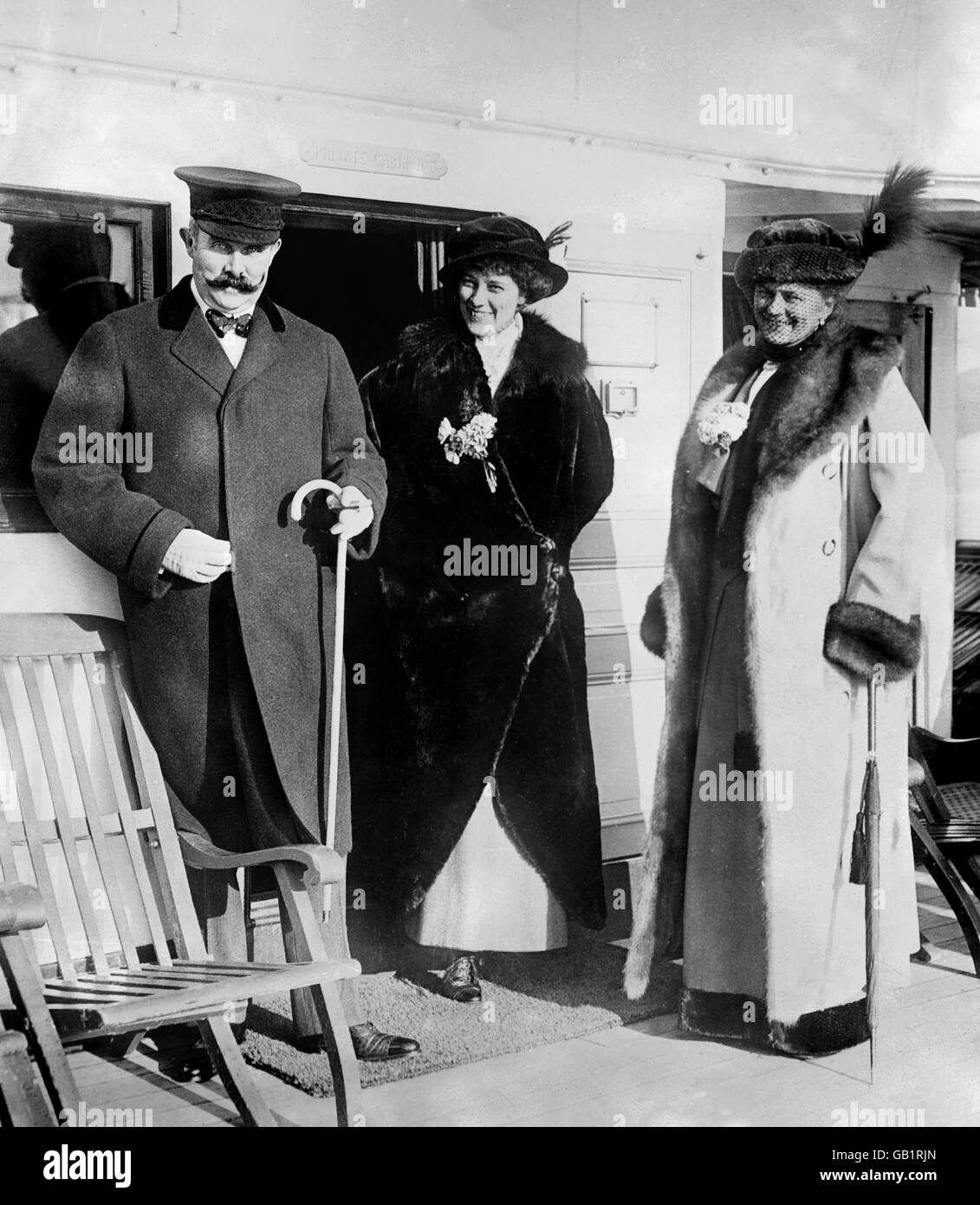 Archduke Franz Ferdinand of Austria (Franz Ferdinand Carl Ludwig Joseph Maria: 1863-1914). Franz Ferdinand's assassination in Sarajevo on 28th June 1914 was the trigger that started the First World War. This Photo shows (left to right) Franz Ferdinand, Countess Baillet de Latour and Sophie, Duchess of Hohenberg, the wife of Franz Ferdinand. Bain News Service, c.1913. Stock Photohttps://www.alamy.com/image-license-details/?v=1https://www.alamy.com/stock-photo-archduke-franz-ferdinand-of-austria-franz-ferdinand-carl-ludwig-joseph-110063933.html
Archduke Franz Ferdinand of Austria (Franz Ferdinand Carl Ludwig Joseph Maria: 1863-1914). Franz Ferdinand's assassination in Sarajevo on 28th June 1914 was the trigger that started the First World War. This Photo shows (left to right) Franz Ferdinand, Countess Baillet de Latour and Sophie, Duchess of Hohenberg, the wife of Franz Ferdinand. Bain News Service, c.1913. Stock Photohttps://www.alamy.com/image-license-details/?v=1https://www.alamy.com/stock-photo-archduke-franz-ferdinand-of-austria-franz-ferdinand-carl-ludwig-joseph-110063933.htmlRMGB1RJN–Archduke Franz Ferdinand of Austria (Franz Ferdinand Carl Ludwig Joseph Maria: 1863-1914). Franz Ferdinand's assassination in Sarajevo on 28th June 1914 was the trigger that started the First World War. This Photo shows (left to right) Franz Ferdinand, Countess Baillet de Latour and Sophie, Duchess of Hohenberg, the wife of Franz Ferdinand. Bain News Service, c.1913.
 Building for the aeronautical section of AEG, Hennigsdorf near Berlin. Artist: Anonymous Stock Photohttps://www.alamy.com/image-license-details/?v=1https://www.alamy.com/stock-photo-building-for-the-aeronautical-section-of-aeg-hennigsdorf-near-berlin-74098238.html
Building for the aeronautical section of AEG, Hennigsdorf near Berlin. Artist: Anonymous Stock Photohttps://www.alamy.com/image-license-details/?v=1https://www.alamy.com/stock-photo-building-for-the-aeronautical-section-of-aeg-hennigsdorf-near-berlin-74098238.htmlRME8FD1J–Building for the aeronautical section of AEG, Hennigsdorf near Berlin. Artist: Anonymous
 WW1 Refugees leaving Nieuport Belgium, vintage photograph from 1914 Stock Photohttps://www.alamy.com/image-license-details/?v=1https://www.alamy.com/ww1-refugees-leaving-nieuport-belgium-vintage-photograph-from-1914-image330937958.html
WW1 Refugees leaving Nieuport Belgium, vintage photograph from 1914 Stock Photohttps://www.alamy.com/image-license-details/?v=1https://www.alamy.com/ww1-refugees-leaving-nieuport-belgium-vintage-photograph-from-1914-image330937958.htmlRM2A6BEMP–WW1 Refugees leaving Nieuport Belgium, vintage photograph from 1914
 Italy. The image is of the famous Three Towers, known in German as Drei Zinnen but more poetically named in Italian as the Tre Cime di Laverado located in the Sexten-Sesto eastern region of the Italian Dolomites. During the First World War, known as the White War the peaks provided a natural barrier between the Italians and the warring Austrians, the front line running through the peaks. Stock Photohttps://www.alamy.com/image-license-details/?v=1https://www.alamy.com/italy-the-image-is-of-the-famous-three-towers-known-in-german-as-drei-zinnen-but-more-poetically-named-in-italian-as-the-tre-cime-di-laverado-located-in-the-sexten-sesto-eastern-region-of-the-italian-dolomites-during-the-first-world-war-known-as-the-white-war-the-peaks-provided-a-natural-barrier-between-the-italians-and-the-warring-austrians-the-front-line-running-through-the-peaks-image427816244.html
Italy. The image is of the famous Three Towers, known in German as Drei Zinnen but more poetically named in Italian as the Tre Cime di Laverado located in the Sexten-Sesto eastern region of the Italian Dolomites. During the First World War, known as the White War the peaks provided a natural barrier between the Italians and the warring Austrians, the front line running through the peaks. Stock Photohttps://www.alamy.com/image-license-details/?v=1https://www.alamy.com/italy-the-image-is-of-the-famous-three-towers-known-in-german-as-drei-zinnen-but-more-poetically-named-in-italian-as-the-tre-cime-di-laverado-located-in-the-sexten-sesto-eastern-region-of-the-italian-dolomites-during-the-first-world-war-known-as-the-white-war-the-peaks-provided-a-natural-barrier-between-the-italians-and-the-warring-austrians-the-front-line-running-through-the-peaks-image427816244.htmlRM2FT0KYG–Italy. The image is of the famous Three Towers, known in German as Drei Zinnen but more poetically named in Italian as the Tre Cime di Laverado located in the Sexten-Sesto eastern region of the Italian Dolomites. During the First World War, known as the White War the peaks provided a natural barrier between the Italians and the warring Austrians, the front line running through the peaks.
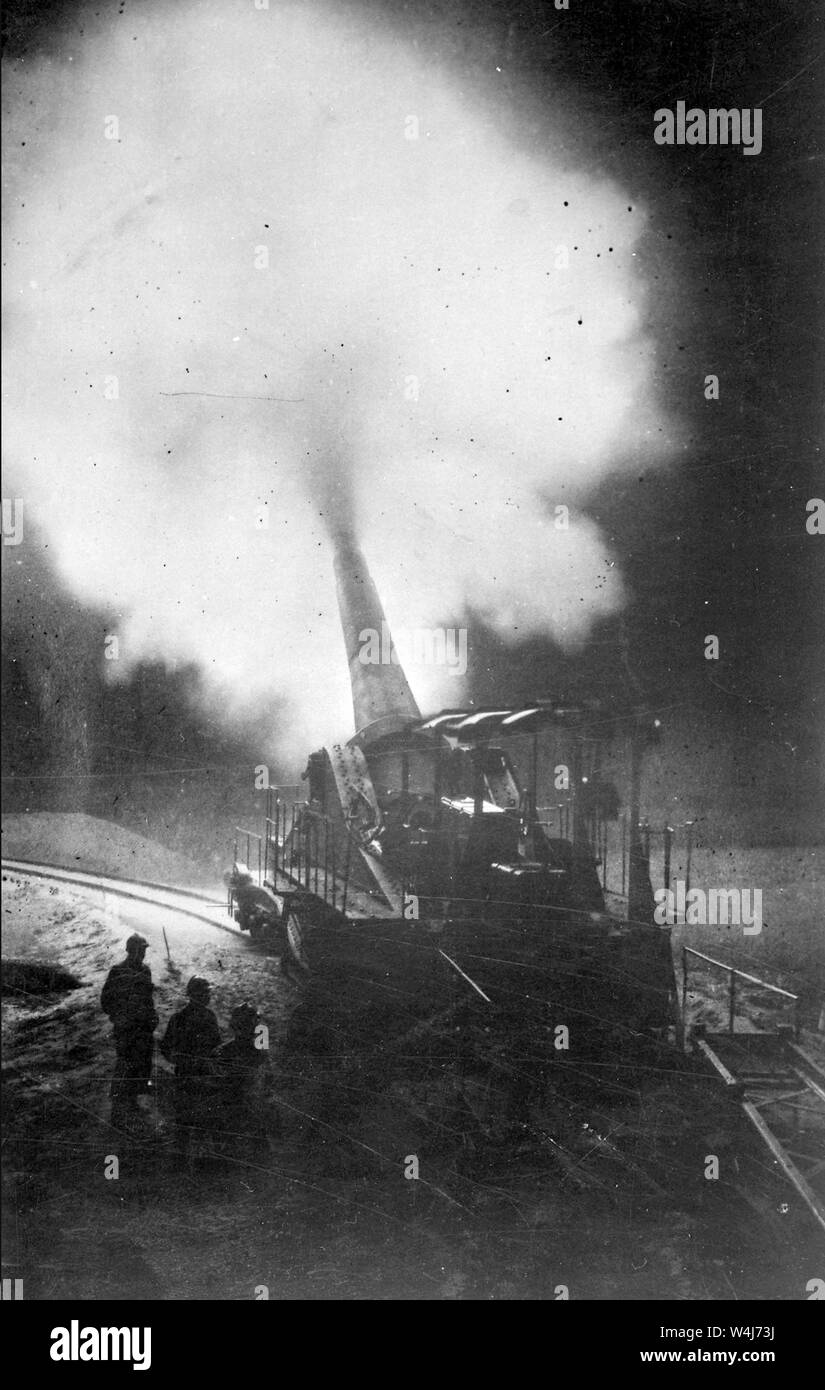 Powerful French gun, 320mm, firing during a night bombardment during World War One Stock Photohttps://www.alamy.com/image-license-details/?v=1https://www.alamy.com/powerful-french-gun-320mm-firing-during-a-night-bombardment-during-world-war-one-image261014870.html
Powerful French gun, 320mm, firing during a night bombardment during World War One Stock Photohttps://www.alamy.com/image-license-details/?v=1https://www.alamy.com/powerful-french-gun-320mm-firing-during-a-night-bombardment-during-world-war-one-image261014870.htmlRMW4J73J–Powerful French gun, 320mm, firing during a night bombardment during World War One
 The aftermath of V2 explosion. On the 8th September 1944 a huge explosion occured in Staveley Road, Chiswick, West London. There had been no siren, no warning and no V1 flying bombs had been sighted. The explosion was caused by the first V2 ballistic missile fired in anger. Hitler's much vaunted A4 Rocket more commonly known as the V2 weighed 13 tons and had arrived via the stratosphere at 3,000 miles an hour faster than the speed of sound. This meant that the first anybody knew about the attack was the explosion followed by the roar of the rocket motors catching up Stock Photohttps://www.alamy.com/image-license-details/?v=1https://www.alamy.com/stock-photo-the-aftermath-of-v2-explosion-on-the-8th-september-1944-a-huge-explosion-80497415.html
The aftermath of V2 explosion. On the 8th September 1944 a huge explosion occured in Staveley Road, Chiswick, West London. There had been no siren, no warning and no V1 flying bombs had been sighted. The explosion was caused by the first V2 ballistic missile fired in anger. Hitler's much vaunted A4 Rocket more commonly known as the V2 weighed 13 tons and had arrived via the stratosphere at 3,000 miles an hour faster than the speed of sound. This meant that the first anybody knew about the attack was the explosion followed by the roar of the rocket motors catching up Stock Photohttps://www.alamy.com/image-license-details/?v=1https://www.alamy.com/stock-photo-the-aftermath-of-v2-explosion-on-the-8th-september-1944-a-huge-explosion-80497415.htmlRMEJXY7K–The aftermath of V2 explosion. On the 8th September 1944 a huge explosion occured in Staveley Road, Chiswick, West London. There had been no siren, no warning and no V1 flying bombs had been sighted. The explosion was caused by the first V2 ballistic missile fired in anger. Hitler's much vaunted A4 Rocket more commonly known as the V2 weighed 13 tons and had arrived via the stratosphere at 3,000 miles an hour faster than the speed of sound. This meant that the first anybody knew about the attack was the explosion followed by the roar of the rocket motors catching up
 Isernia, Molise. Monument to the fallen of the First World War Stock Photohttps://www.alamy.com/image-license-details/?v=1https://www.alamy.com/isernia-molise-monument-to-the-fallen-of-the-first-world-war-image468677878.html
Isernia, Molise. Monument to the fallen of the First World War Stock Photohttps://www.alamy.com/image-license-details/?v=1https://www.alamy.com/isernia-molise-monument-to-the-fallen-of-the-first-world-war-image468677878.htmlRF2J6E3BJ–Isernia, Molise. Monument to the fallen of the First World War
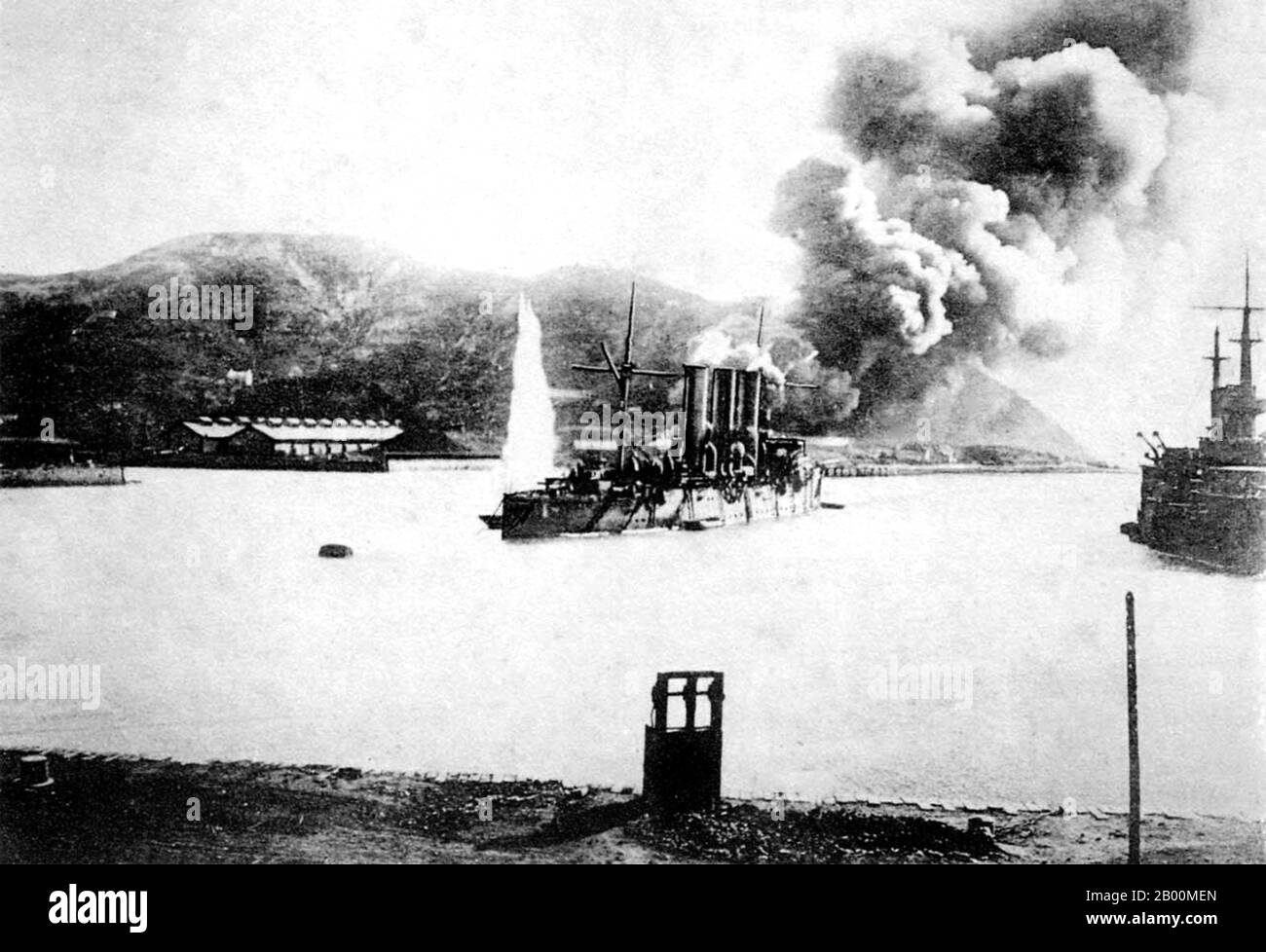 China: Fire at the Oil Depot in Port Arthur caused by Japanese Gunfire, 1905, (Russo-Japanese War, 8 February 1904 – 5 September 1905). The Russo-Japanese War (8 February 1904 – 5 September 1905) was the first great war of the 20th century which grew out of the rival imperial ambitions of the Russian Empire and Japanese Empire over Manchuria and Korea. The resulting campaigns, in which the Japanese military attained victory over the Russian forces arrayed against them, were unexpected by world observers. Stock Photohttps://www.alamy.com/image-license-details/?v=1https://www.alamy.com/china-fire-at-the-oil-depot-in-port-arthur-caused-by-japanese-gunfire-1905-russo-japanese-war-8-february-1904-5-september-1905-the-russo-japanese-war-8-february-1904-5-september-1905-was-the-first-great-war-of-the-20th-century-which-grew-out-of-the-rival-imperial-ambitions-of-the-russian-empire-and-japanese-empire-over-manchuria-and-korea-the-resulting-campaigns-in-which-the-japanese-military-attained-victory-over-the-russian-forces-arrayed-against-them-were-unexpected-by-world-observers-image344223453.html
China: Fire at the Oil Depot in Port Arthur caused by Japanese Gunfire, 1905, (Russo-Japanese War, 8 February 1904 – 5 September 1905). The Russo-Japanese War (8 February 1904 – 5 September 1905) was the first great war of the 20th century which grew out of the rival imperial ambitions of the Russian Empire and Japanese Empire over Manchuria and Korea. The resulting campaigns, in which the Japanese military attained victory over the Russian forces arrayed against them, were unexpected by world observers. Stock Photohttps://www.alamy.com/image-license-details/?v=1https://www.alamy.com/china-fire-at-the-oil-depot-in-port-arthur-caused-by-japanese-gunfire-1905-russo-japanese-war-8-february-1904-5-september-1905-the-russo-japanese-war-8-february-1904-5-september-1905-was-the-first-great-war-of-the-20th-century-which-grew-out-of-the-rival-imperial-ambitions-of-the-russian-empire-and-japanese-empire-over-manchuria-and-korea-the-resulting-campaigns-in-which-the-japanese-military-attained-victory-over-the-russian-forces-arrayed-against-them-were-unexpected-by-world-observers-image344223453.htmlRM2B00MEN–China: Fire at the Oil Depot in Port Arthur caused by Japanese Gunfire, 1905, (Russo-Japanese War, 8 February 1904 – 5 September 1905). The Russo-Japanese War (8 February 1904 – 5 September 1905) was the first great war of the 20th century which grew out of the rival imperial ambitions of the Russian Empire and Japanese Empire over Manchuria and Korea. The resulting campaigns, in which the Japanese military attained victory over the Russian forces arrayed against them, were unexpected by world observers.
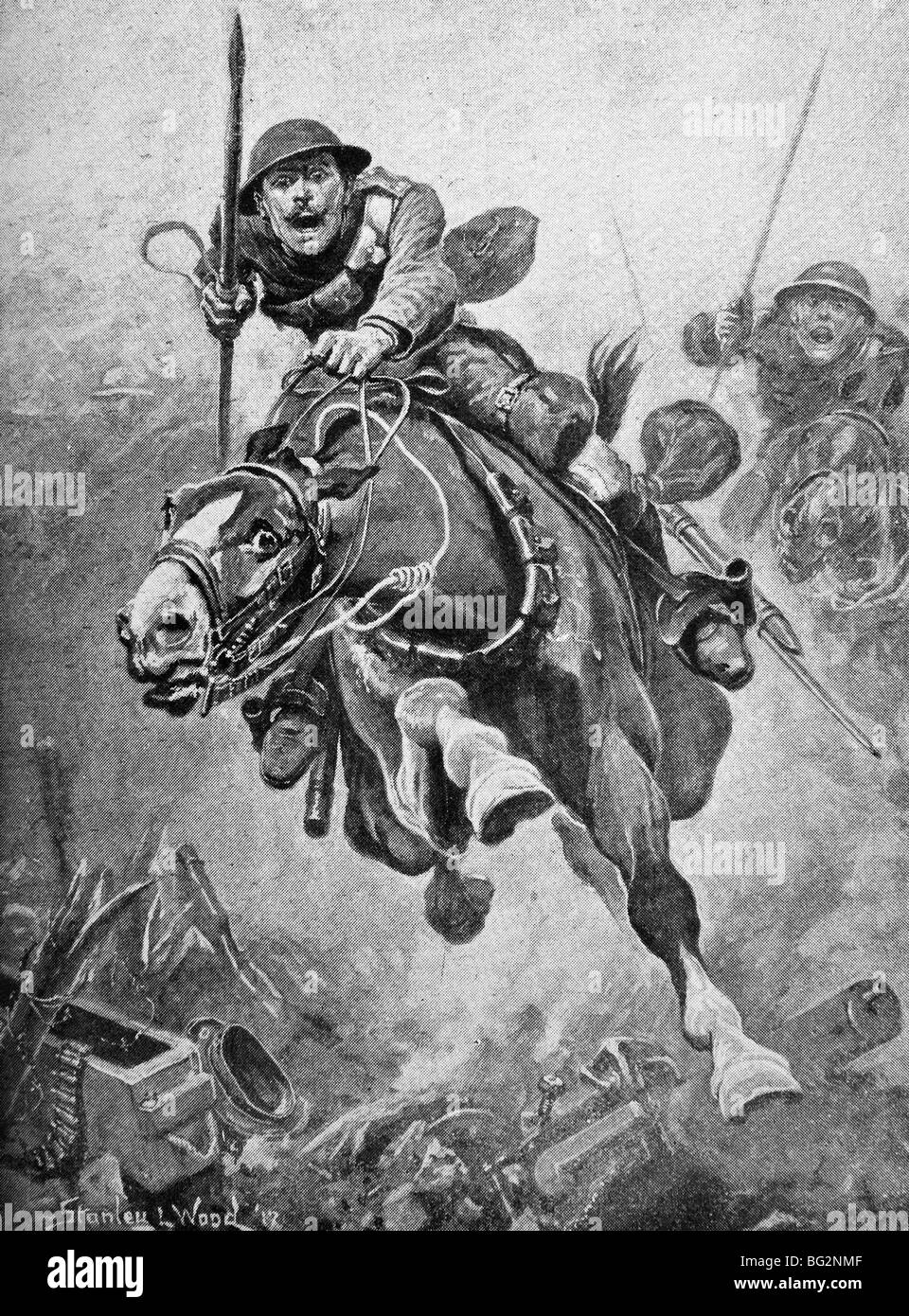 Contemporary World War One illustration of a cavalry charge by British troops in France. Stock Photohttps://www.alamy.com/image-license-details/?v=1https://www.alamy.com/stock-photo-contemporary-world-war-one-illustration-of-a-cavalry-charge-by-british-27105807.html
Contemporary World War One illustration of a cavalry charge by British troops in France. Stock Photohttps://www.alamy.com/image-license-details/?v=1https://www.alamy.com/stock-photo-contemporary-world-war-one-illustration-of-a-cavalry-charge-by-british-27105807.htmlRMBG2NMF–Contemporary World War One illustration of a cavalry charge by British troops in France.
 Female American Red Cross Worker stitching eye bandages on Sewing Machine in the American Red Cross Workrooms for Surgical Dressings, Rue de la Faisandere, Paris, France, Lewis Wickes Hine, American National Red Cross Photograph Collection, July 1918 Stock Photohttps://www.alamy.com/image-license-details/?v=1https://www.alamy.com/female-american-red-cross-worker-stitching-eye-bandages-on-sewing-machine-in-the-american-red-cross-workrooms-for-surgical-dressings-rue-de-la-faisandere-paris-france-lewis-wickes-hine-american-national-red-cross-photograph-collection-july-1918-image353481309.html
Female American Red Cross Worker stitching eye bandages on Sewing Machine in the American Red Cross Workrooms for Surgical Dressings, Rue de la Faisandere, Paris, France, Lewis Wickes Hine, American National Red Cross Photograph Collection, July 1918 Stock Photohttps://www.alamy.com/image-license-details/?v=1https://www.alamy.com/female-american-red-cross-worker-stitching-eye-bandages-on-sewing-machine-in-the-american-red-cross-workrooms-for-surgical-dressings-rue-de-la-faisandere-paris-france-lewis-wickes-hine-american-national-red-cross-photograph-collection-july-1918-image353481309.htmlRM2BF2D0D–Female American Red Cross Worker stitching eye bandages on Sewing Machine in the American Red Cross Workrooms for Surgical Dressings, Rue de la Faisandere, Paris, France, Lewis Wickes Hine, American National Red Cross Photograph Collection, July 1918